September 12, 2021
Martha O'Kennon
Aaaaaaaaaaaaahhhhhh. A week of coolth. Oh and how we have needed that. Open windows. No air conditioning.
The Fall Phlox (both wild and cultivated) have reached their peak and are beginning to slow down a bit. The Tall Evening Primrose wait until I have turned in to bloom but Nature and I have outfoxed them temporarily: they are still blooming in the late morning. And the Asters are hitting their stride. Soon the Monarchs will be visiting them!
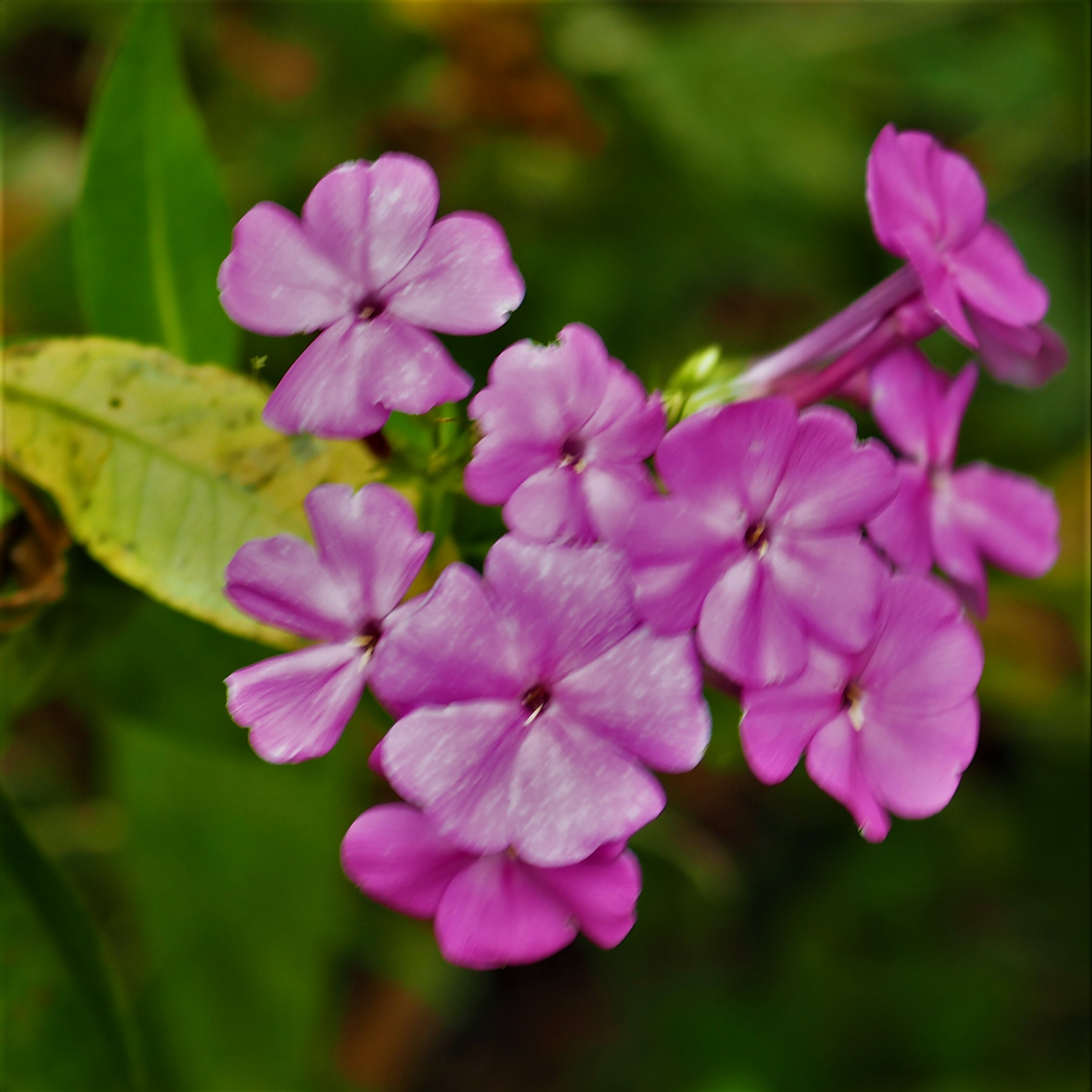

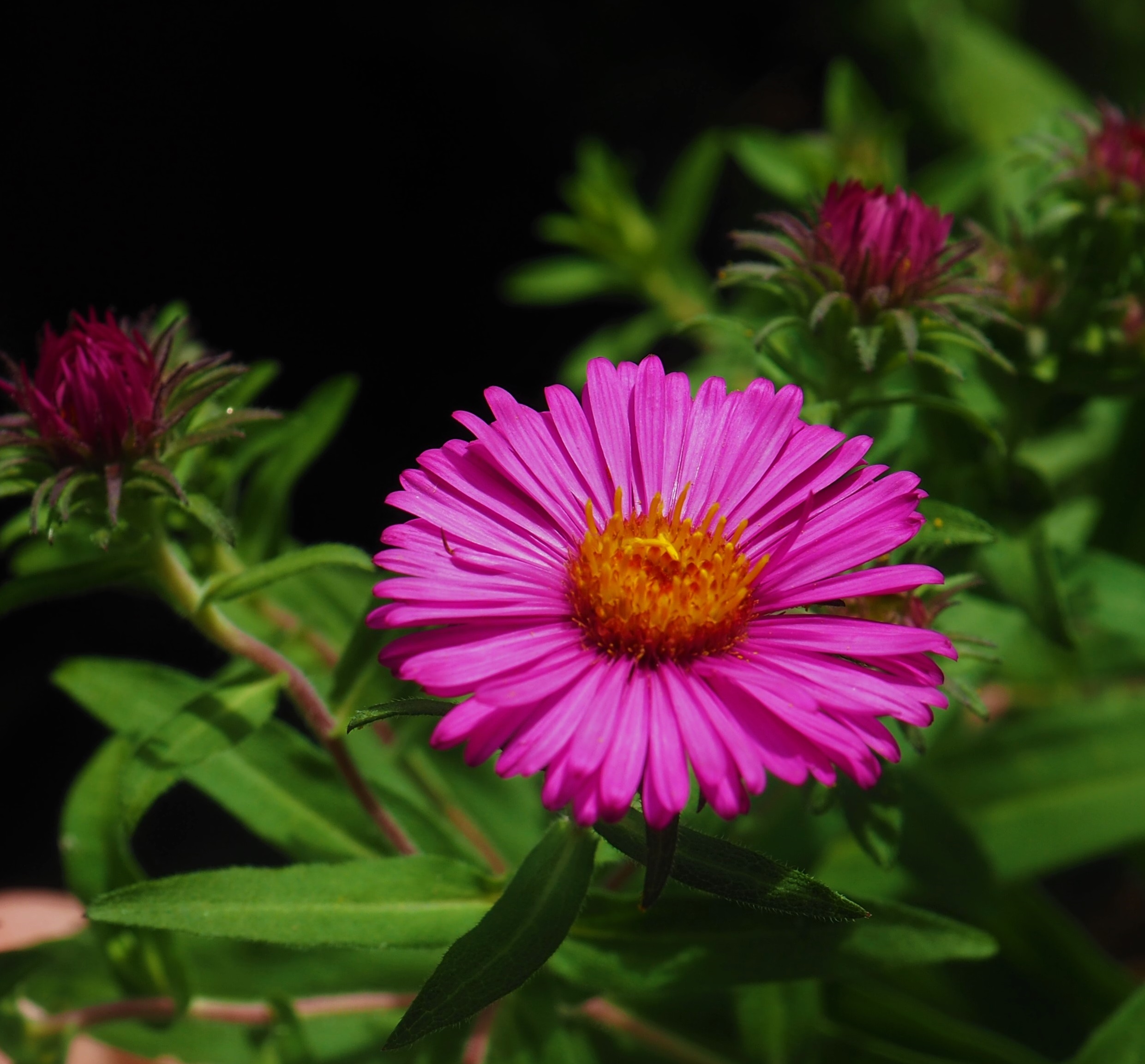
Remember that there is information in the name of the file for each image. You can see it by mousing over the
image - look at the lower left of the screen. Or you can click on the image to get to the (usually) larger image.
Then the info is displayed in the address line above. Sometimes the second click will actually display a
different view of the original image.
The ants have been slowing down a bit too. Here are a Smaller Carpenter Ant; a Small Honey Ant and a mystery Carpenter Ant, probably the Eastern Black Carpenter. If you want to see a LOT of Small Honeys, look at the top of the Redbud leaves. It seems as if each leaf has its own Small Honey Ant!
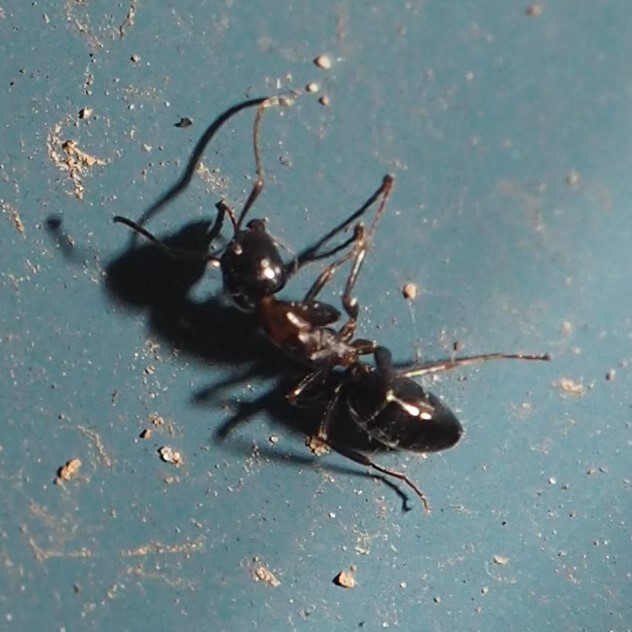
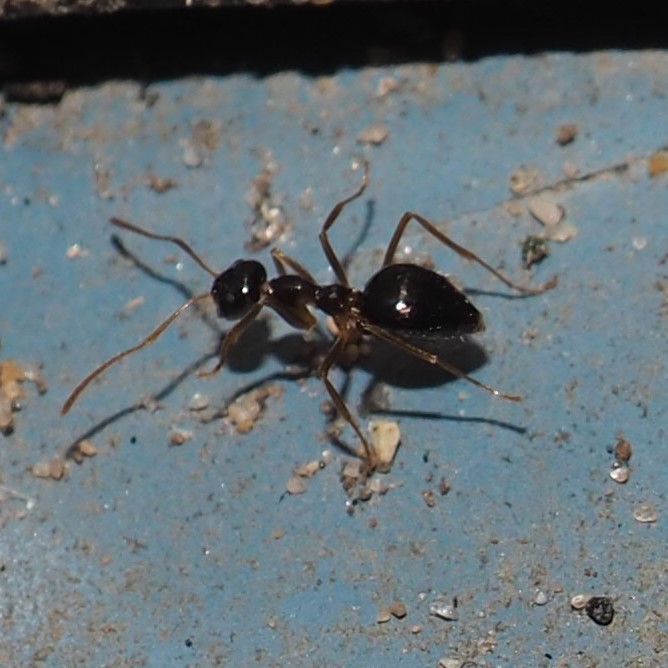
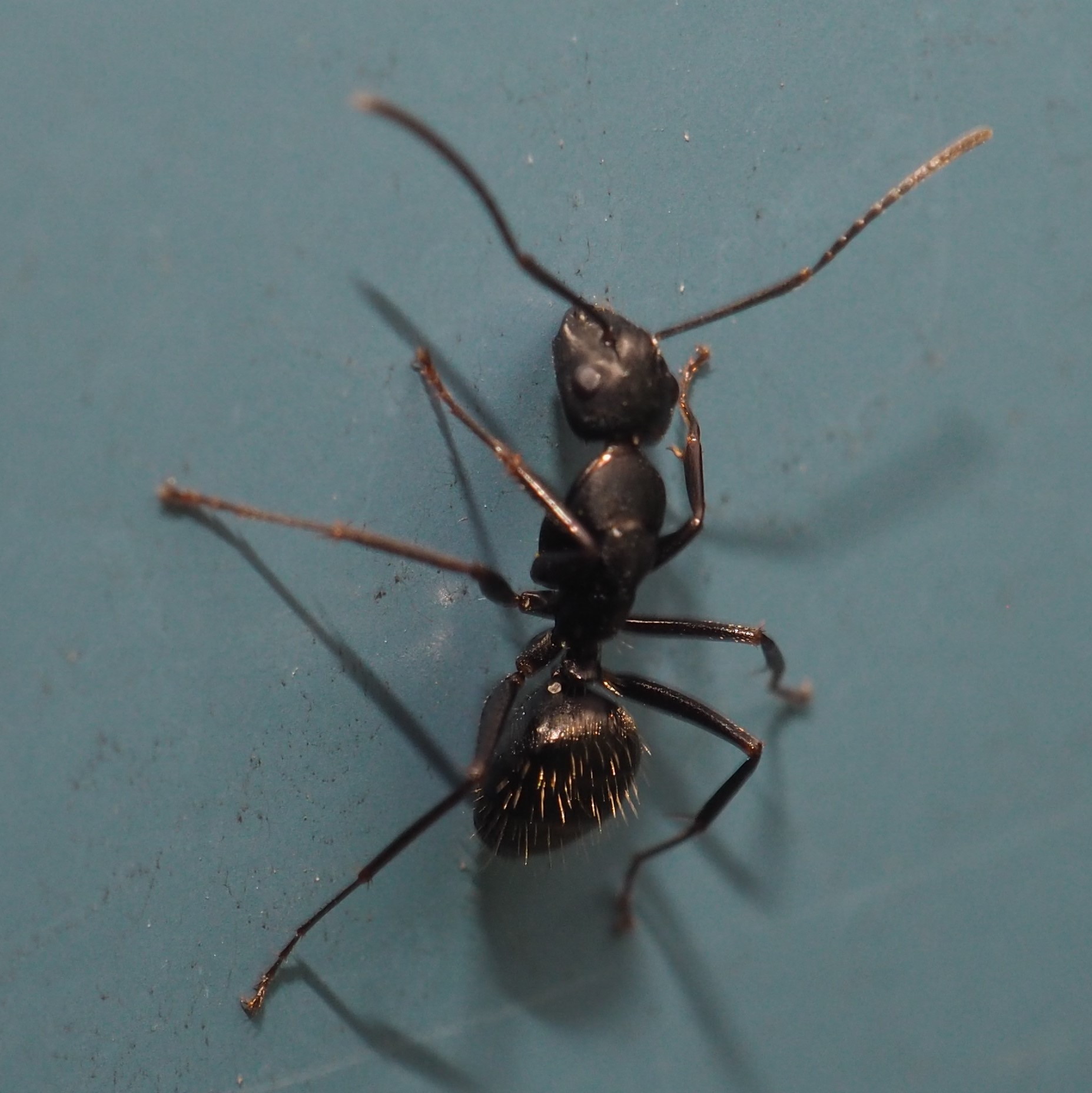
The faithful few Barklice (Graphopsocus cruciatus and Polypsocus corruptus) continue to populate the Walls. Here are G. cruciatus (adult, then nymph), and a family shot of P. corruptus. They are all mostly to be seen on the North and/or South Walls.
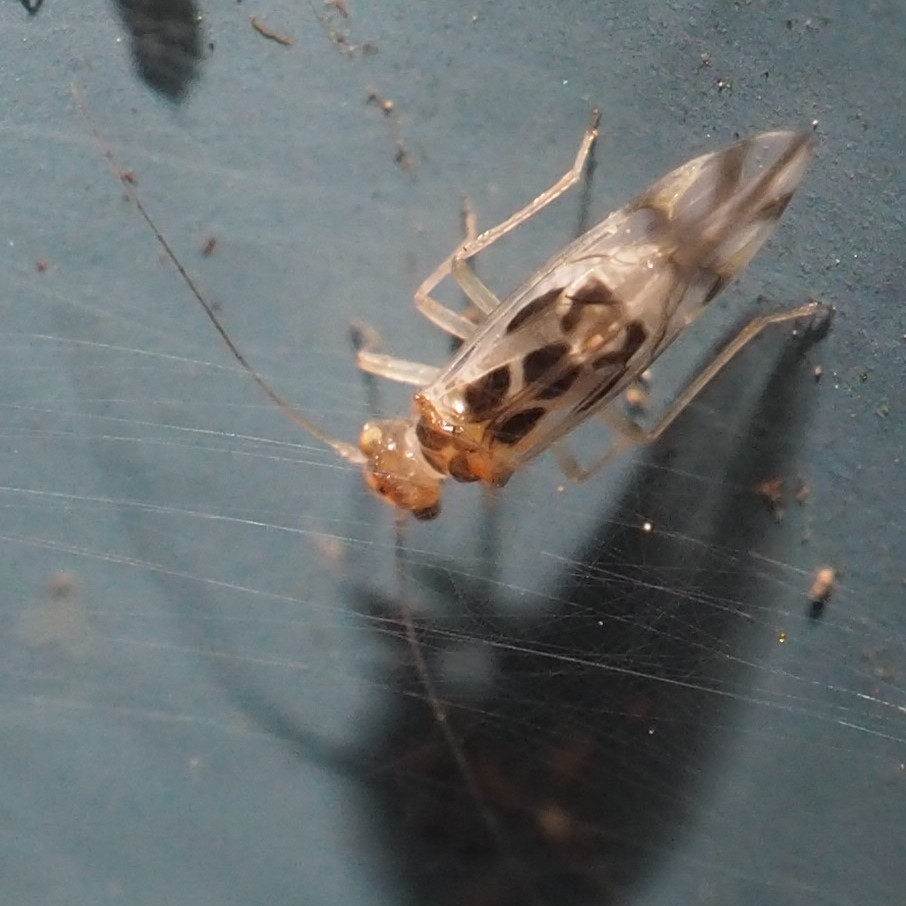
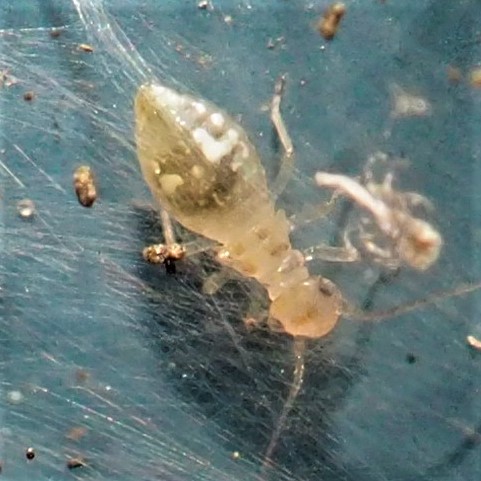
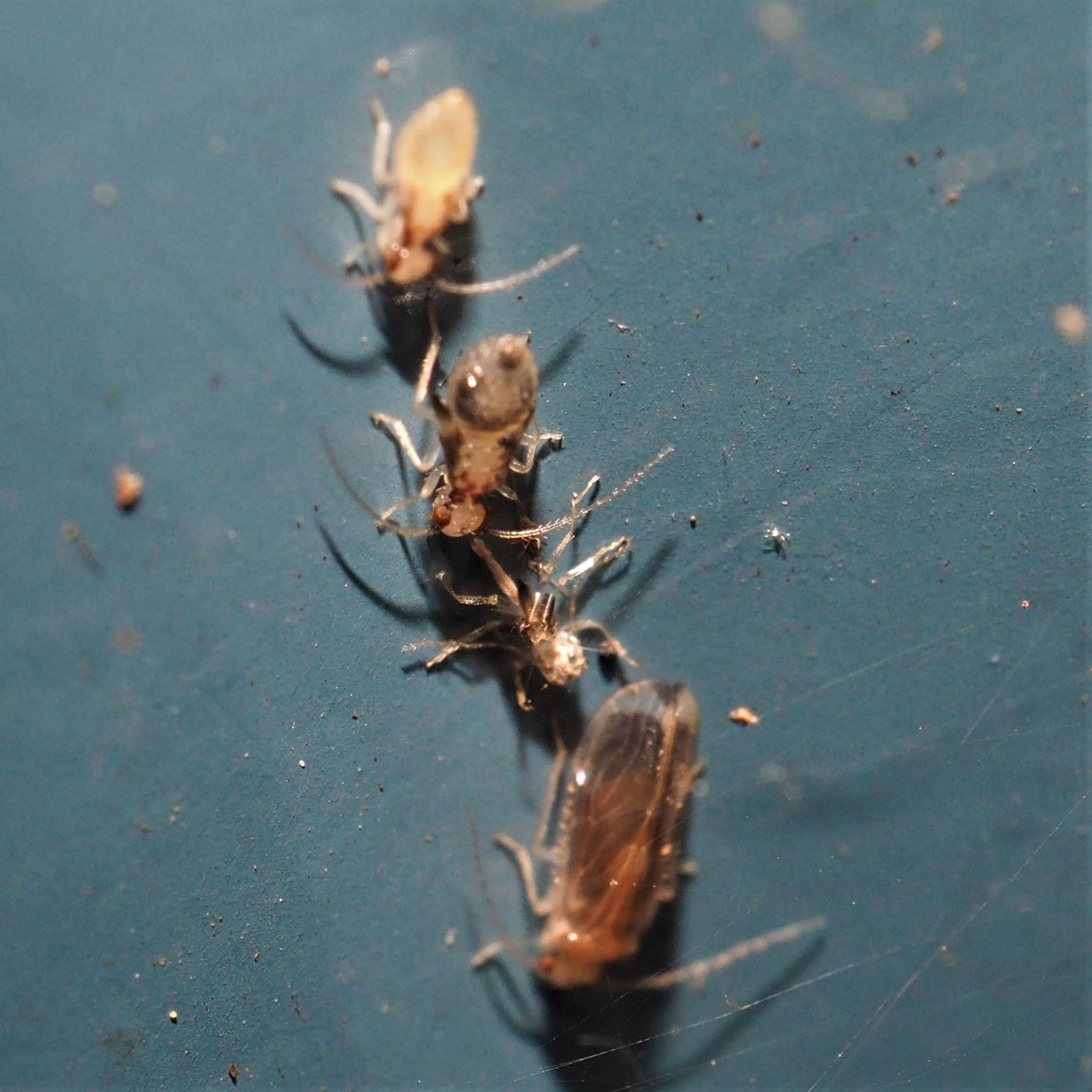
The family of Ectopsocus meridionalis mostly inhabit the North Wall. In picture 2, the Adult and a couple of nymphs seem to be recycling the nutritive and protective layer from a nest of already-hatched eggs. Third shows an Adult going over and over her new-laid eggs with said protective layer.

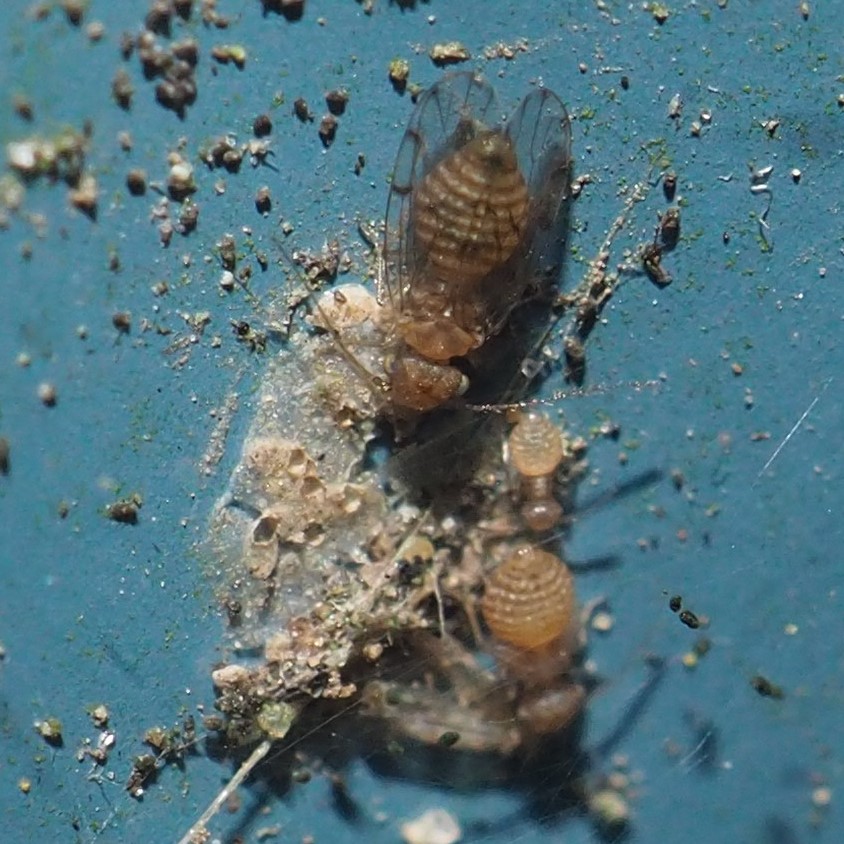
Third shows an Adult going over and over her new-laid eggs with said protective layer.
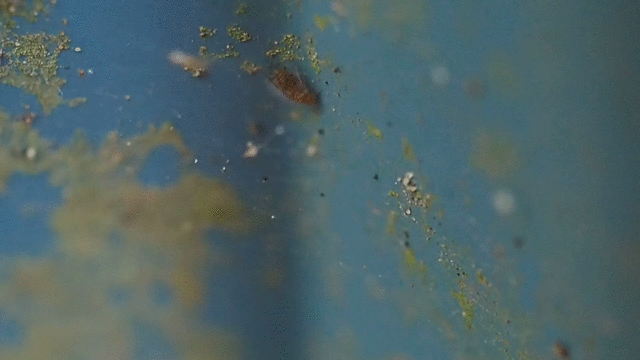
The Echmepteryx hageni are fairly frequent these days. Here is an adult. Nymphs that look like picture 2 were found on the upper panels of the North Wall. Picture 3 depicts a usual nymph of E. hageni. I think we have a match..
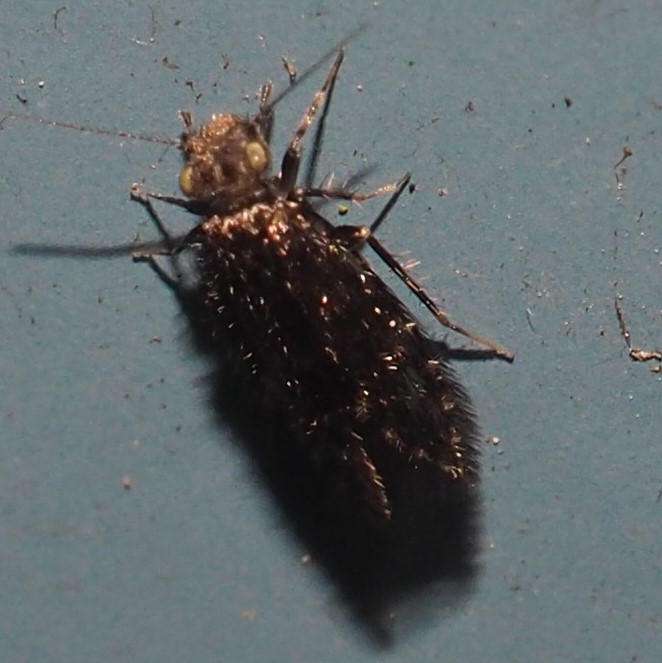
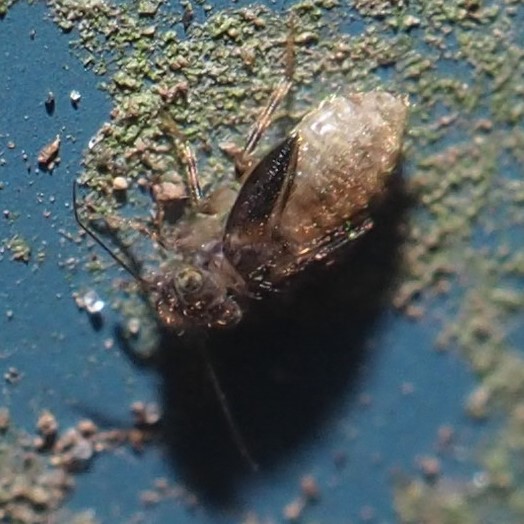

Last week we had a visitor which Diane Young identified as Teliapsocus conterminus (picture 1). At the same time I was finding 6 or 7 nymphs (of Something) that looked like picture 2. Diane says that many kinds of Barklice coat themselves with debris. These seemed to fit that description. Third shows a certain one that Diane pointed out as a Teliapsocus conterminus nymph. I'm hoping that we can isolate another instar of T. conterminus in the days to follow.
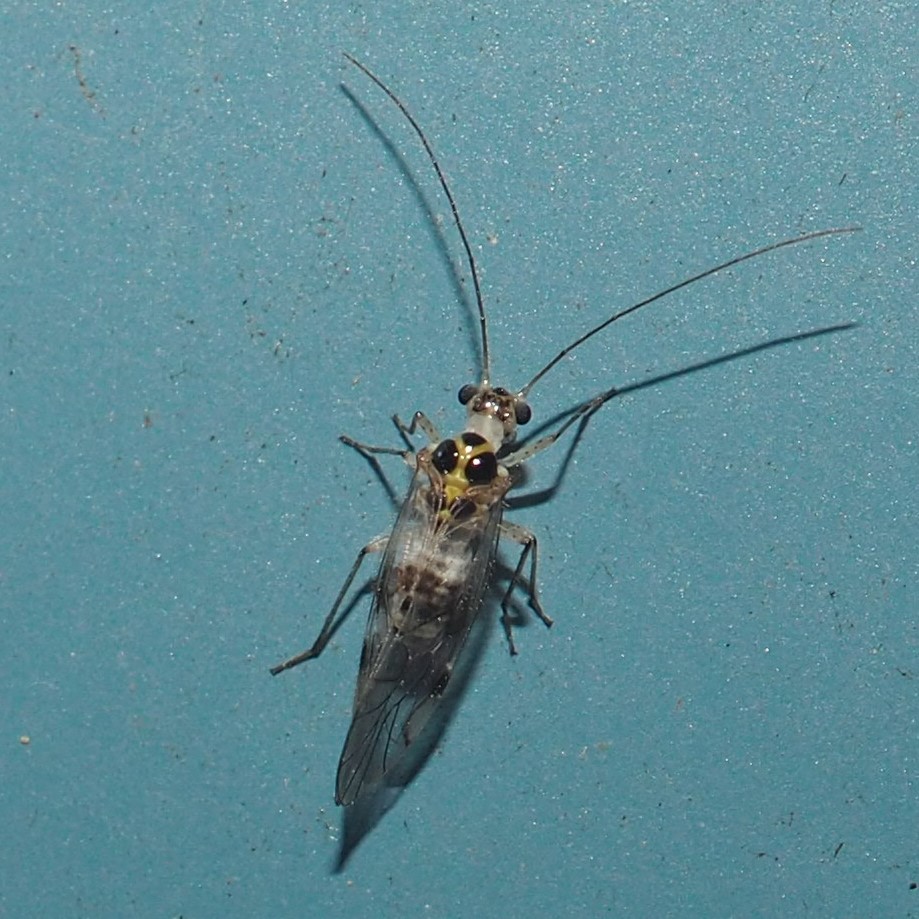
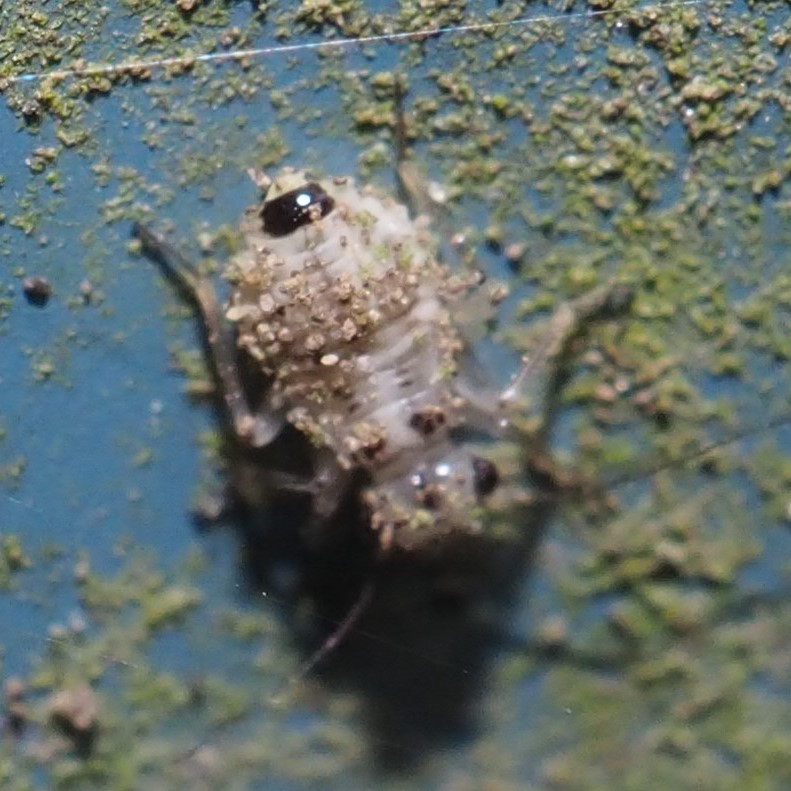
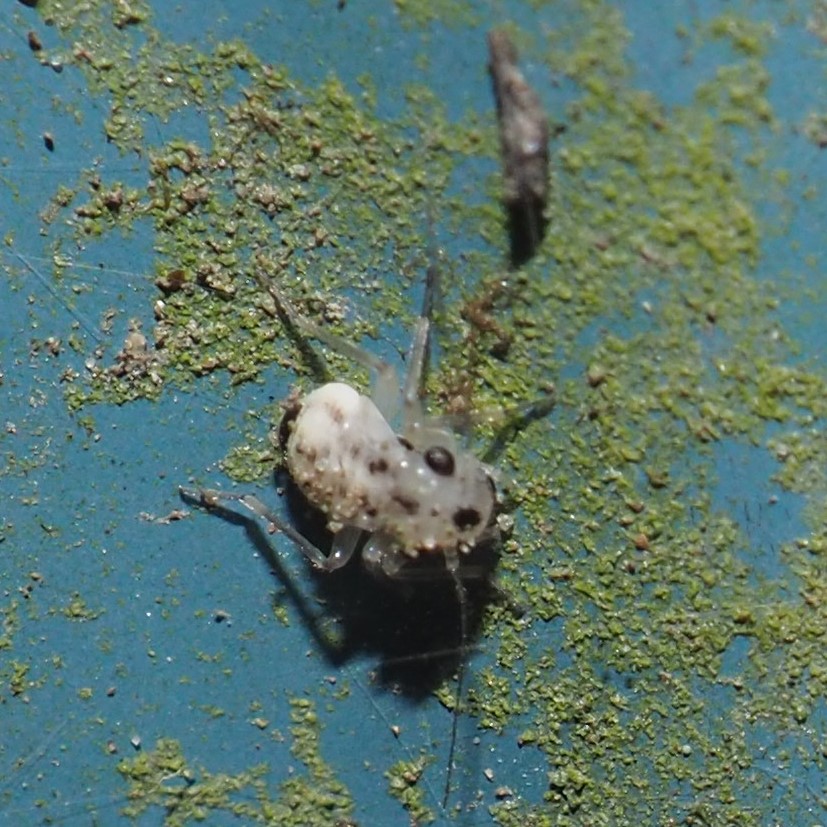
Another mystery Barklouse that showed up last week was this one, which Diane recognized as Loensia moesta. I had been puzzling how similar the wing markings were to this other Barklouse, Trichadenotecnum alexanderae (picture 2). In fact, one T. alexanderae showed up on the East Wall a couple of days ago (picture 3). I went through the family tree of these two genera, Loensia and Trichadenotecnum, and found that they are sibling Genera. So no wonder!
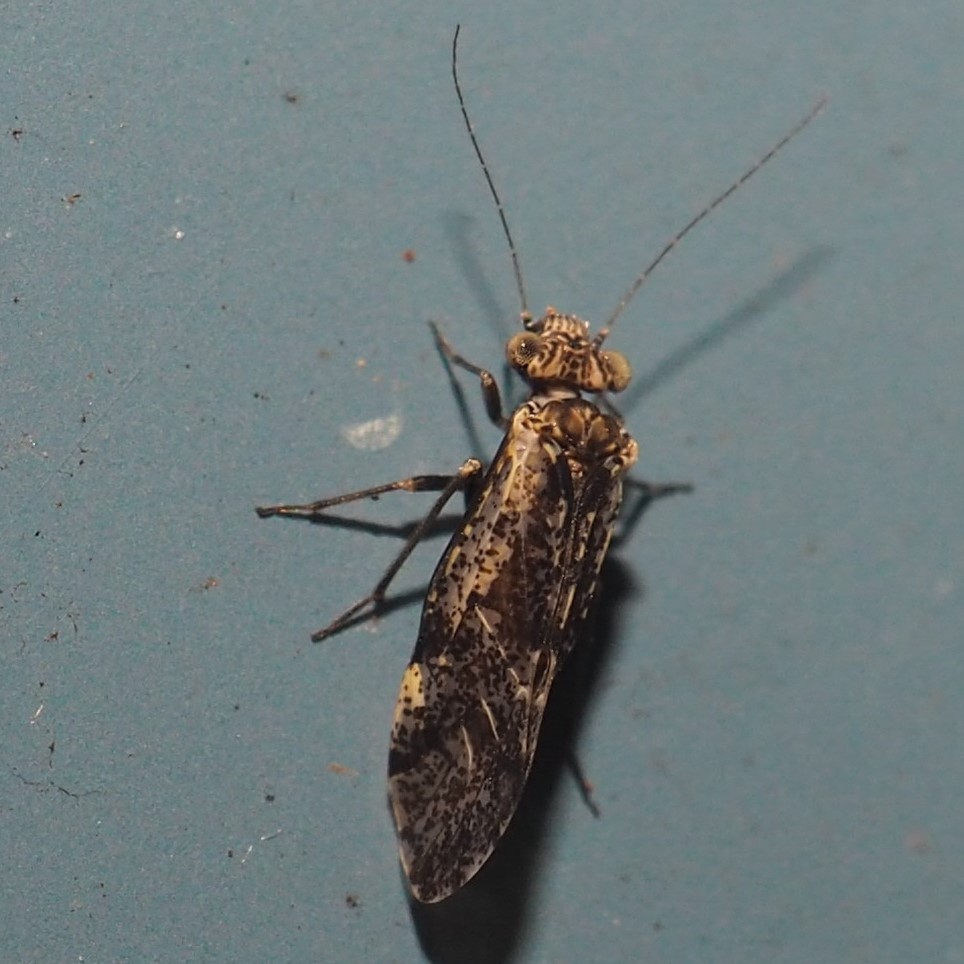
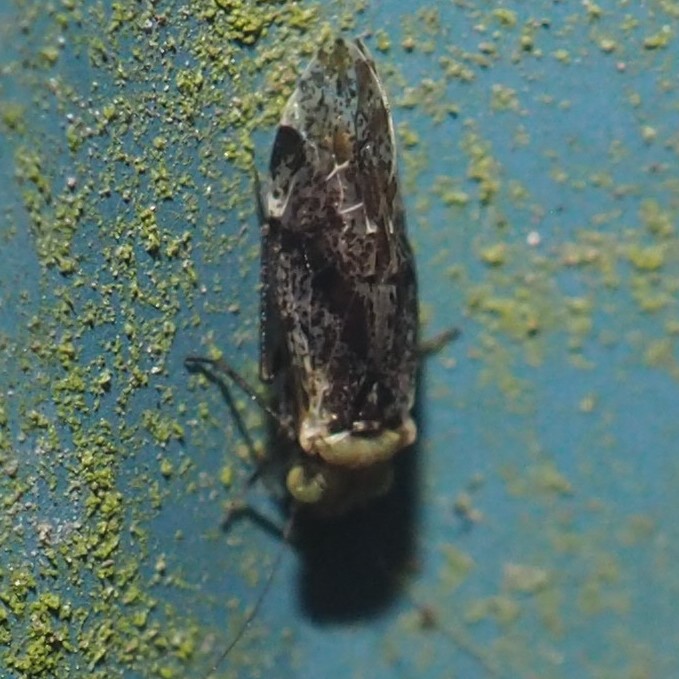

There were quite a few bees, but I couldn't identify them - here's the lot. First up, Andrena nubecula, a Cloudy-winged Mining Bee. Then another Mystery, and finally another Mystery Bee - look at all the pollen grains it has inside its wings!
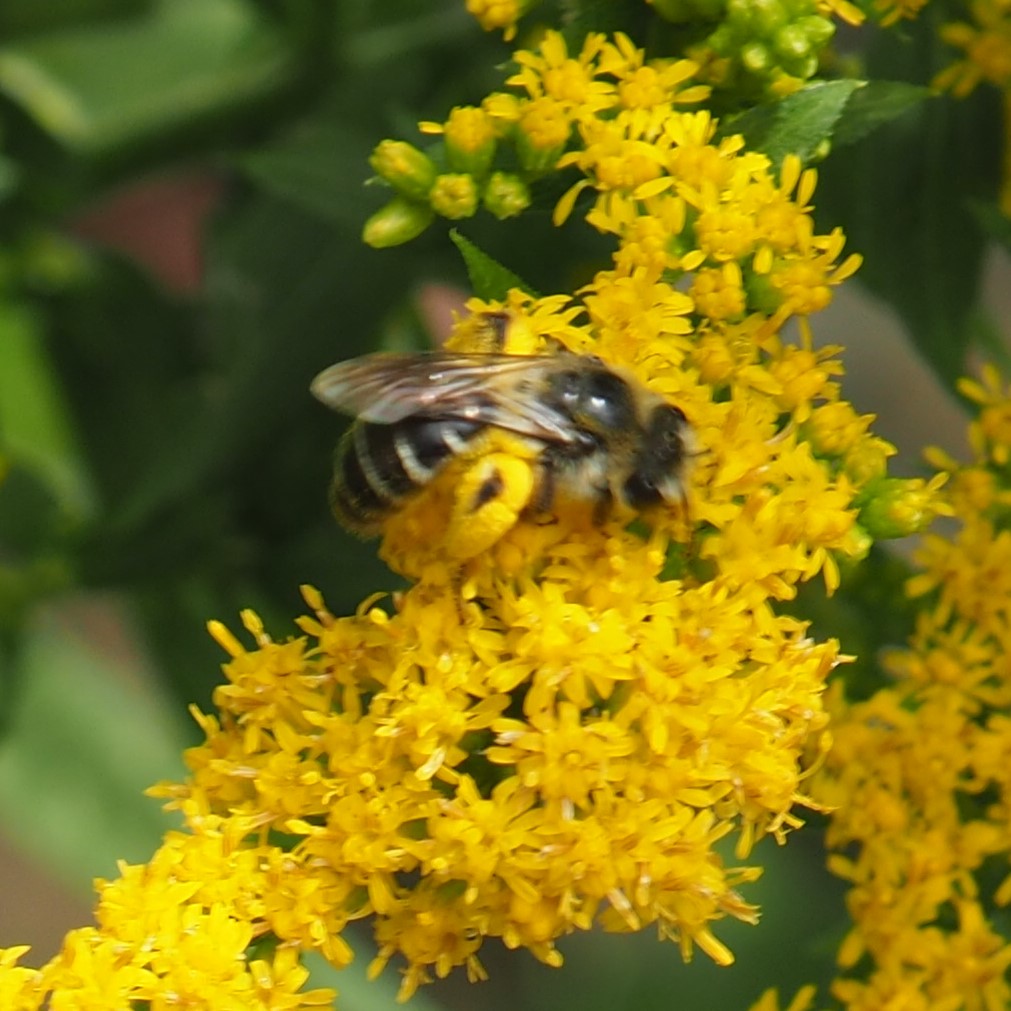
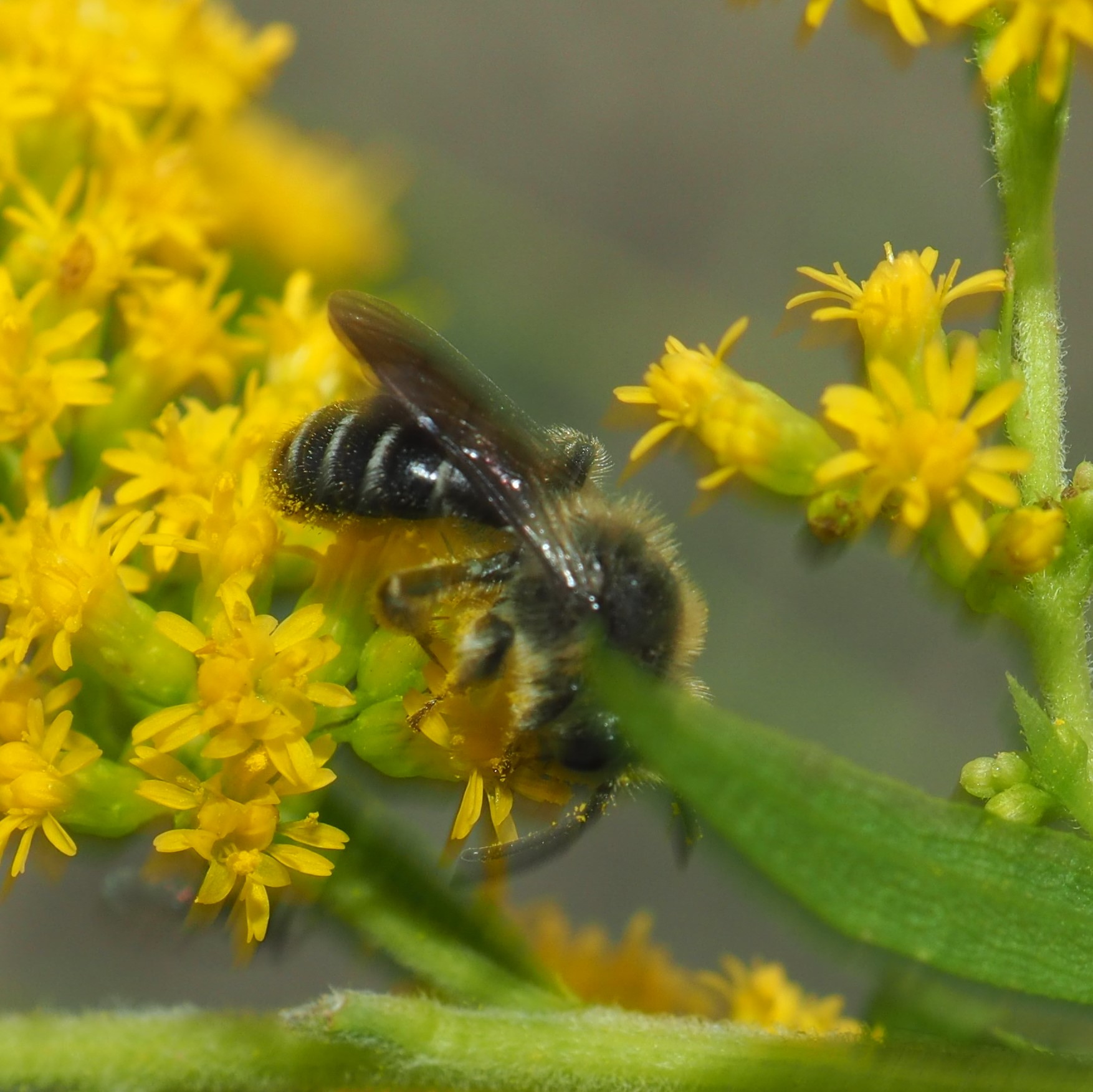
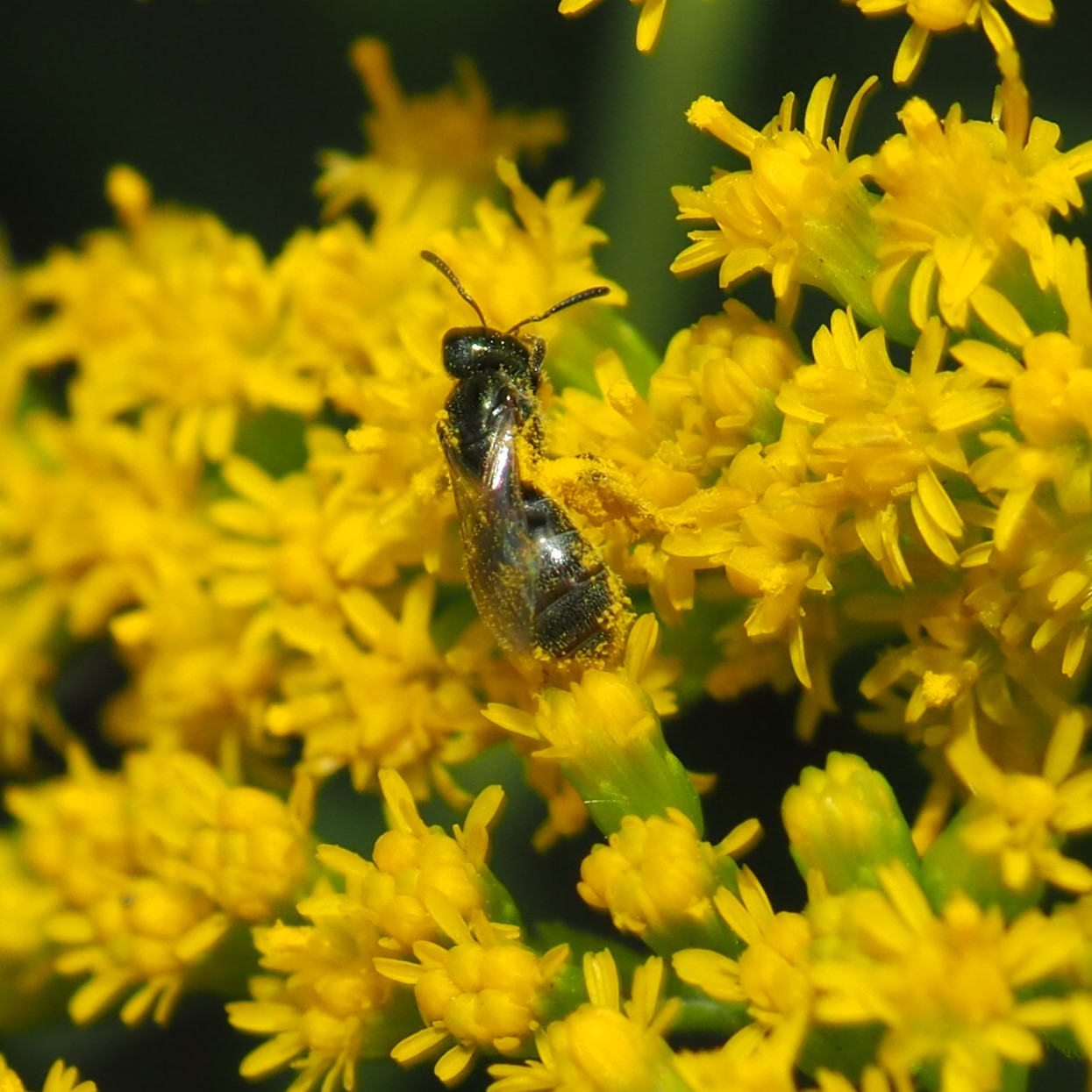
On to the Beetles! Of course, it seems to be Lady Beetle Time, so here are three differently-decorated Asian Lady Beetles.. Note: they all have the W pattern on their foreheads.
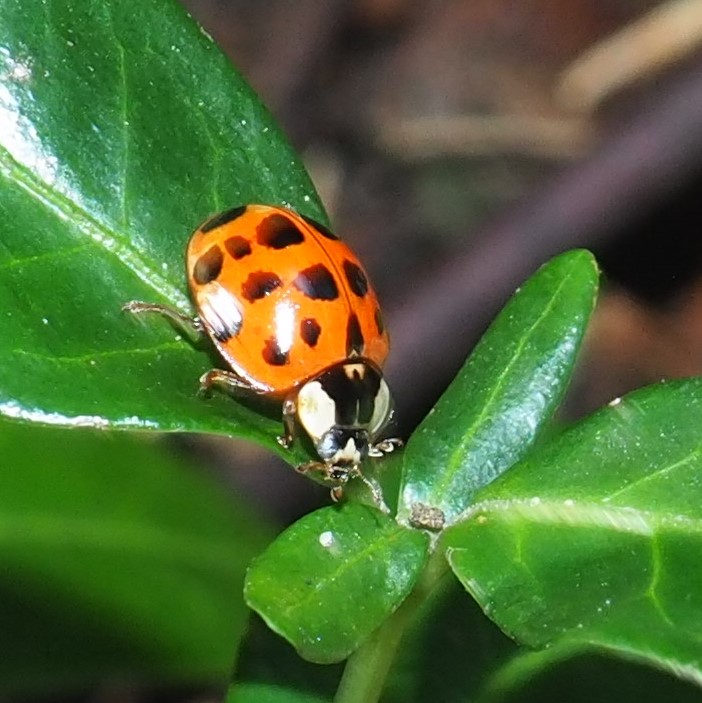
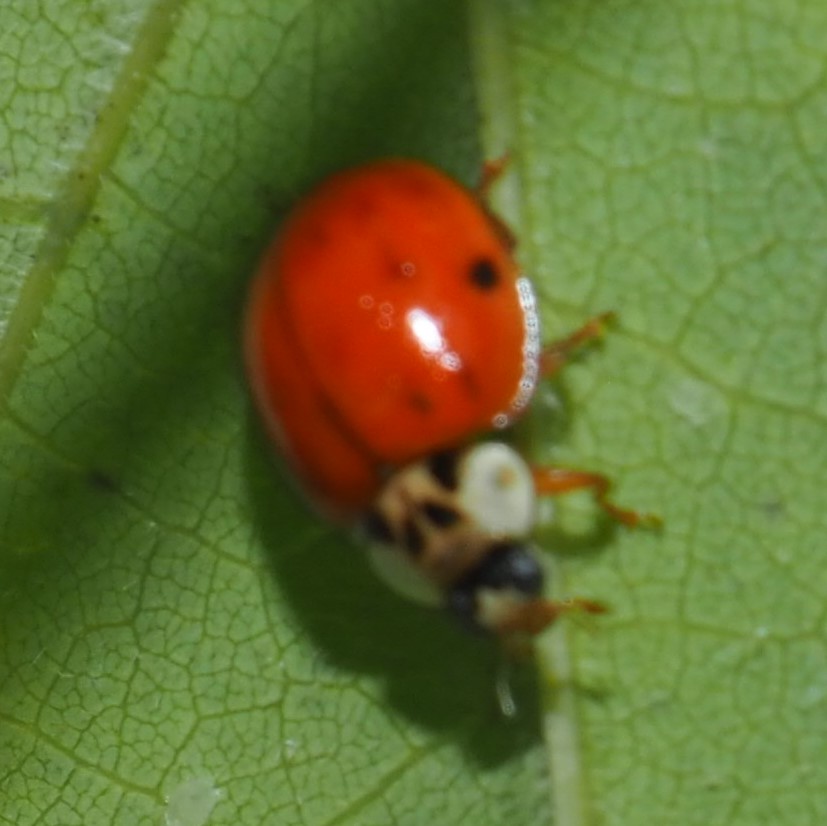
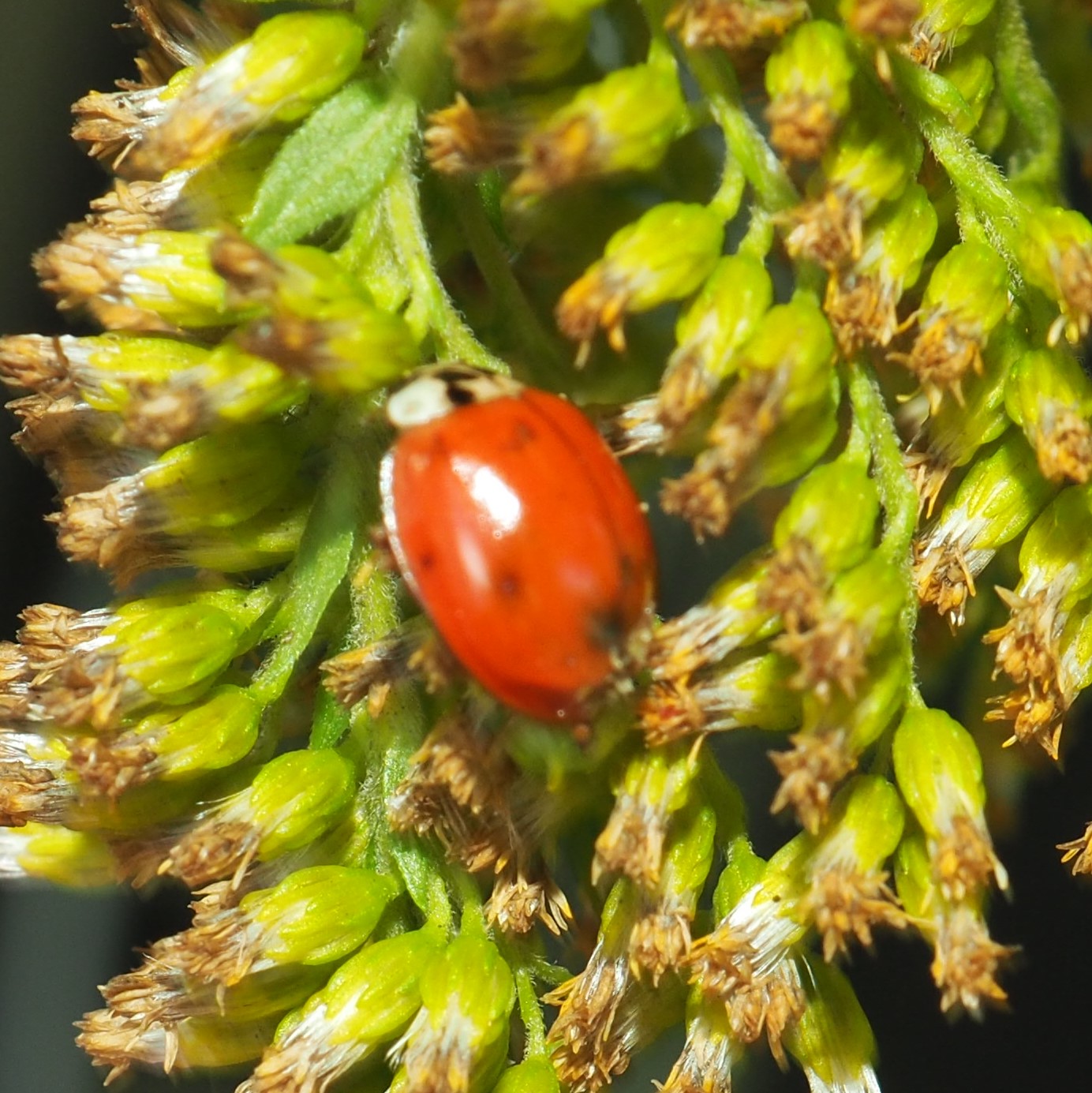
I just sent this one in to iNat so don't have much of a clue about this Beetle. It almost reminds me (well, it did) of the story of the three blind men who feel of an elephant to figure out what it is. It turns out to be
Madarellus undulatus, a member of Flower Weevils. This was identified by Boris Buche and Samuel Brown of iNat.
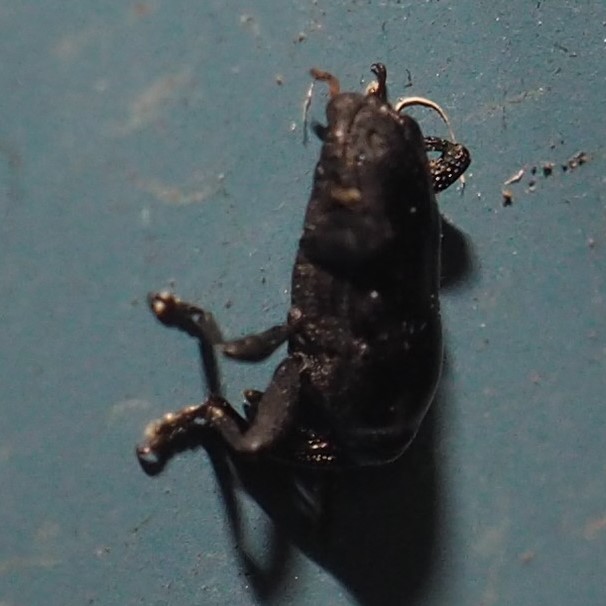
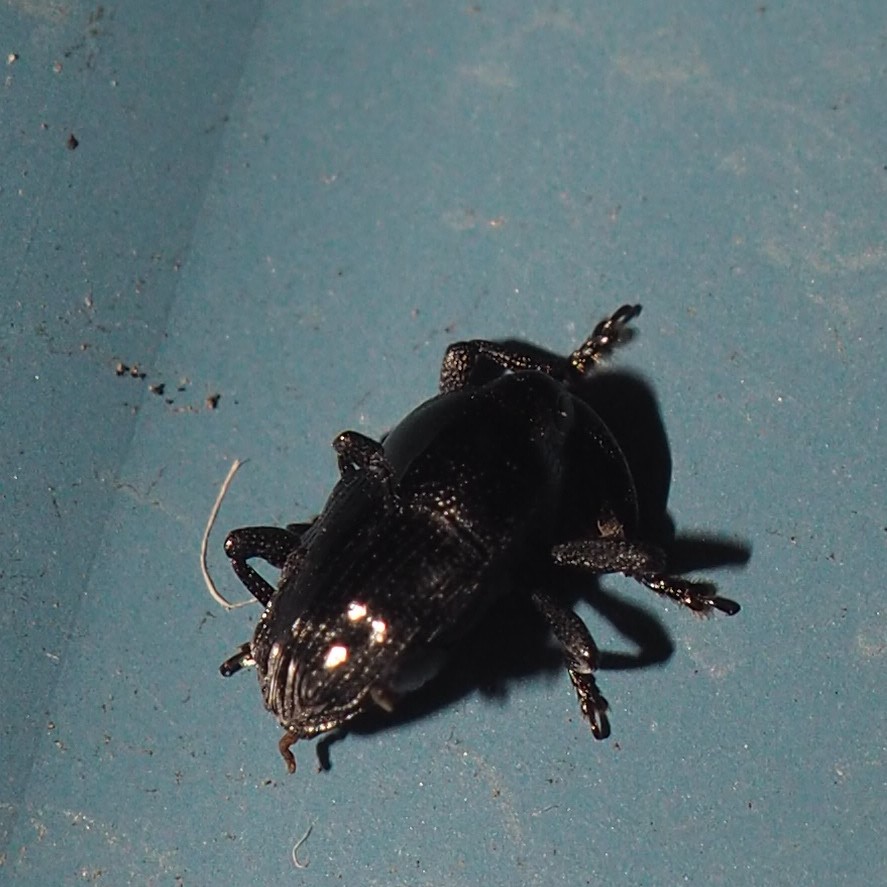
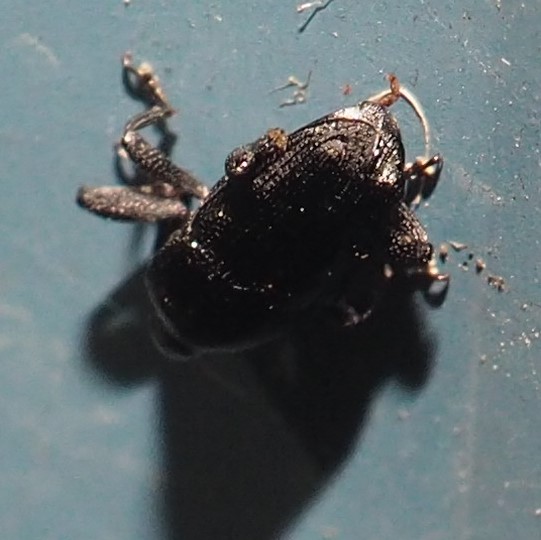
Here is one we saw last week, well, almost a month ago, but it came back to visit again. It is an Ant-like Leaf Beetle called Emelinus melsheimeri. Second is a tiny greenish Flea Beetle. Third is something so weird I can hardly describe it. But Last is a pair of Locust Borer Beetles. They were so well camouflaged in the Goldenrod that I almost walked right by them!

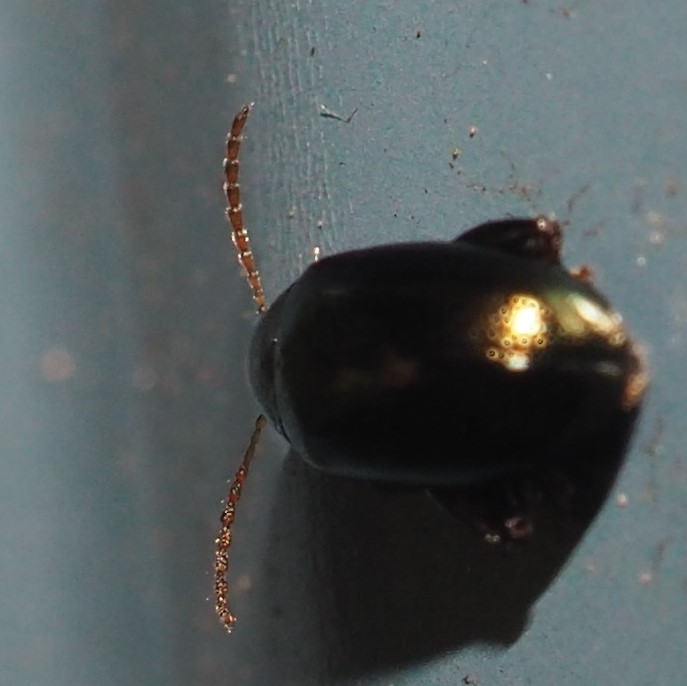


How can there be so many Beetles that all combine a red spot, black basic shape, maybe a brightly colored leg? I do believe that picture 2 contains the face of a person aiming a camera at me?

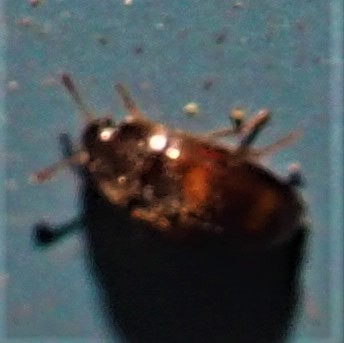


Why do I always start off with pictures of Assassins or Ambushers? I tried to think of a good reason. But I think it's simply a matter of the Alphabet! Here is an Ambush Bug with its big claw at the ready, hoping for some juicy small creature to come to the Goldenrod's sweet flowers. Another with its most beloved. And yet another.
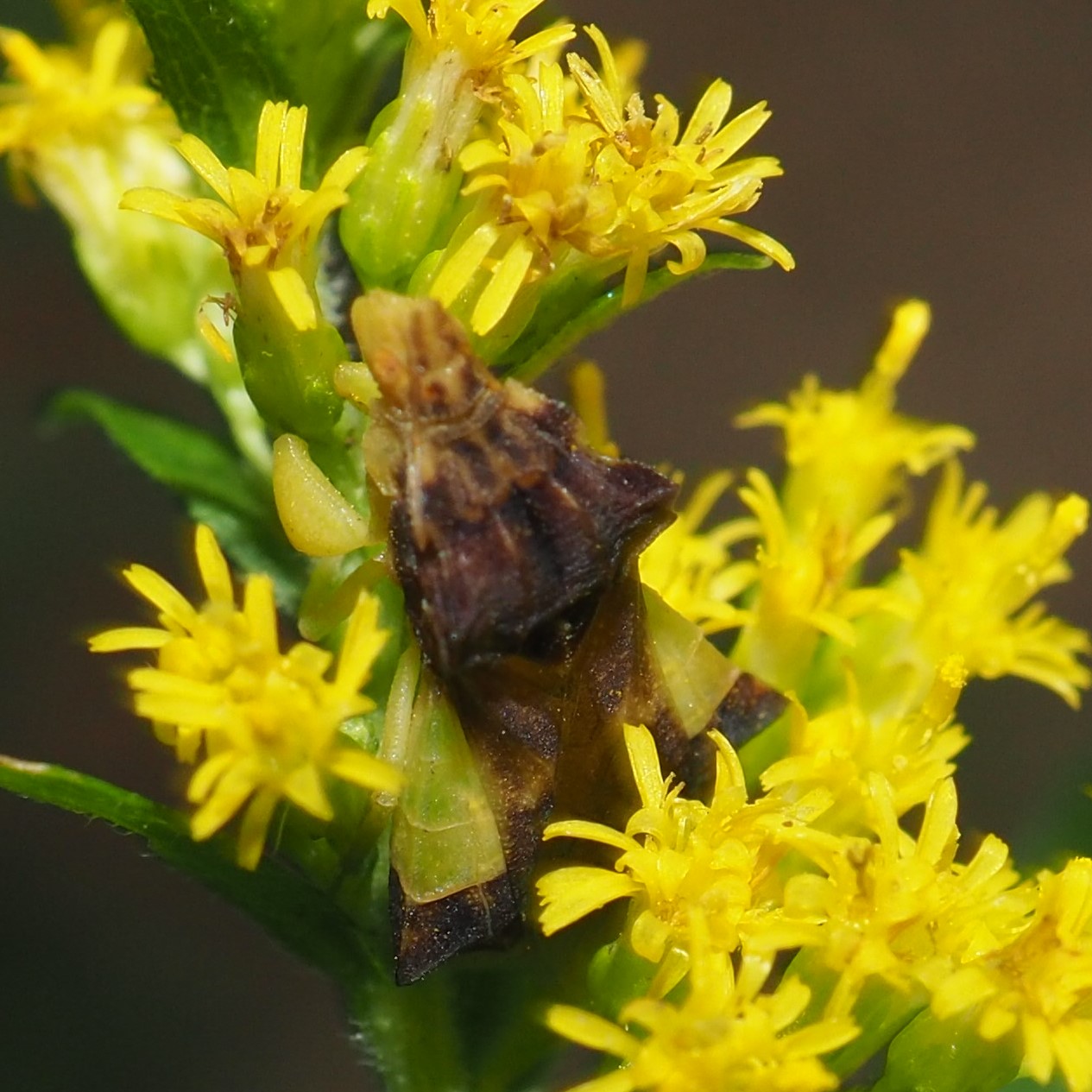
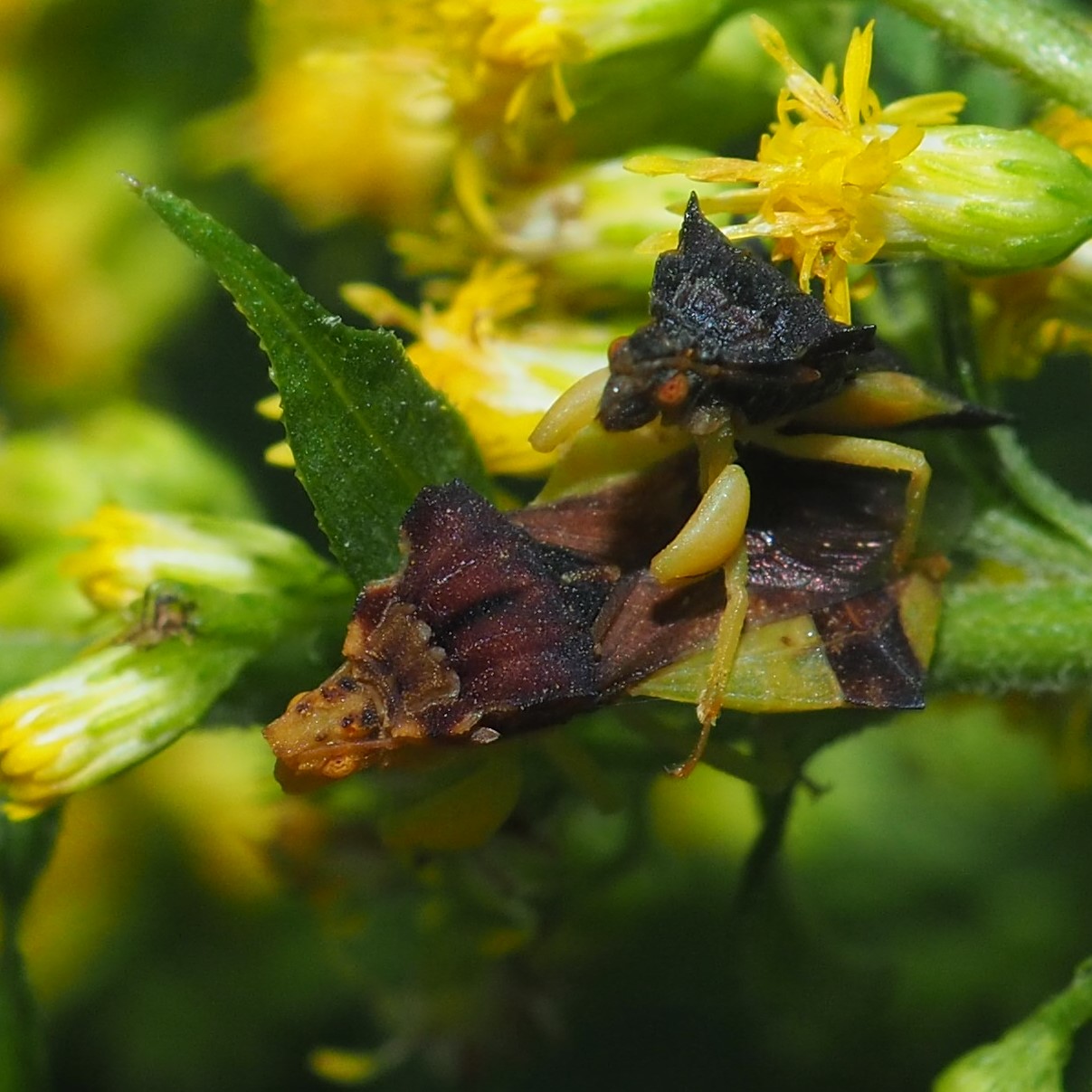
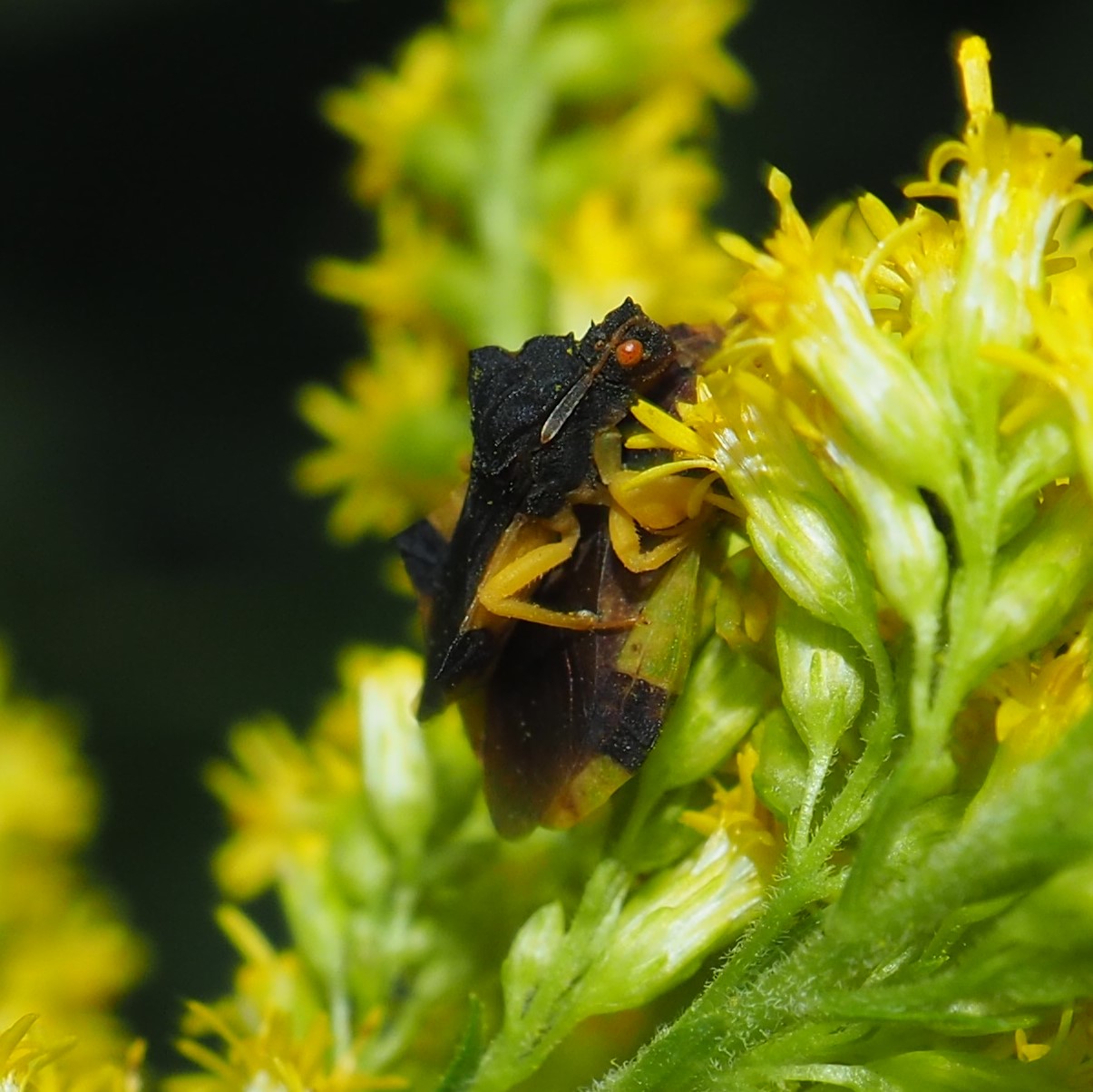
The Assassin Bugs are still growing after their fairly recent birth and they are Everywhere! Since this Pale Green Assassin Bug is actually Pale Green, it can blend into almost every plant. Here is one clinging to the green plant at the bottom of my cane! The second is showing its proboscis, which is folded up under its chin awaiting a succulent creature to drink up. Picture 3 shows one turning its back totally on me.

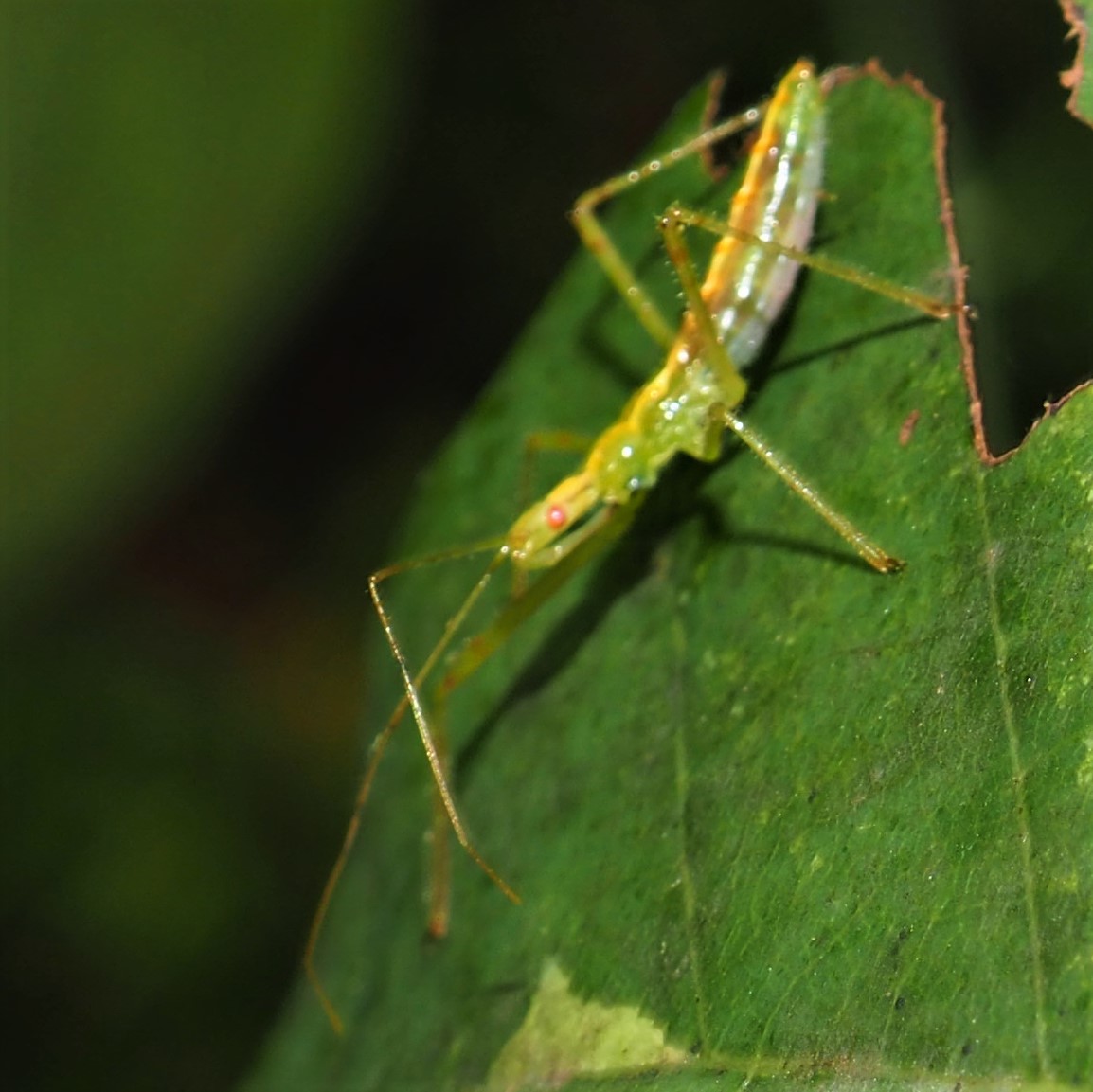
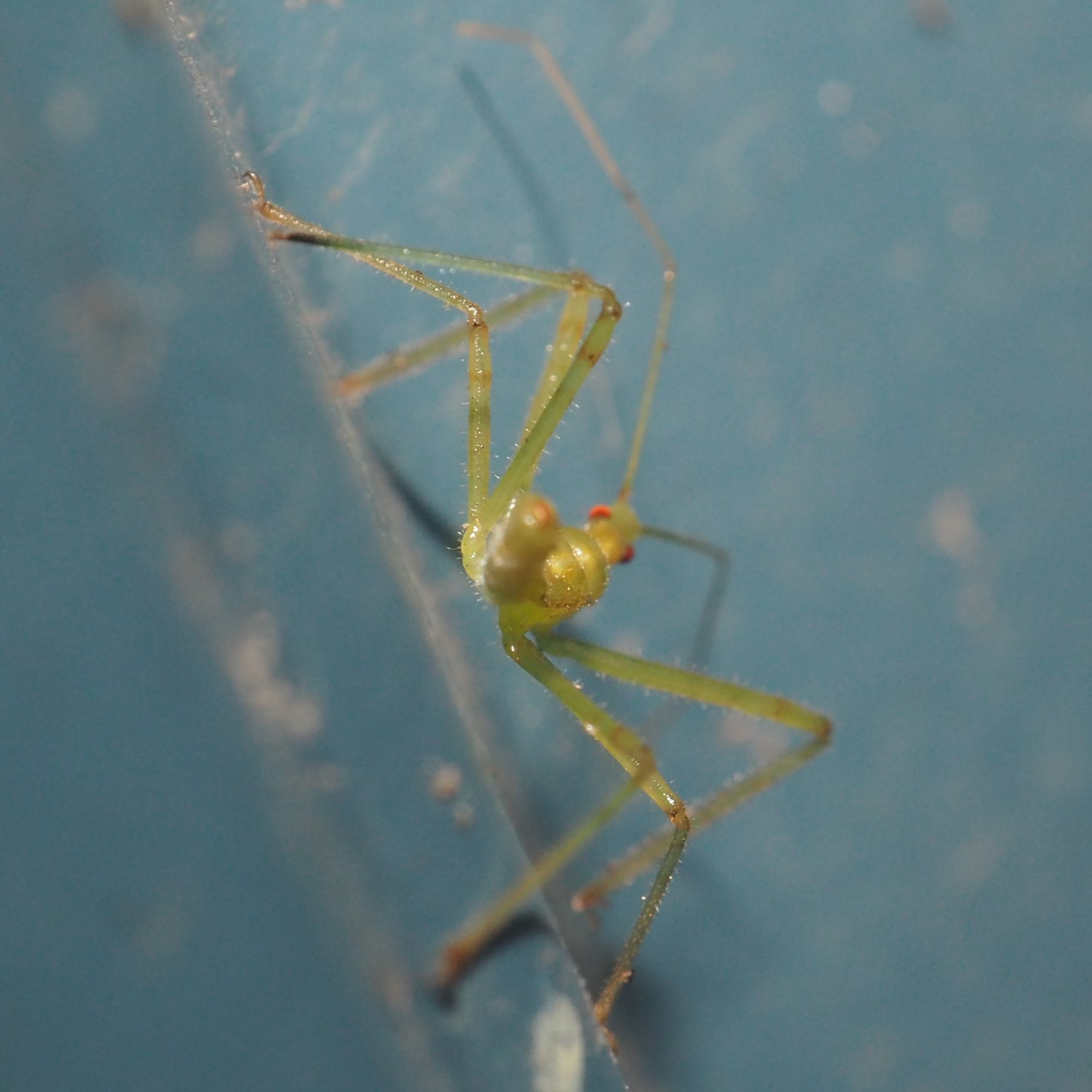
Let's see which of our favorite Leafhoppers came to visit. First is from such an unfamiliar angle, it may actually be a Japanese Maple Leafhopper. Oh yes, here is that lovely Leafhopper from a more familiar view.
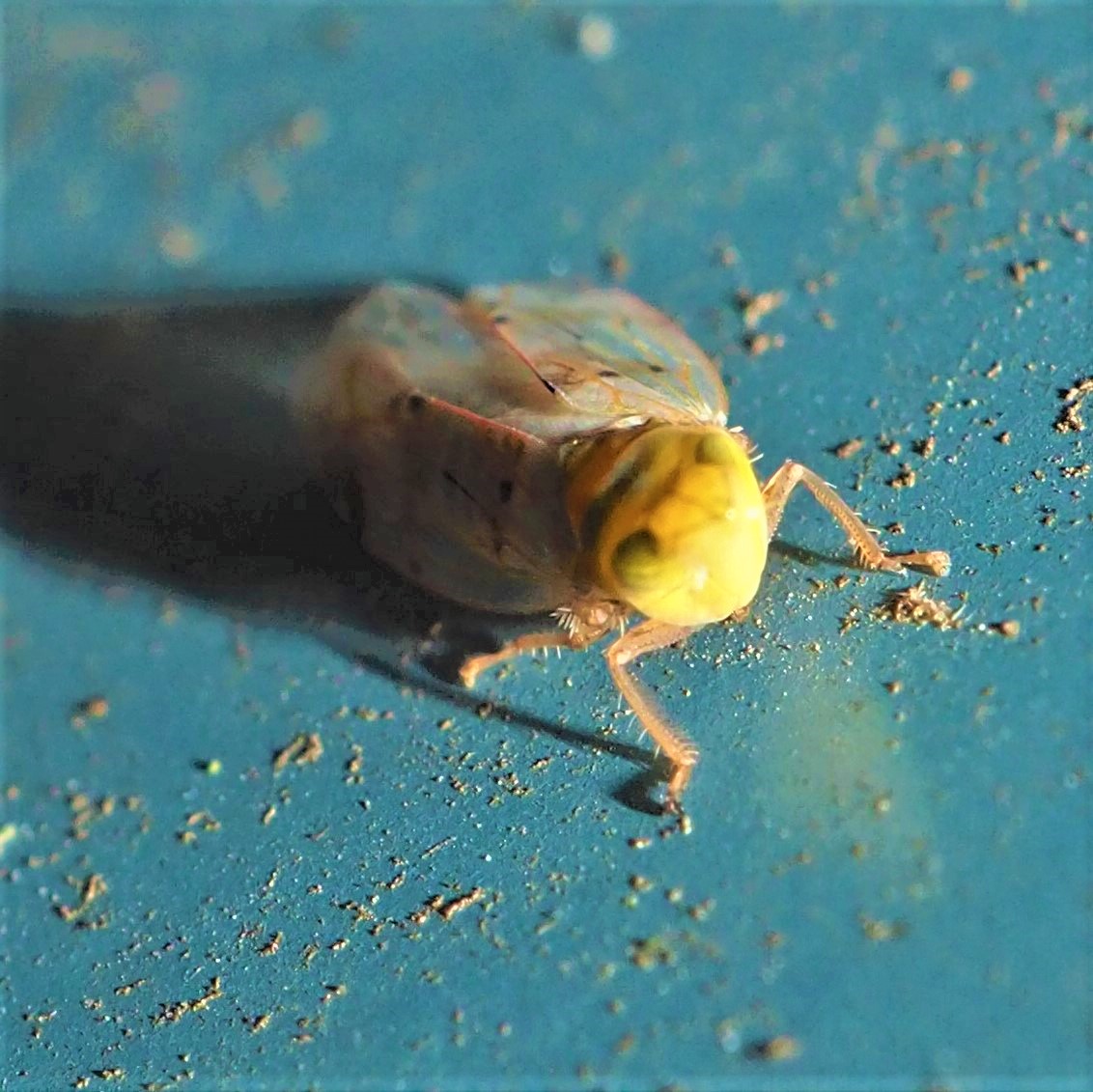
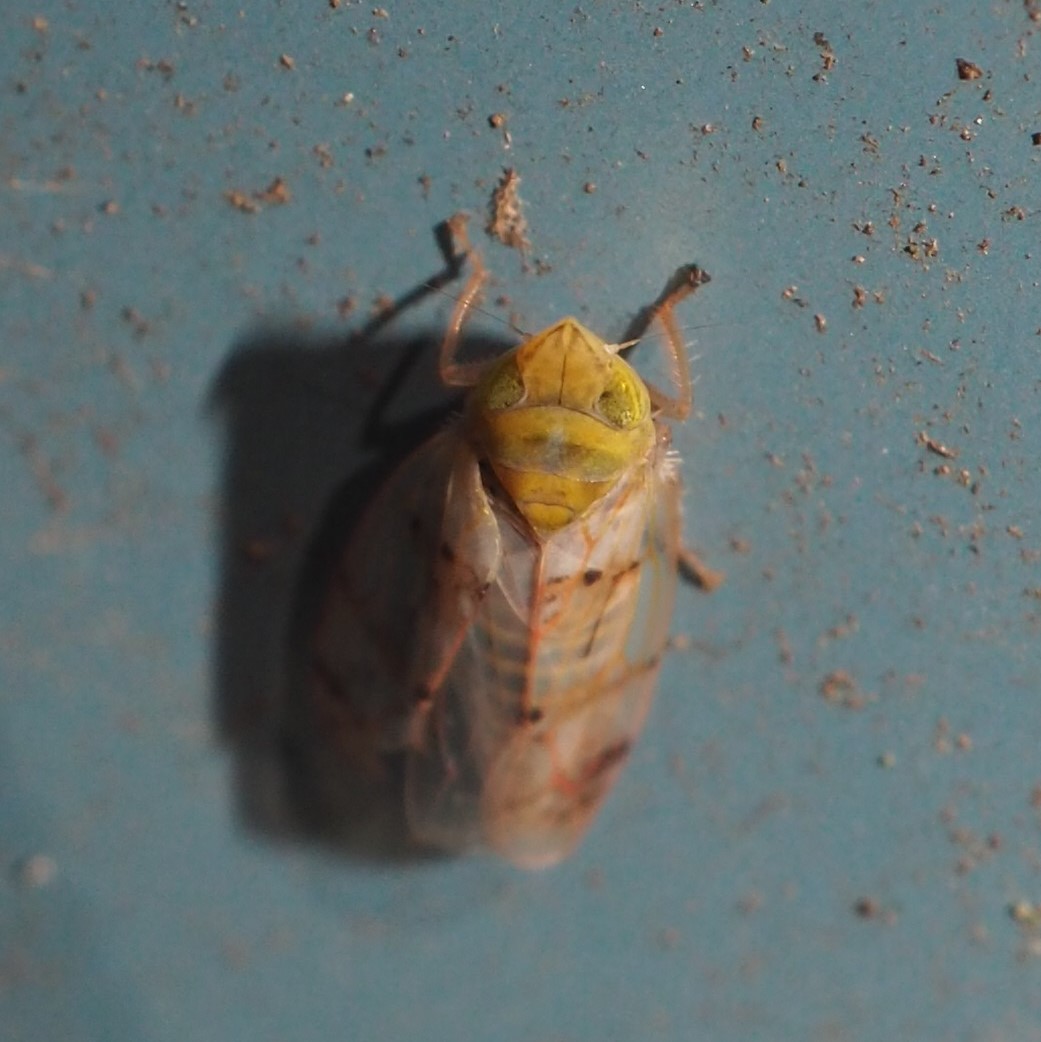
This beautiful Erasmoneura vulnerata sat for a while on the North Wall, where I was expecting to see Barklice.
Next is one of the genus Eratoneura. Third is another of that genus, Eratoneura ardens, named after the burning patch on its back.


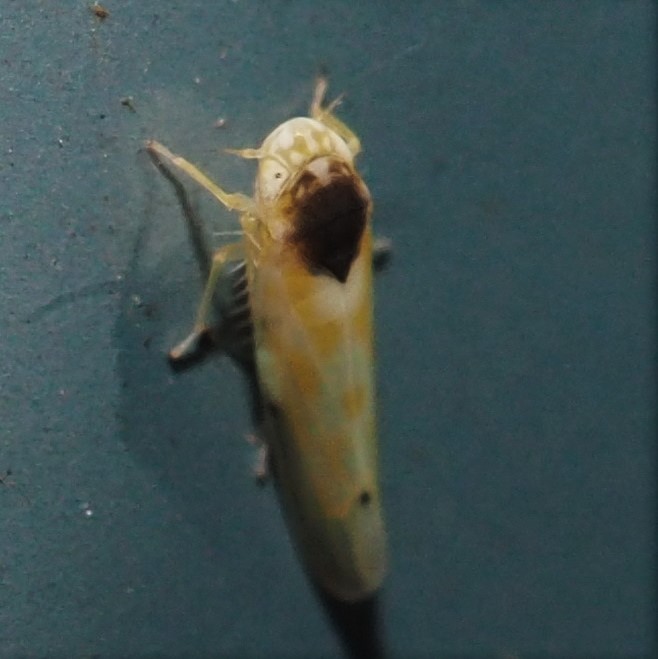
The last two of the week were members of the genus Erythroneura, namely E. aclys and E. infuscata.
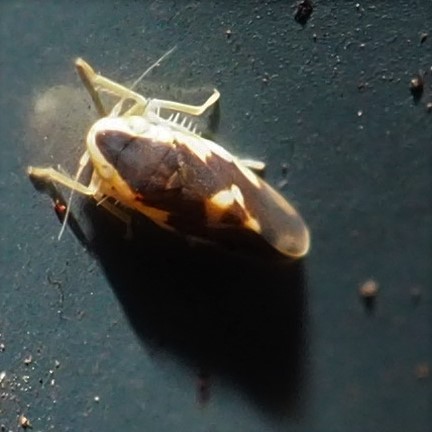
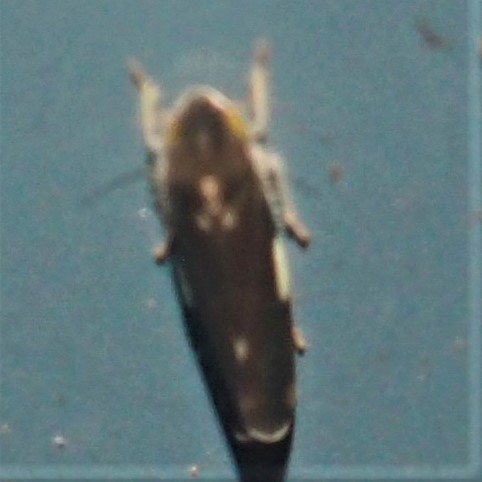
There were a couple of Plant Bugs. I think this first one is in the Lygus genus. Look at those "moons" at the rear end of the wings. But the second one (pictures 2 and 3) may be a close relative. It too has that spiral-shaped decoration at the end of the wings. Third is surely a Lygus Bug.
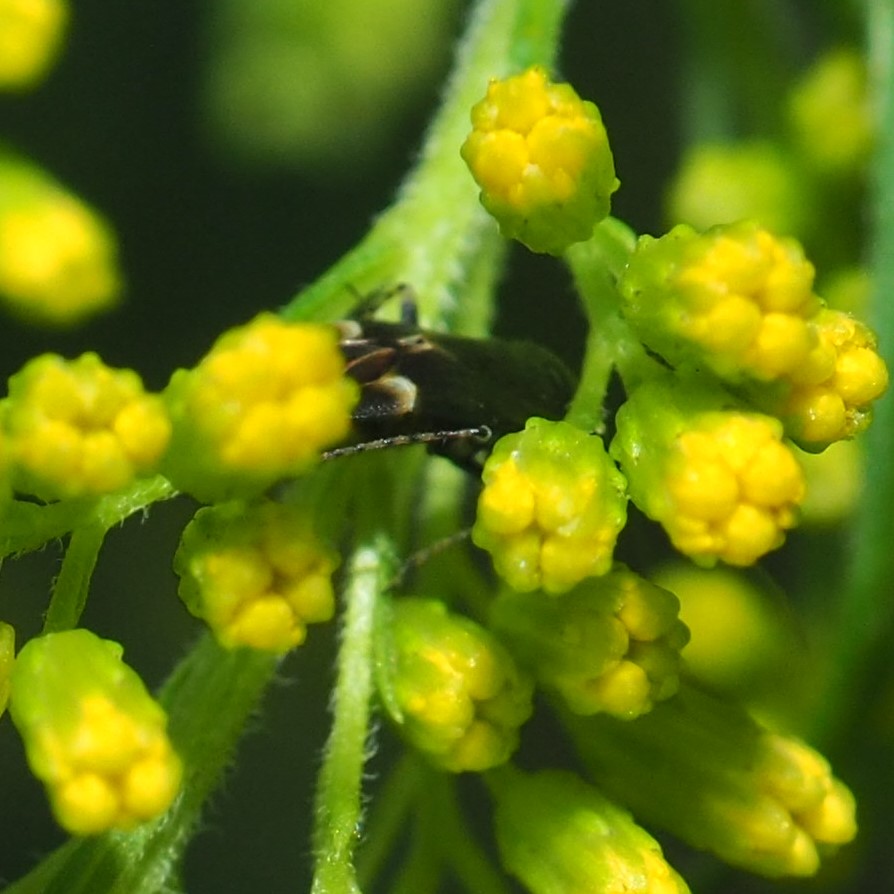
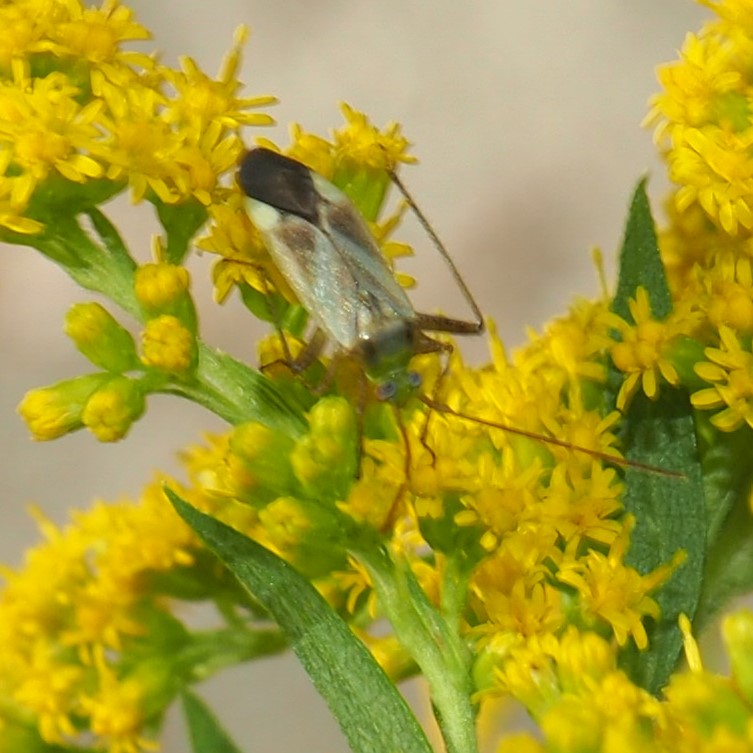
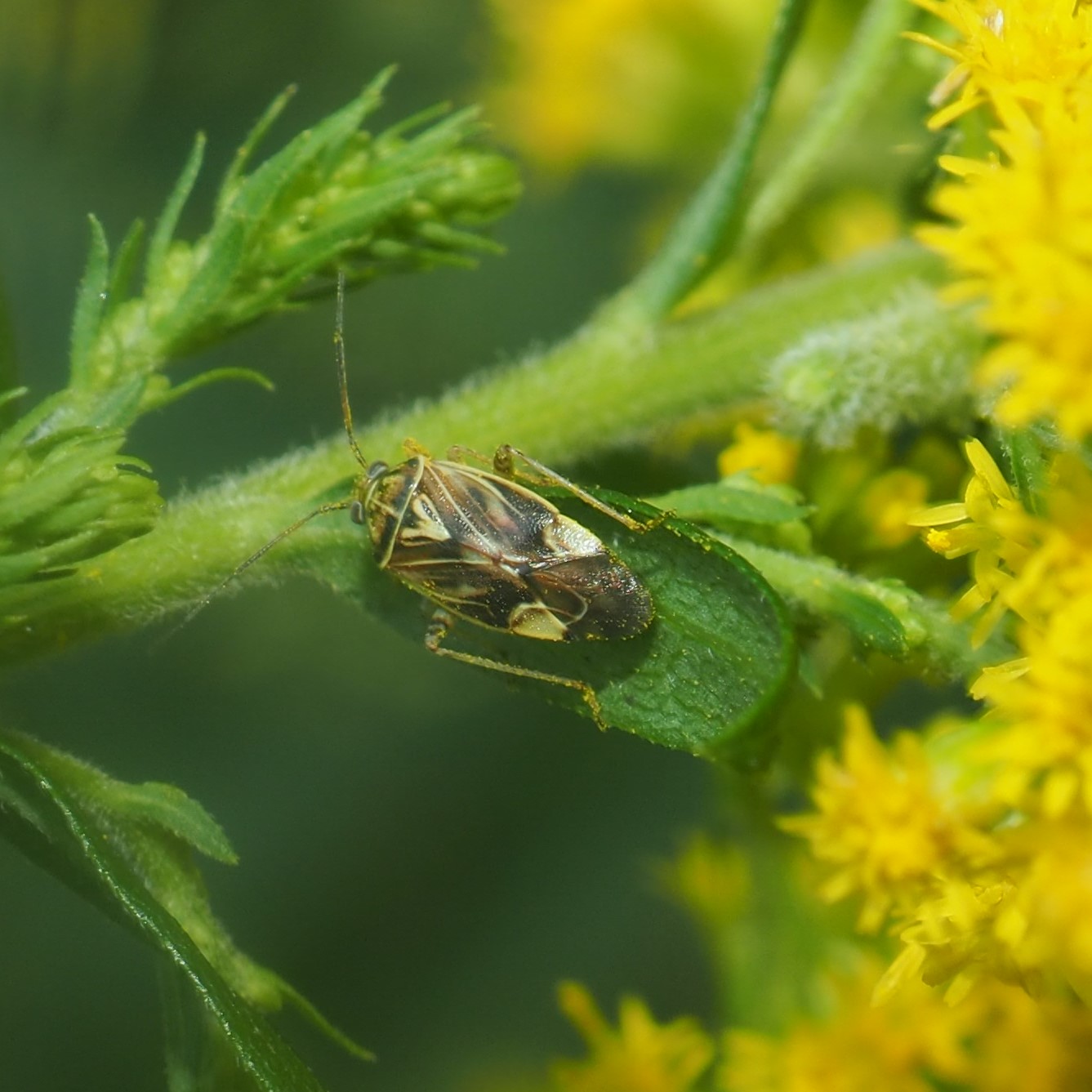
There was one Stink Bug, presumably the Dendrocoris humeralis that we have seen almost every day for a month or more. Second looks like a washed-out version of our faithful Drymus unus, which appears every year as the Goldenrod is going by. Third is an Alder Spittle Bug.
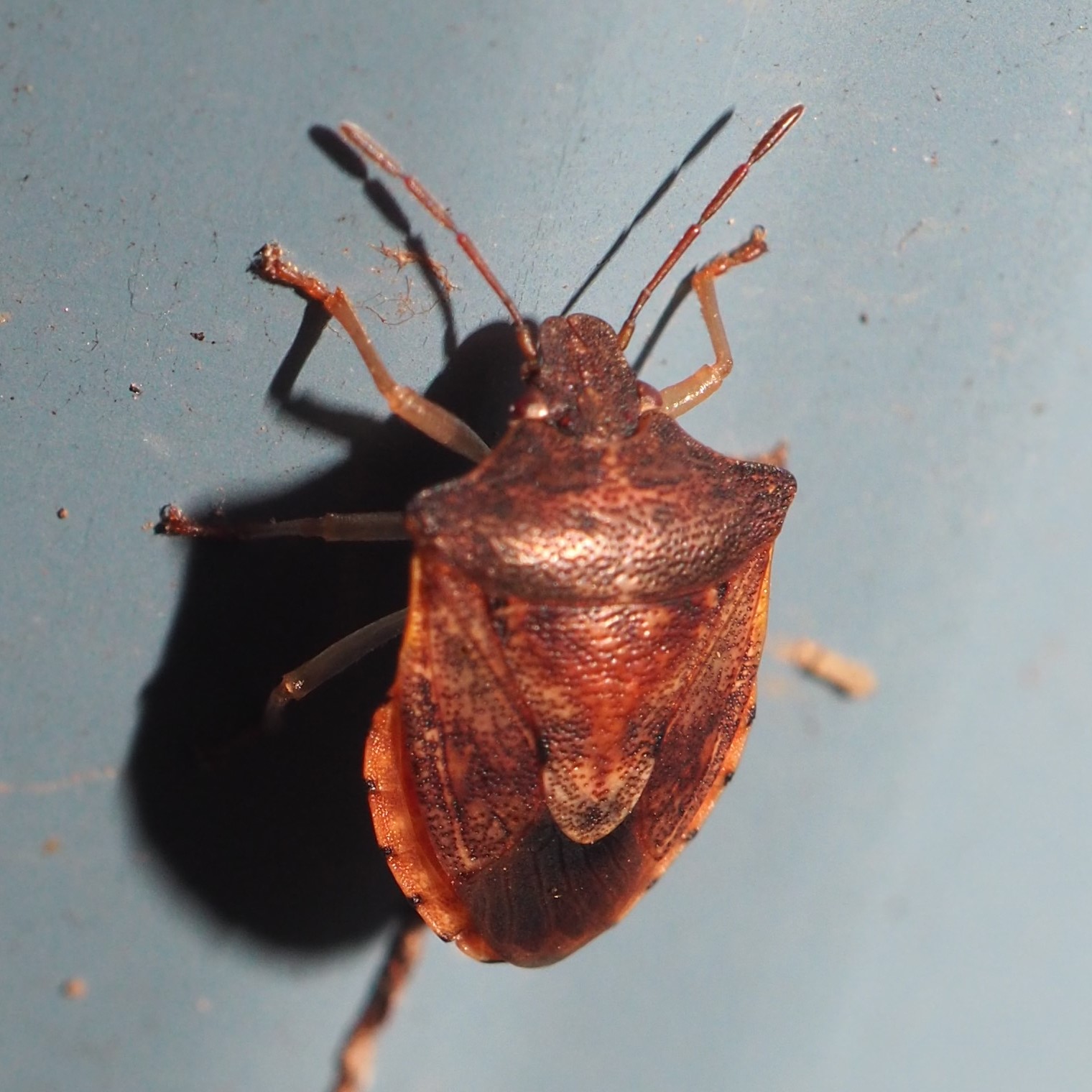
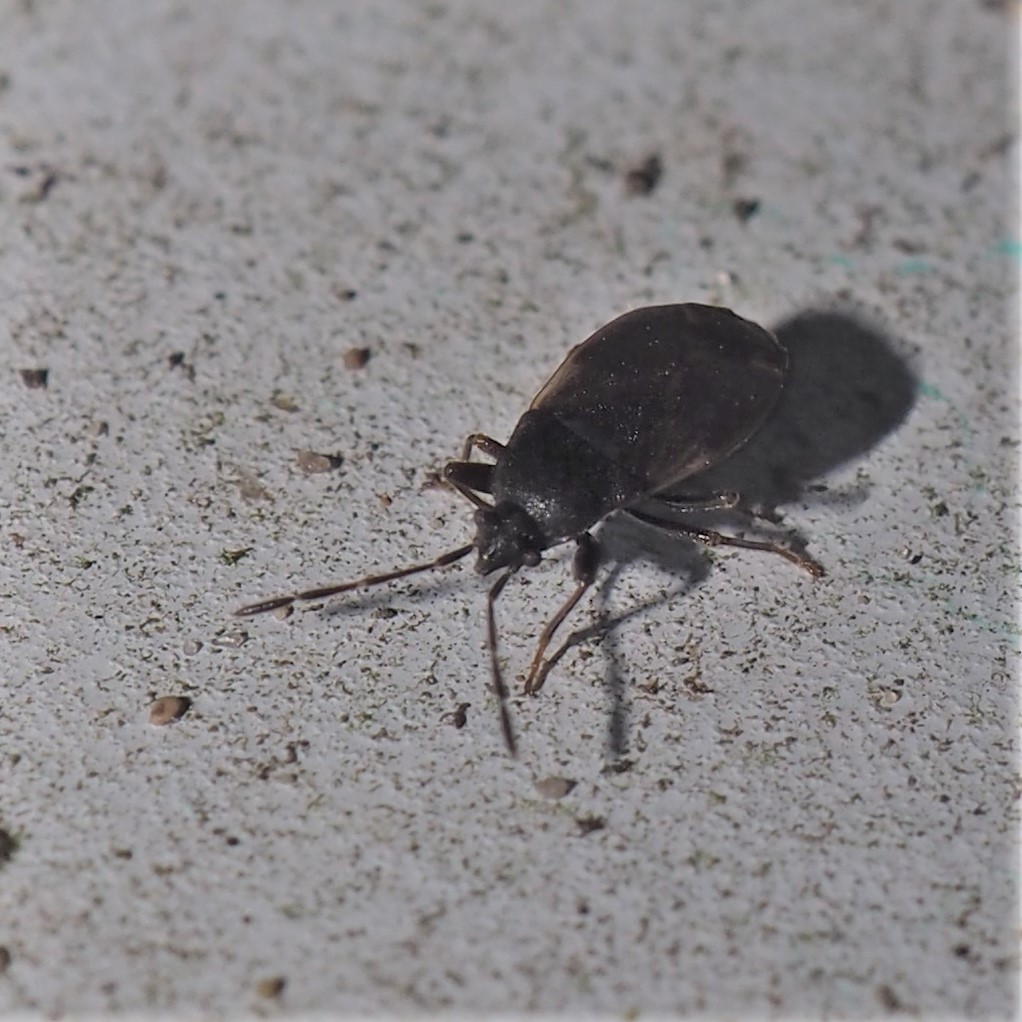
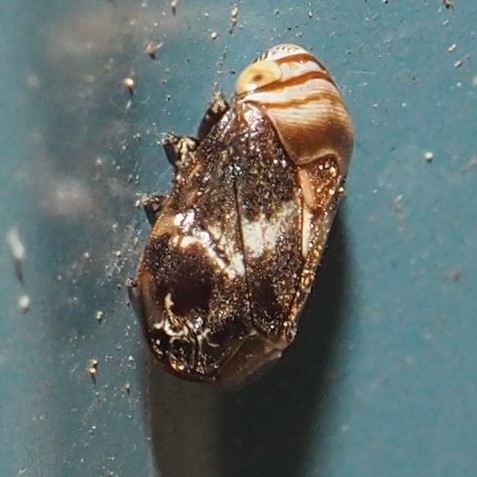
That seems to be the end of the Bugs. After all, it also seems to be the turn of the season. What I didn't see this week were Treehoppers, Planthoppers, or any other kinds of Hoppers, including Grasshoppers, which are not even Bugs.
So we had better go see the Flies. First is a Crane Fly, the one that looks to me as if it were block-printed using a familiar repeated pattern. Next up, a Fruit Fly. And last, a Bathroom Moth Fly.
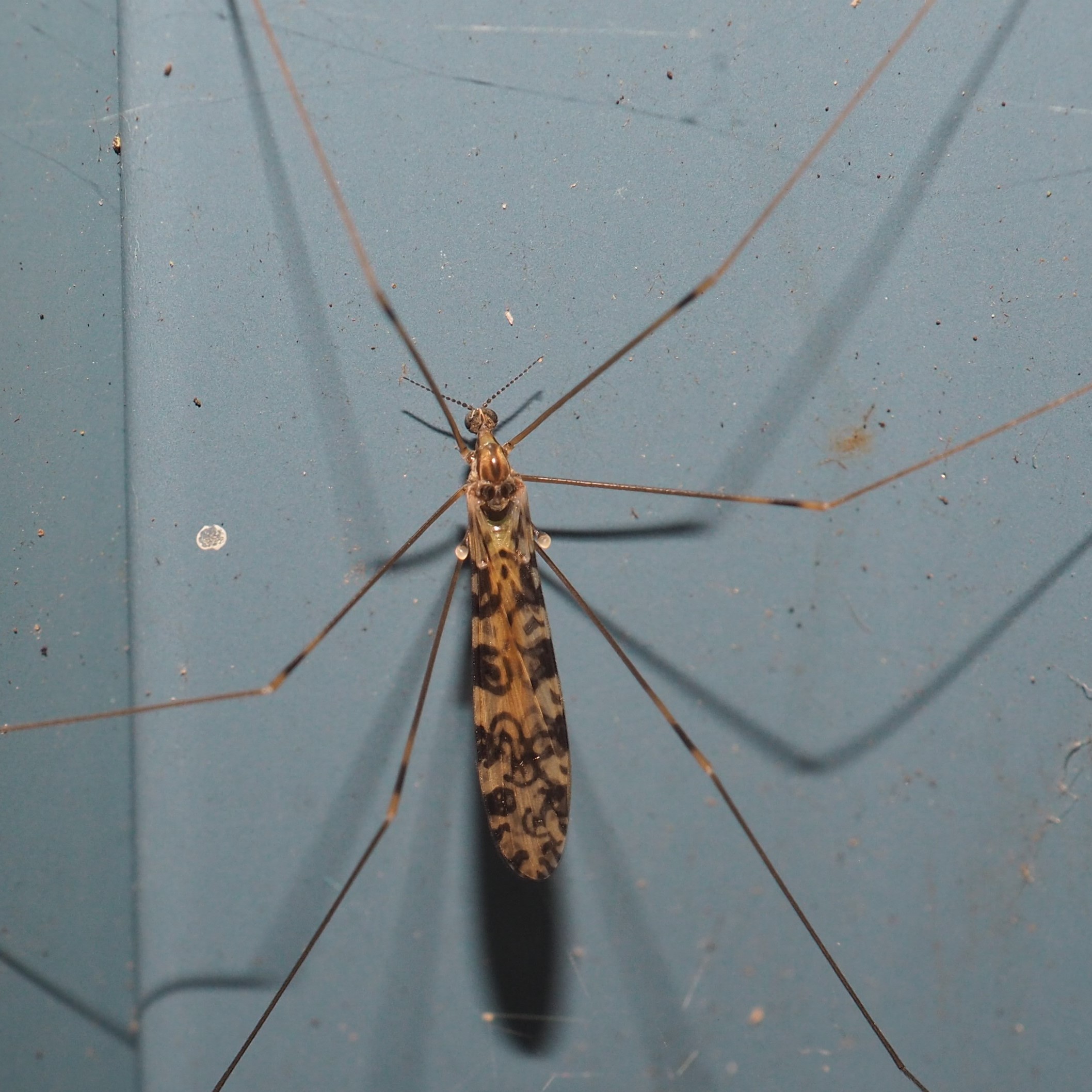
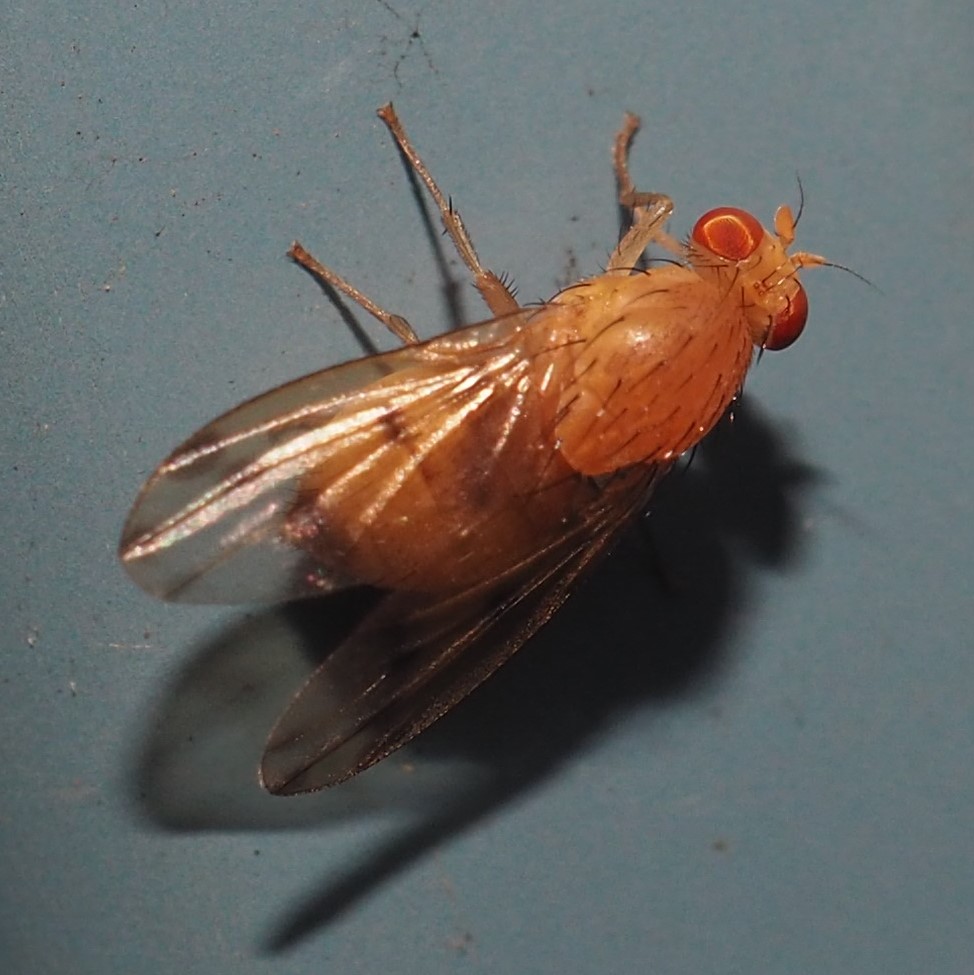
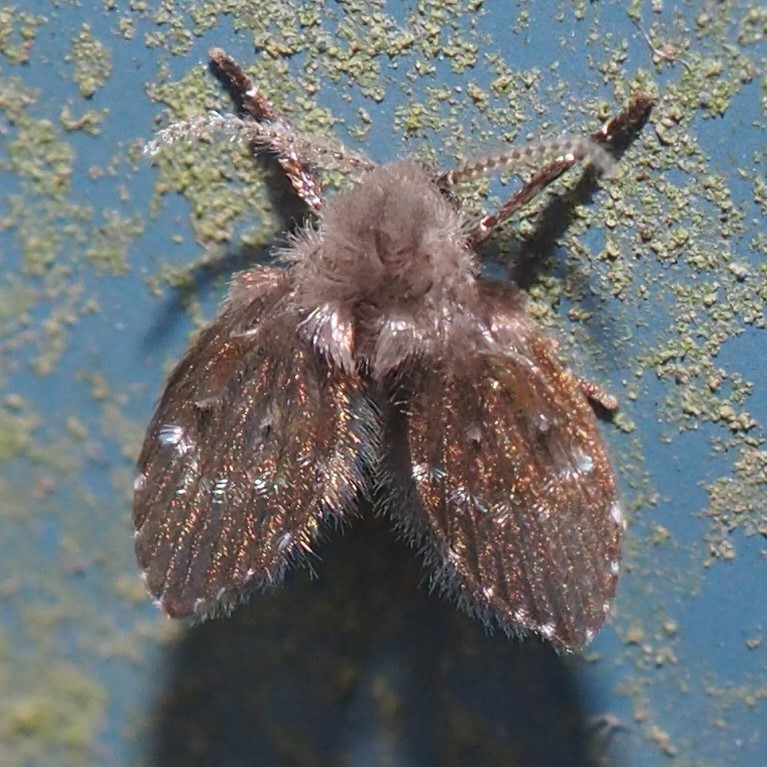
Here are two unidentified flies mating on the Shop Wall.
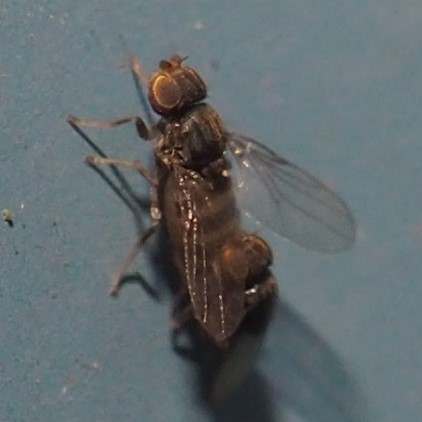
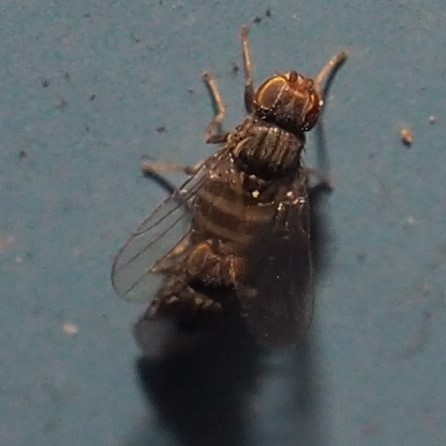
Here are a few Midges, including this gorgeous green one.
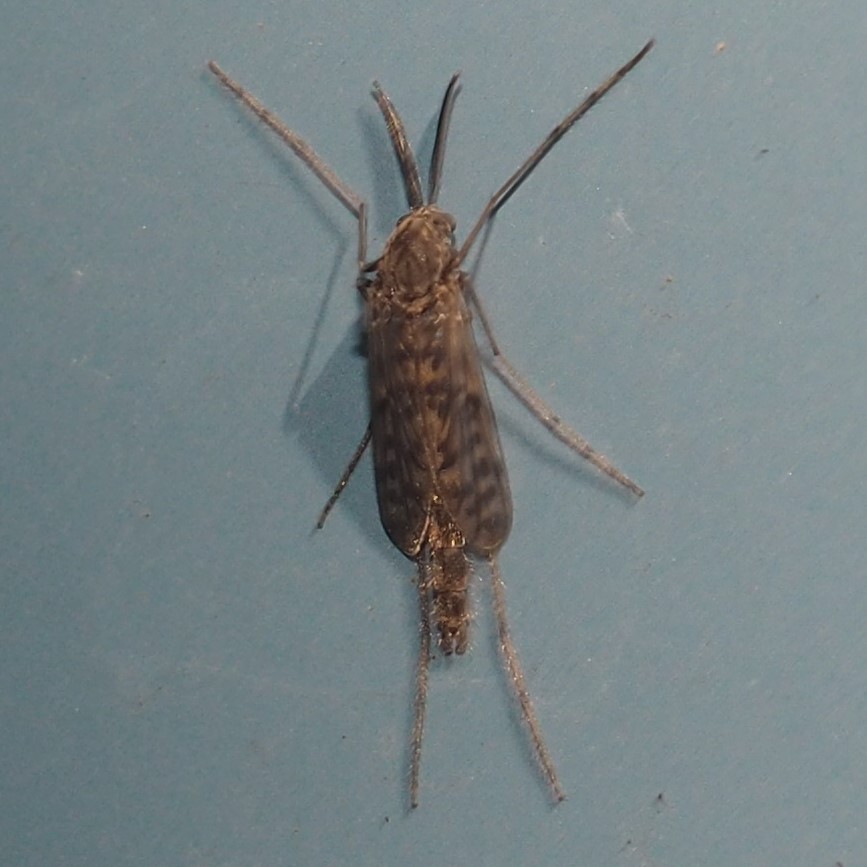
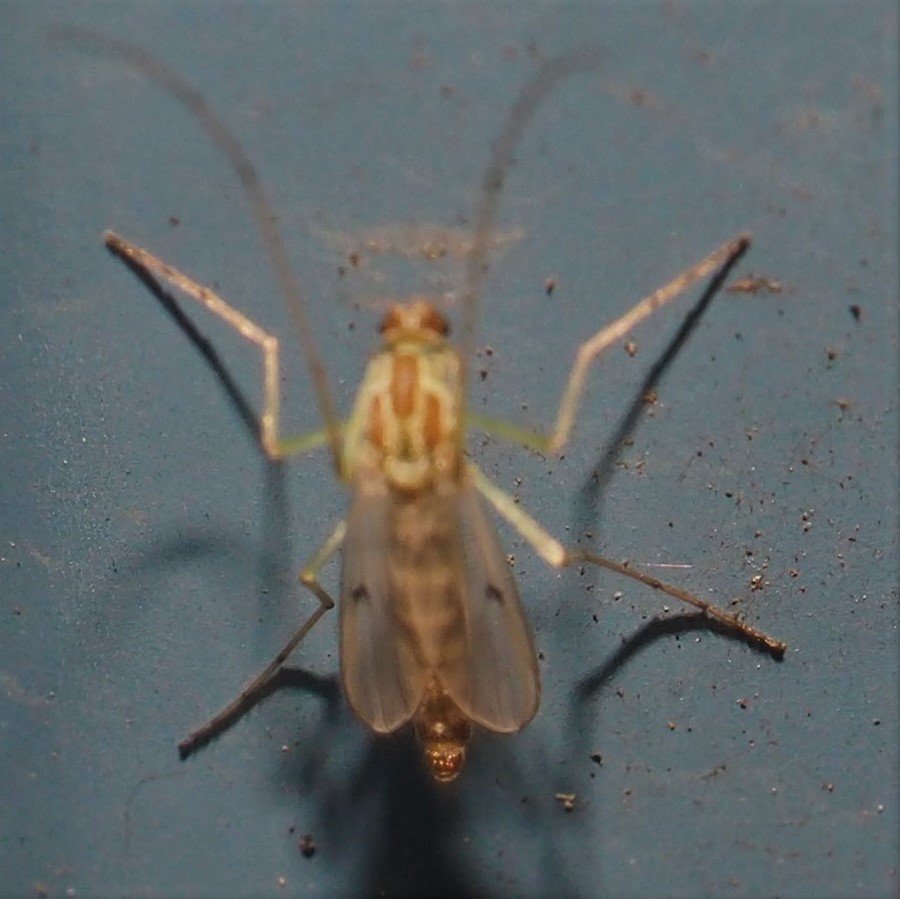
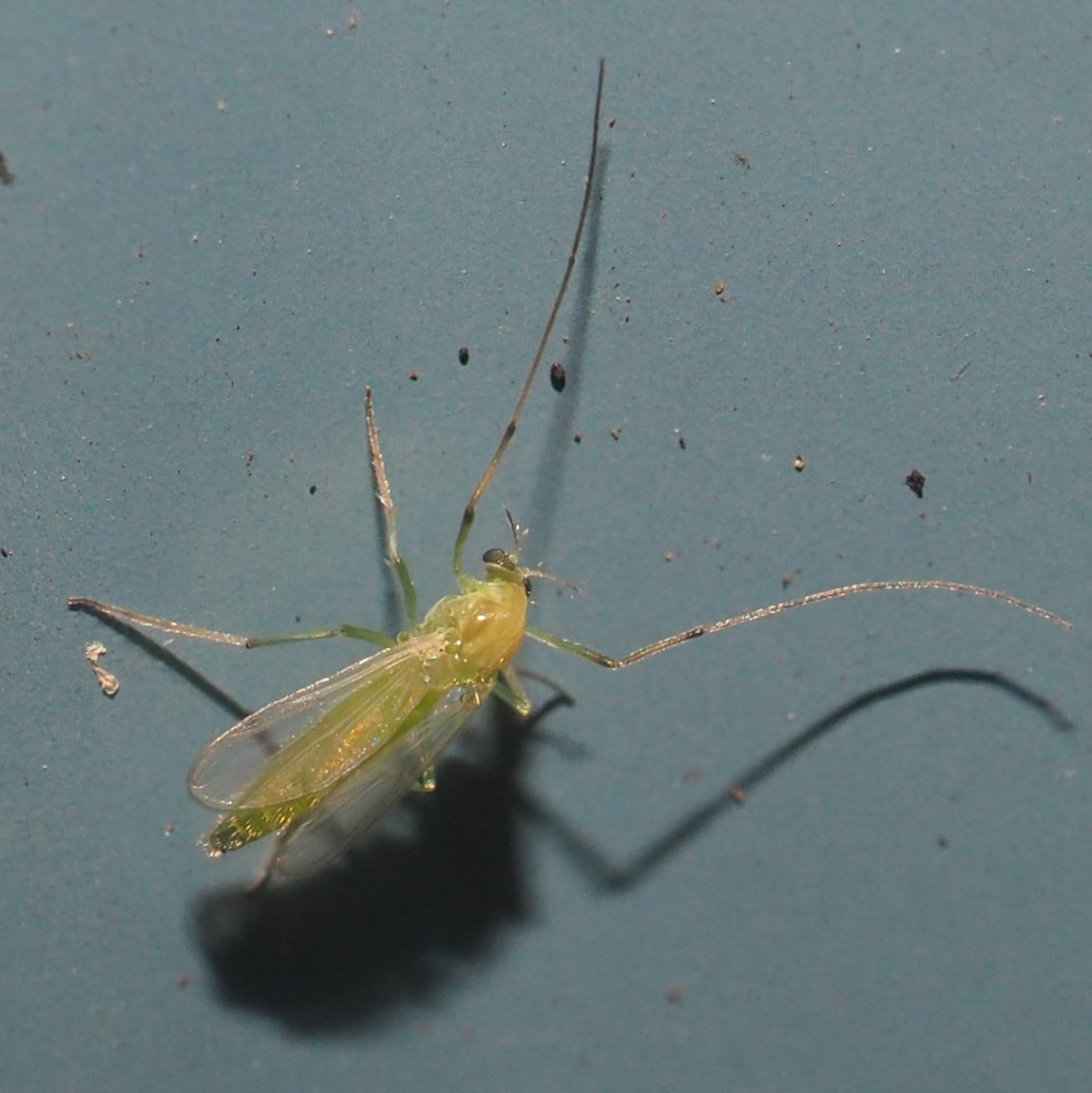
Here are two Mosquitoes. First has one broad vertical thoracic stripe, making it a Treehole Mosquito. The next seems to have three thoracic stripes, making it Aedes trivittata. Third isn't a Mosquito, but a "Flesh-eating Fly", of genus Sarcophagus. Fourth is still a mystery.
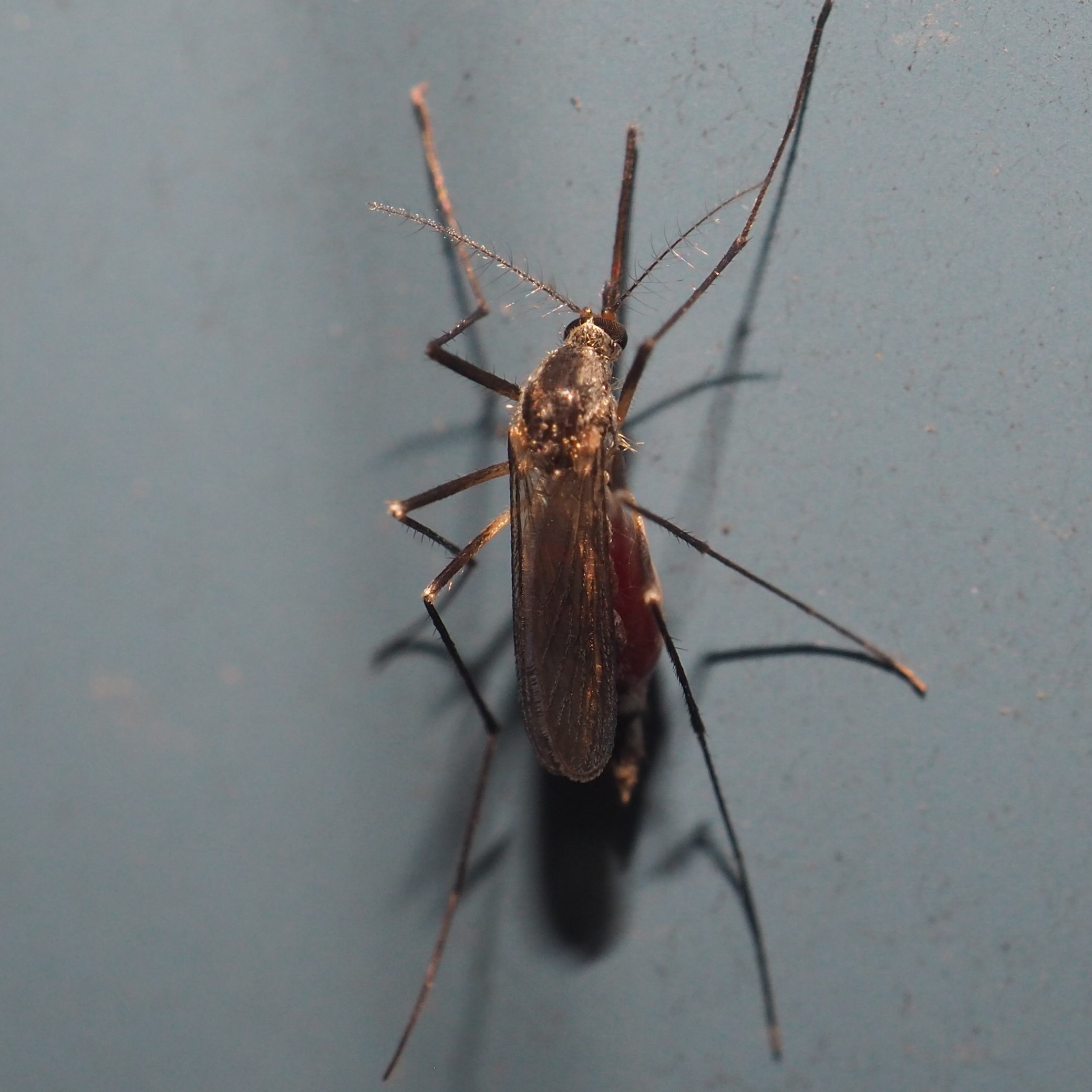
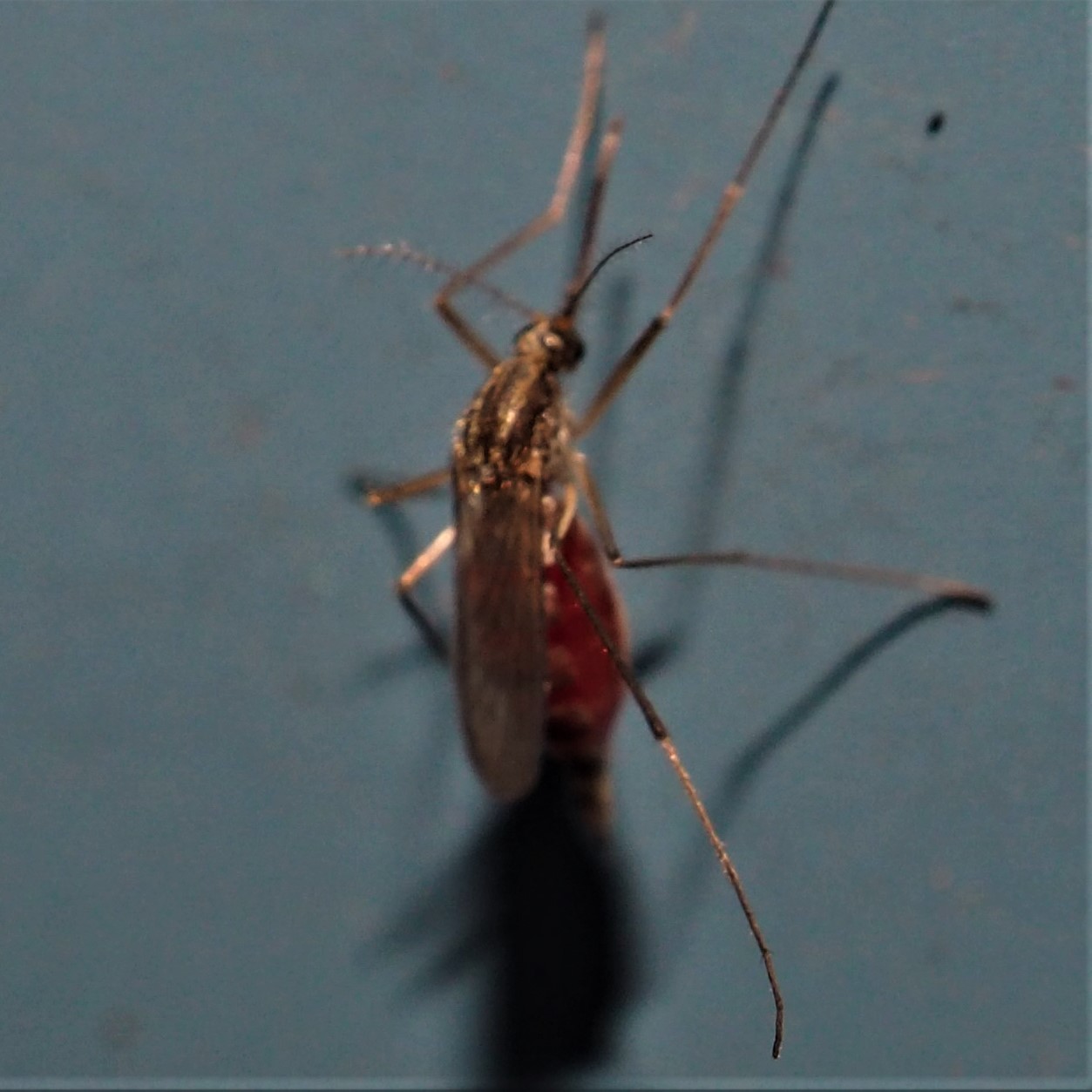
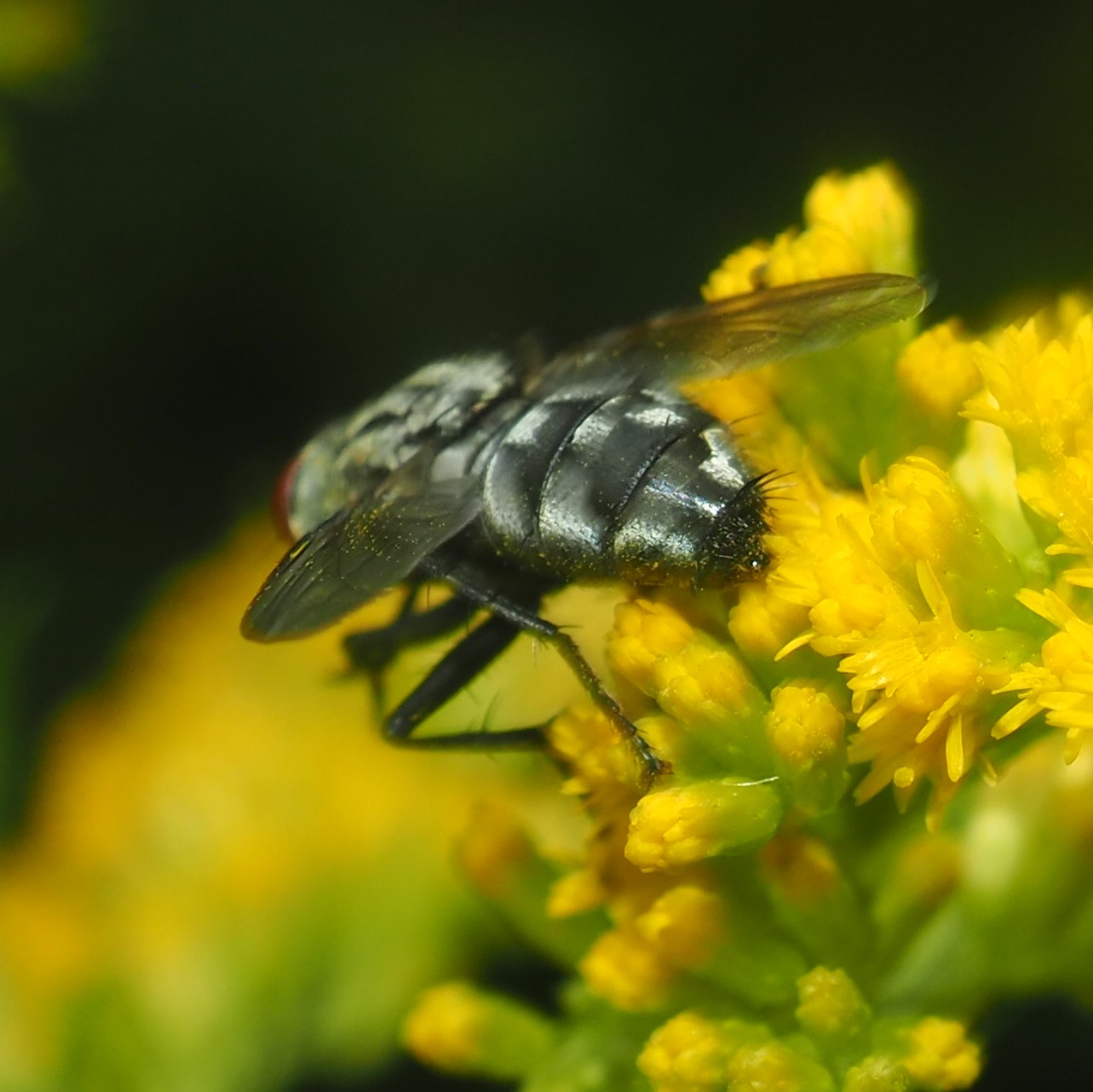
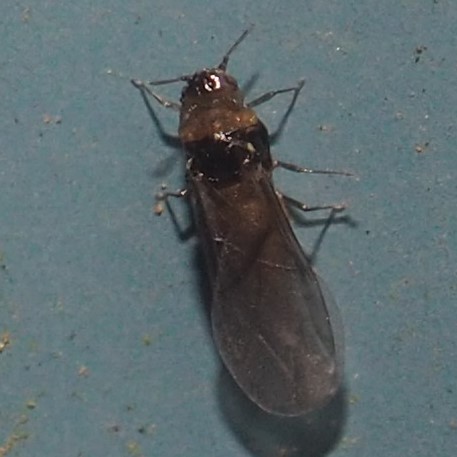
There were a lot of Hover Flies, but I believe they all reduce to two species. First is Toxomerus geminatus (pictures 1 and 2), one of the smallest and prettiest of the Hover Flies. The other Hover Fly of the week is the Thick-legged Hover Fly.
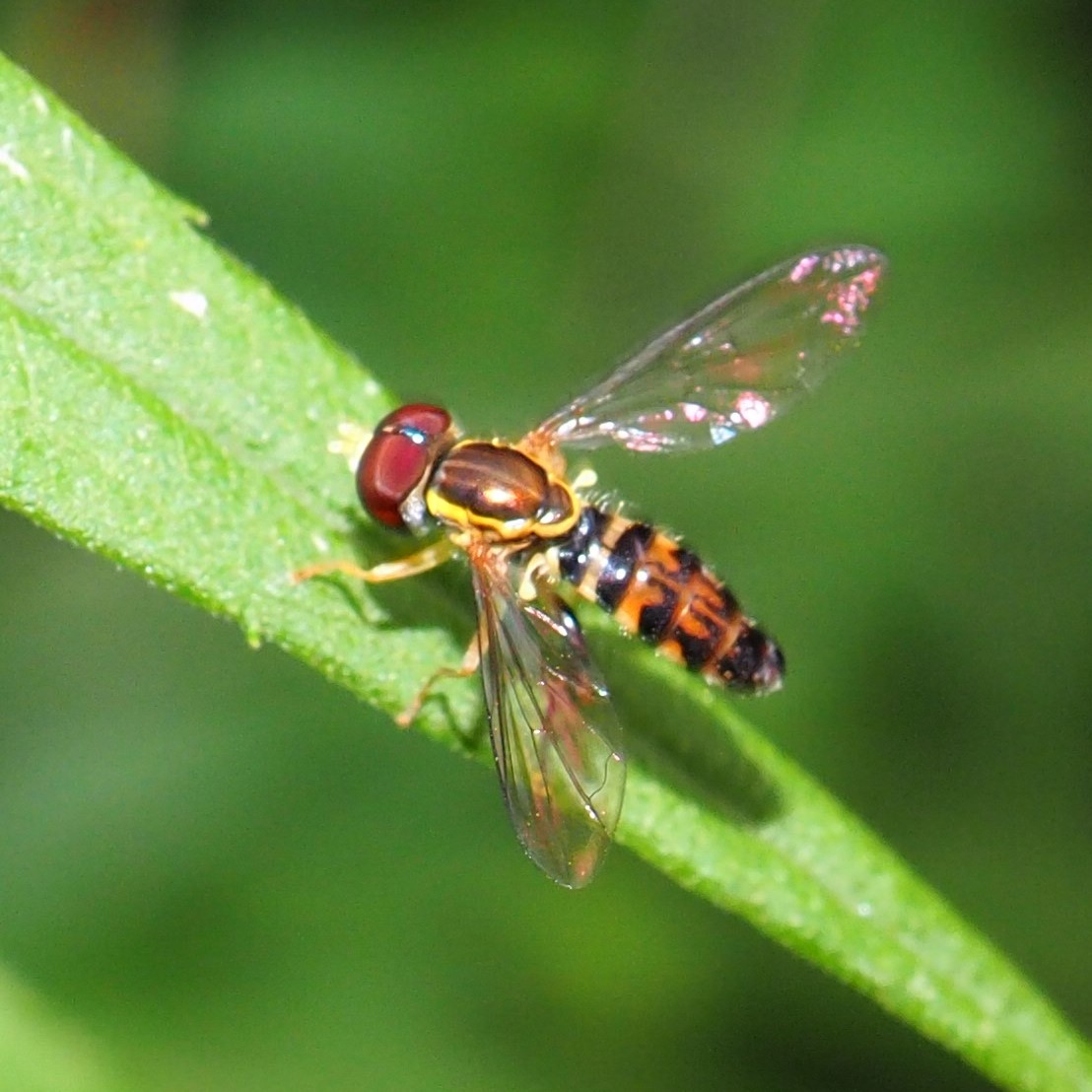

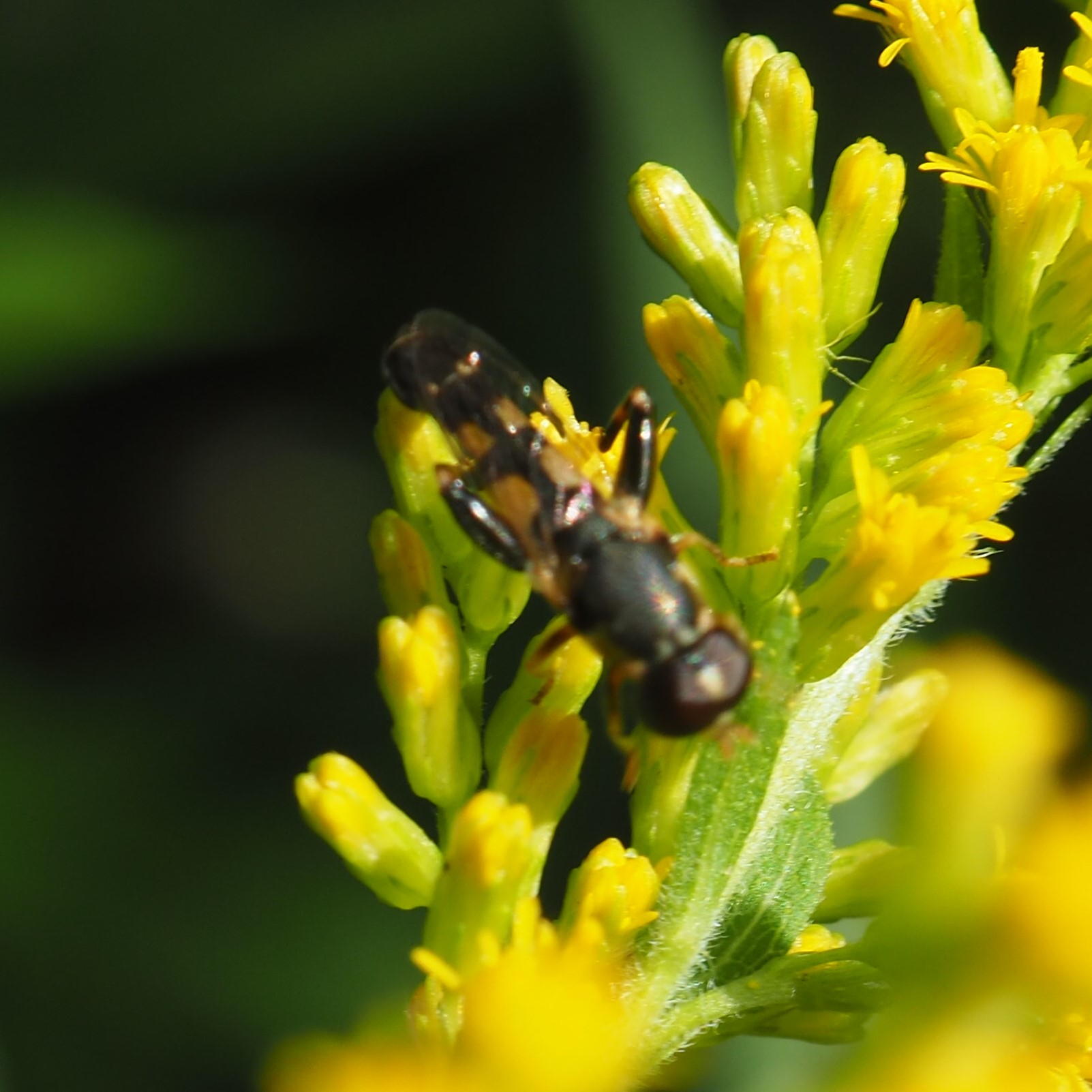
This was my best year for observing Trichopoda plumipes and its sister T. pennipes. This was the first time I've seen T. plumipes on the Goldenrod along the South Wall.
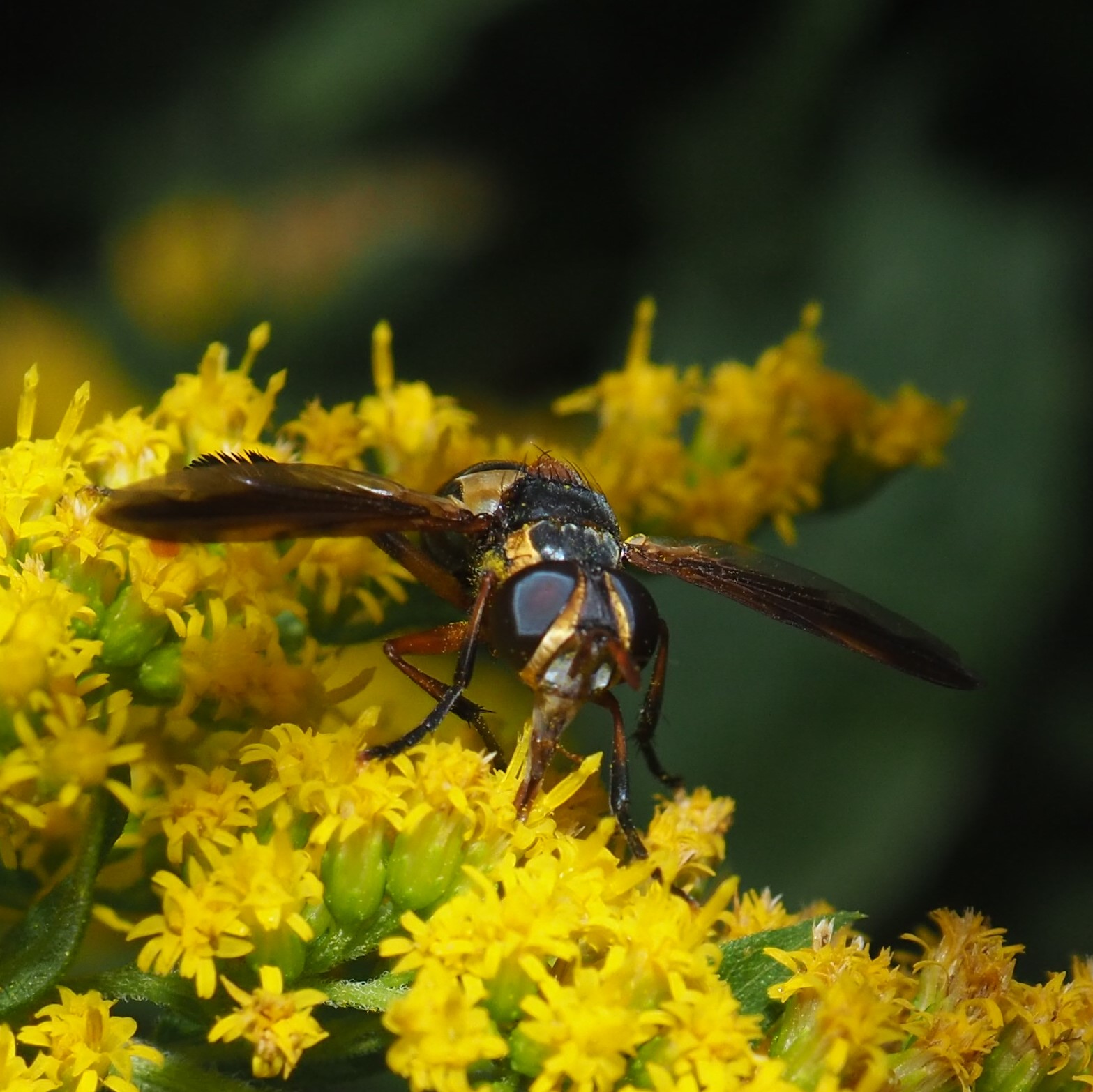
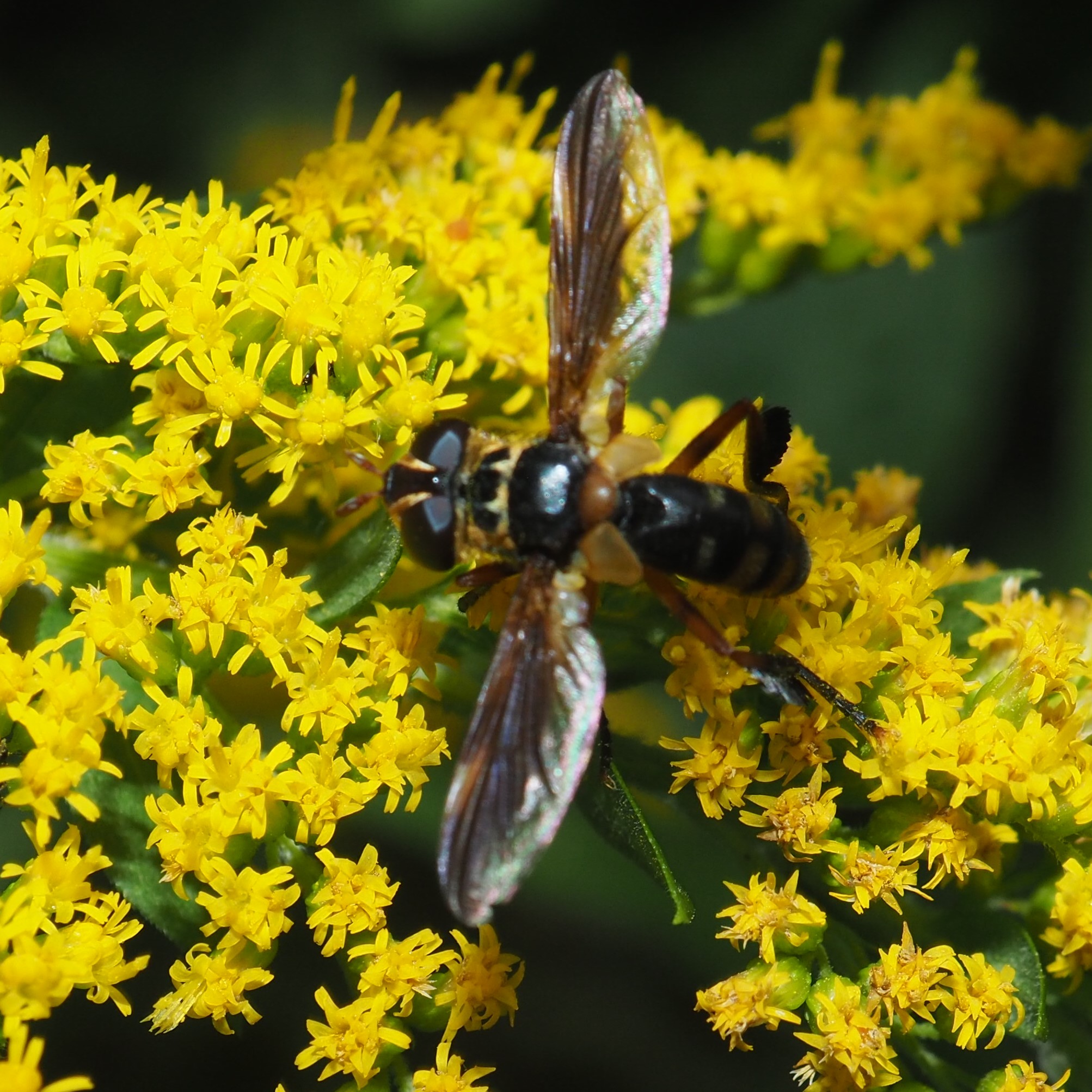
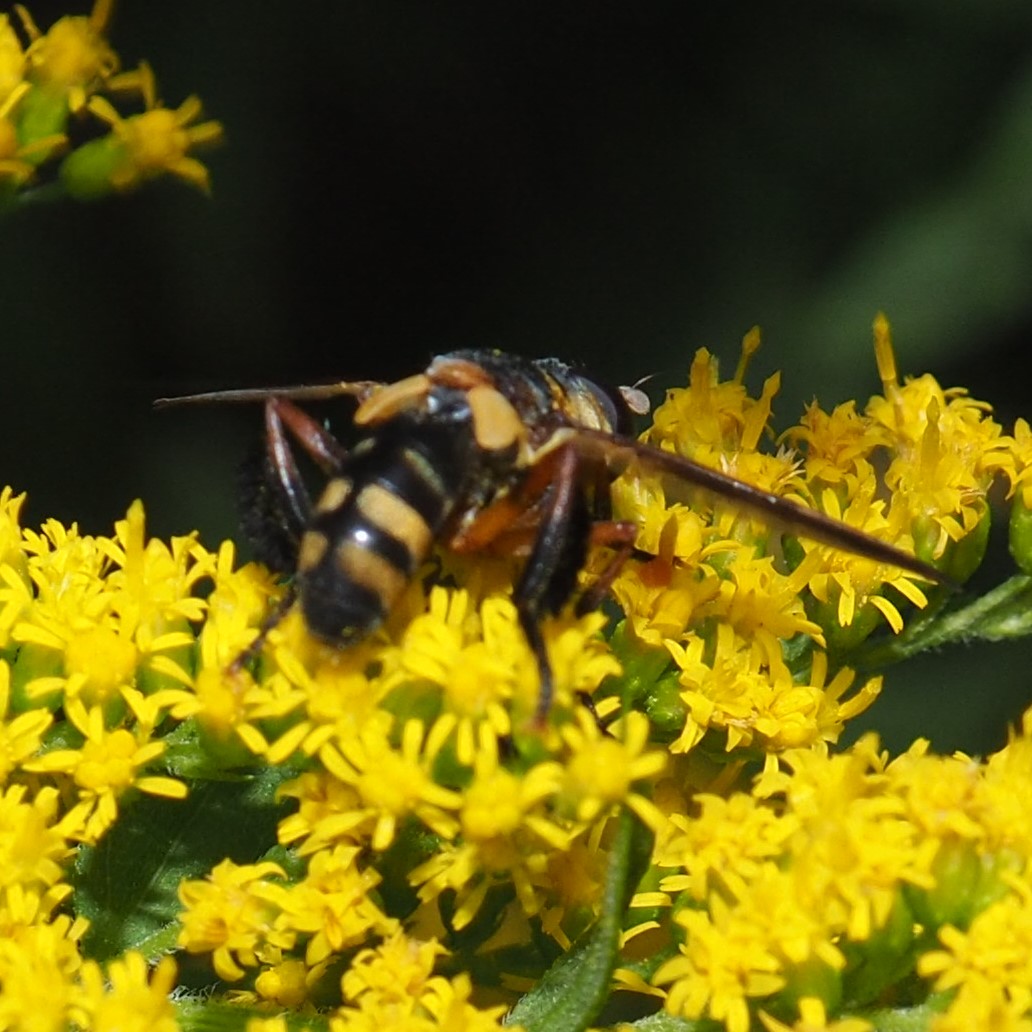
I think this is a Moth, but it could be a Fly. But surely the second picture is of a brown Moth. And third is a Lesser Vagabond Sod Webworm Moth. What a name!
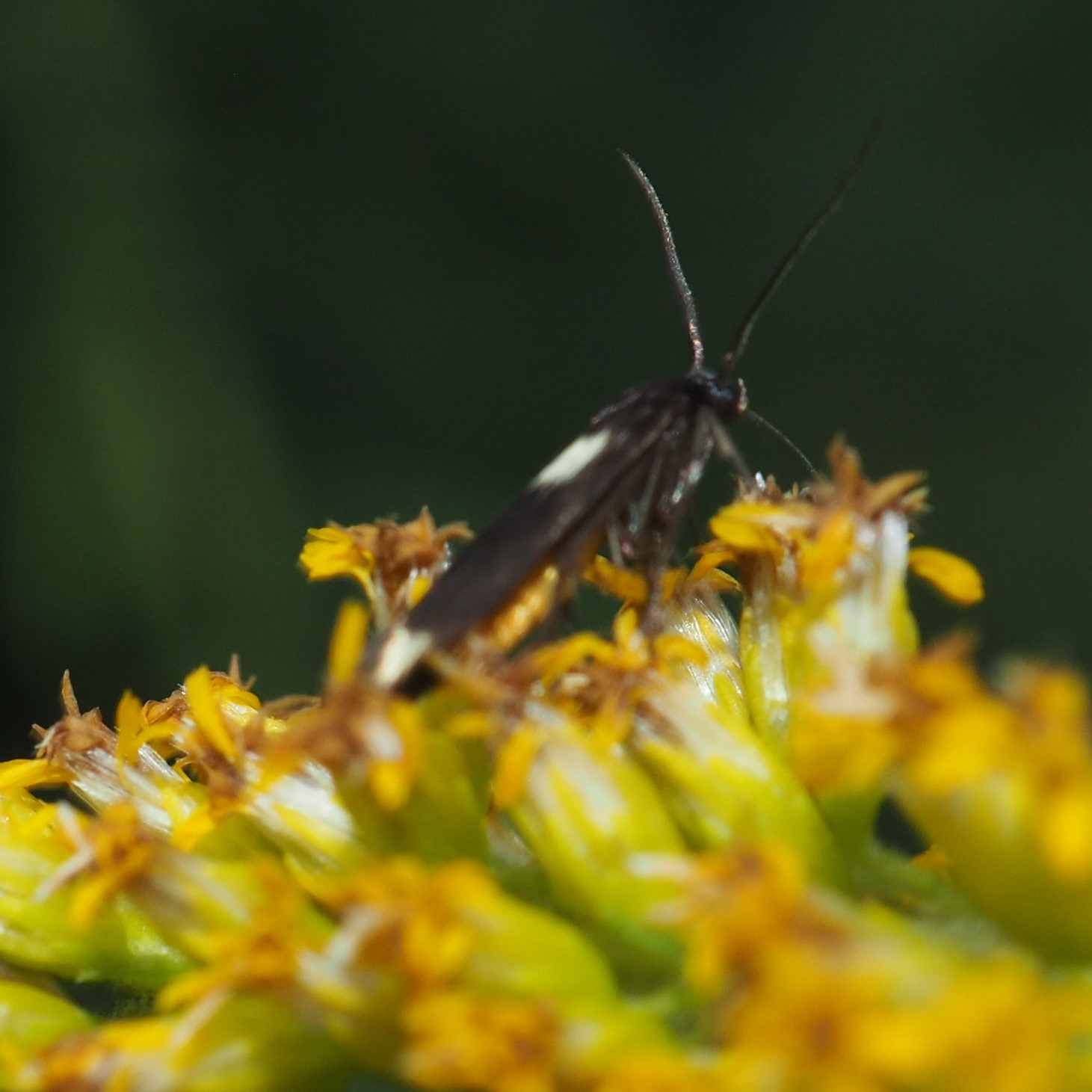
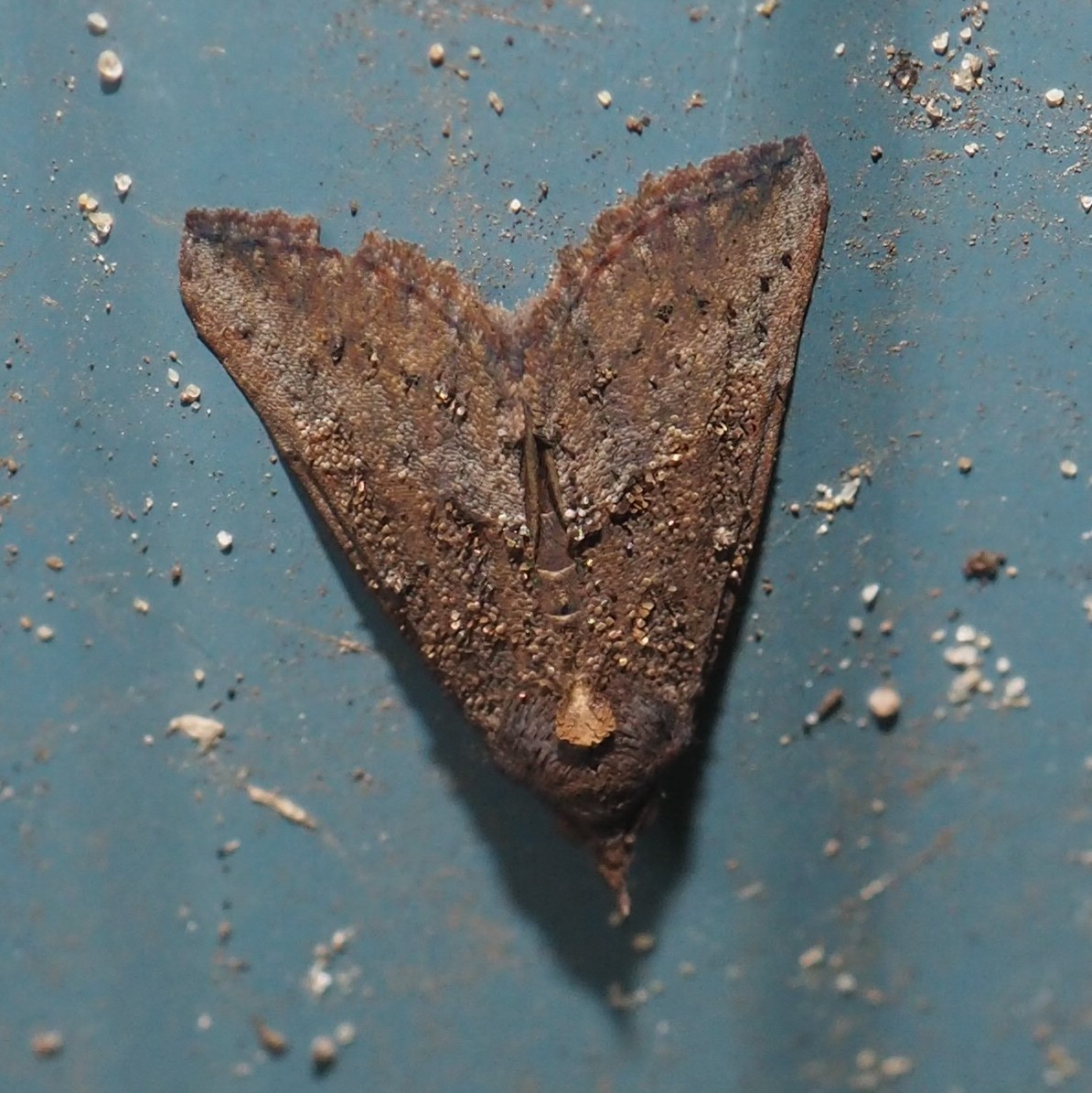
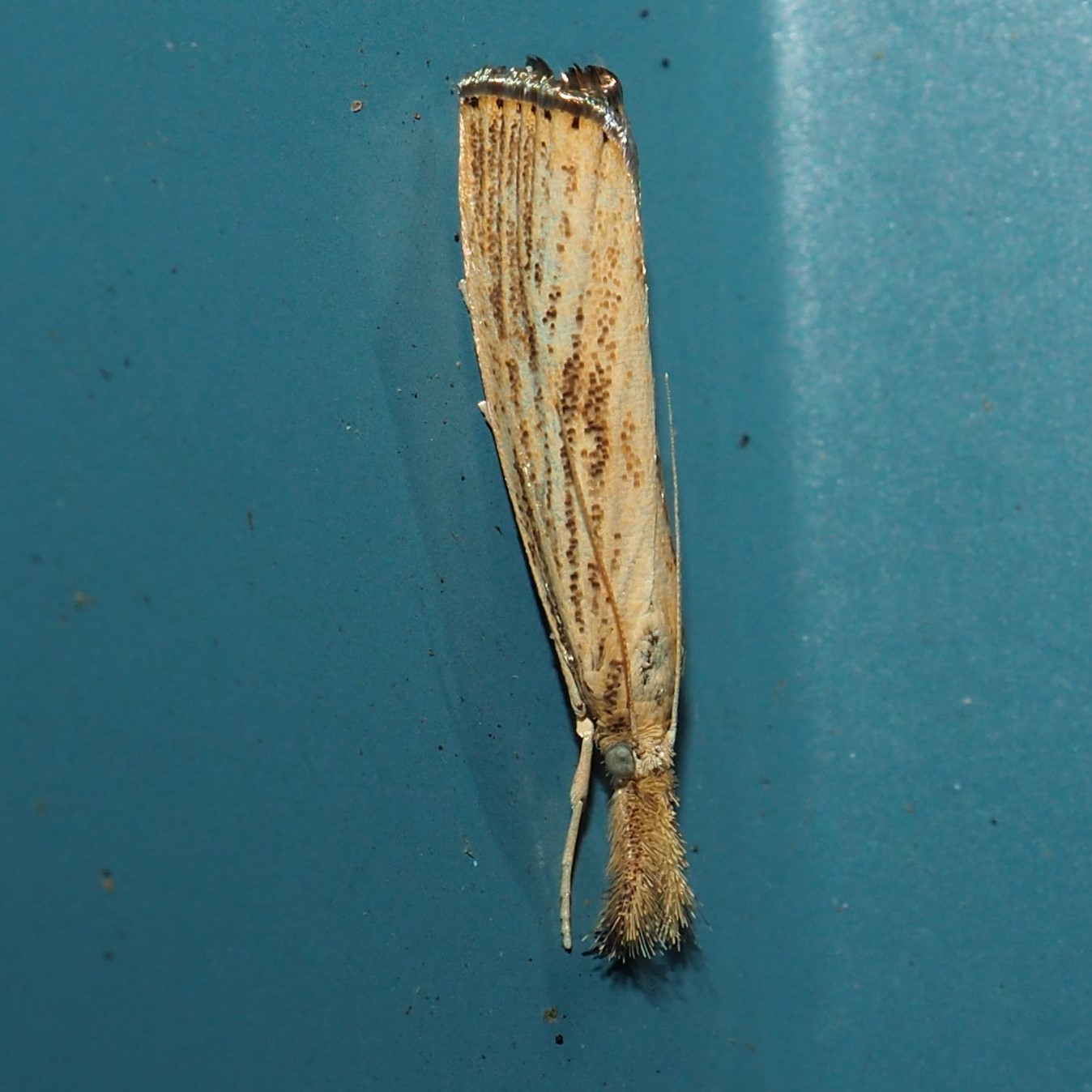
I was about to say we had finished with the Moths, but I forgot I saw this Looper (Inchworm), the caterpillar of a Geometrid Moth.

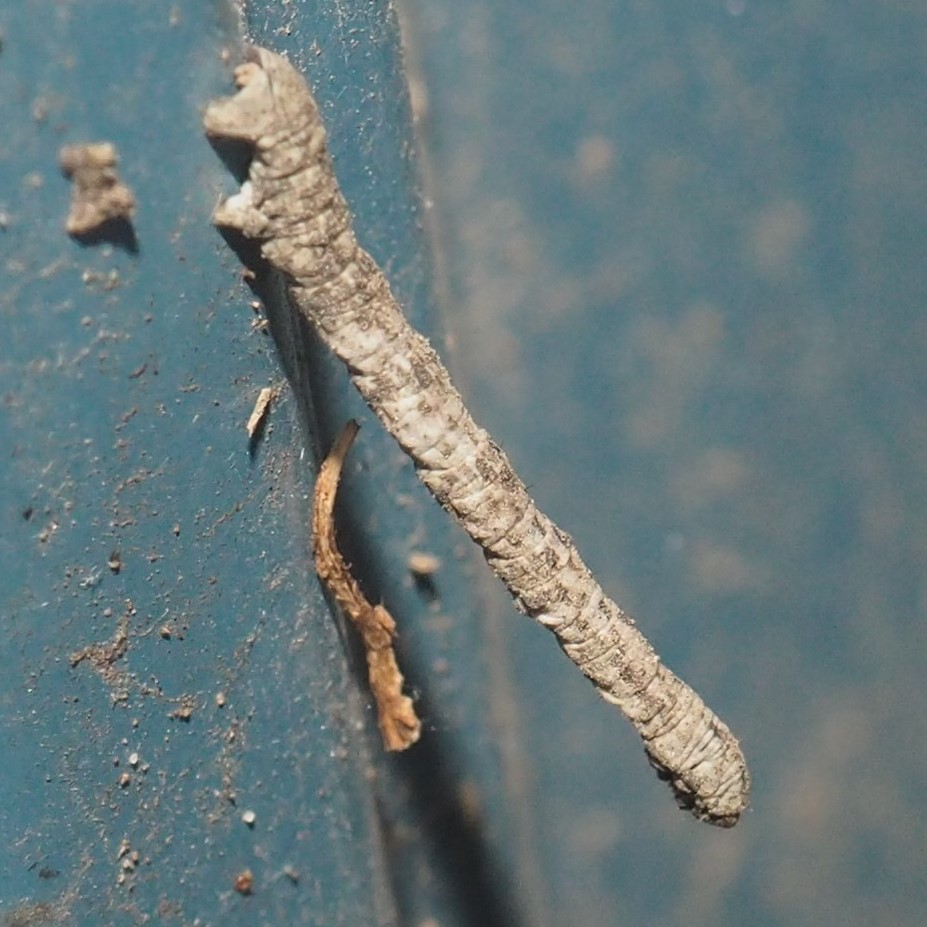
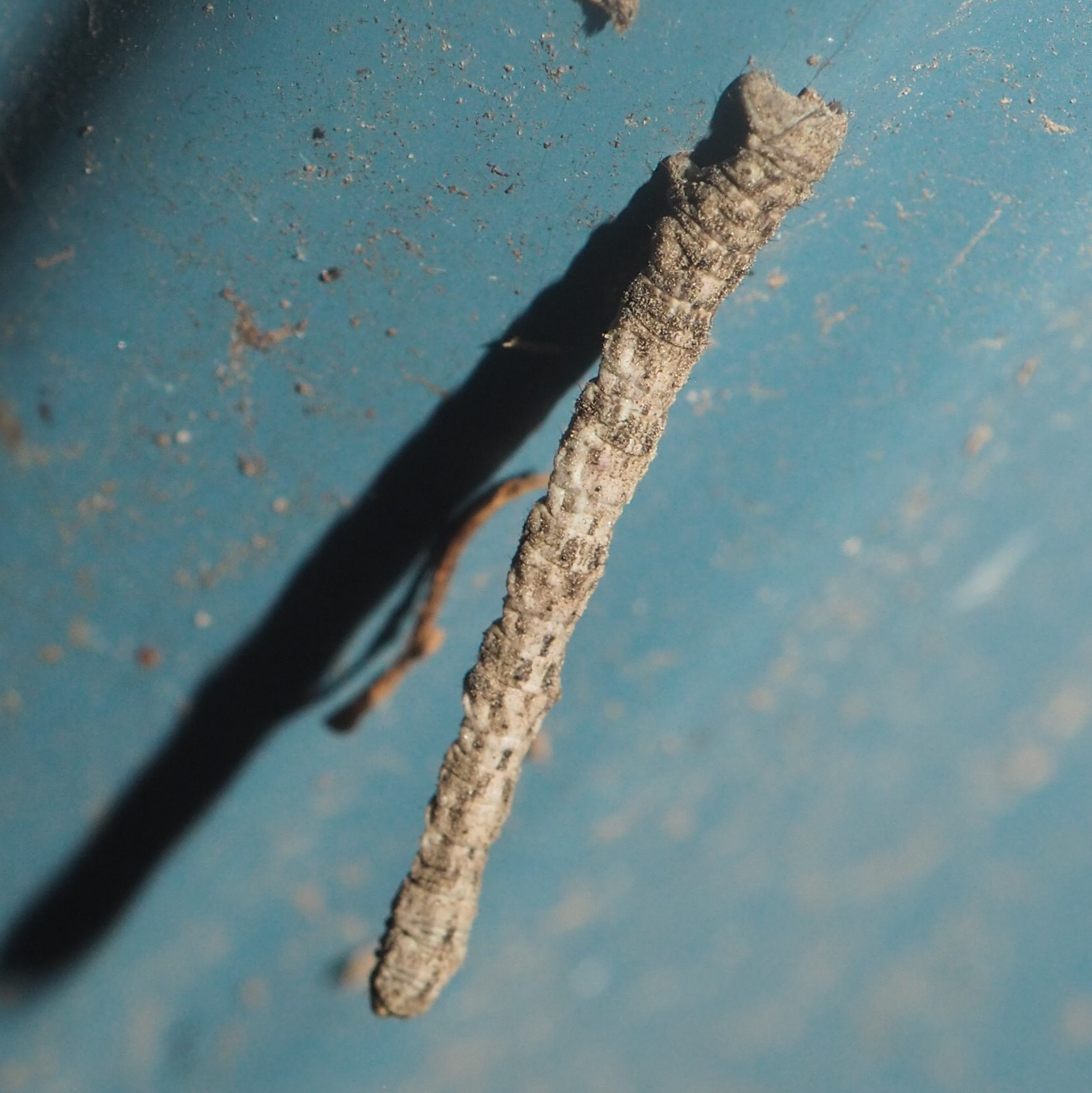
So now it's time for us Flower-lovers to take a little stroll through the just pre-Fall colors. Here's one of the very scarce (this year) Japanese Anemones. Next, the August Orange Day Lily in one of its exiting photos. It has now bloomed for a month and more than a week. Last, the Fall Phlox - this is the "cultivated" or "store-bought" version. What a color!

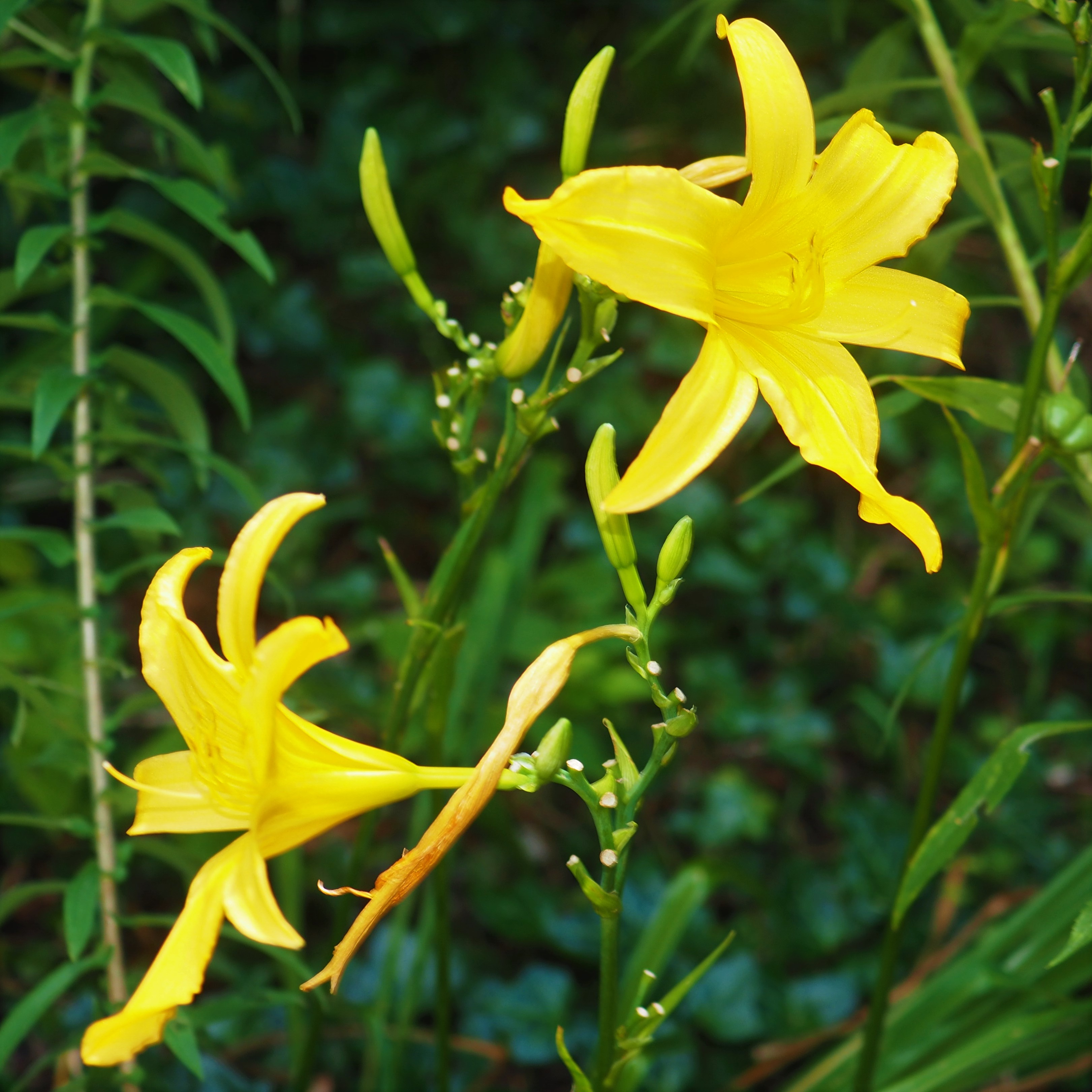

Here is the Tall Evening Primrose which blooms overhead by the front walkway. Actually it is REALLY blooming overhead since that very tall plant is now bending over the sidewalk, and truly above my head. Next, what I thought would be the last of the Rose Campion flowers, but here is another Bud!

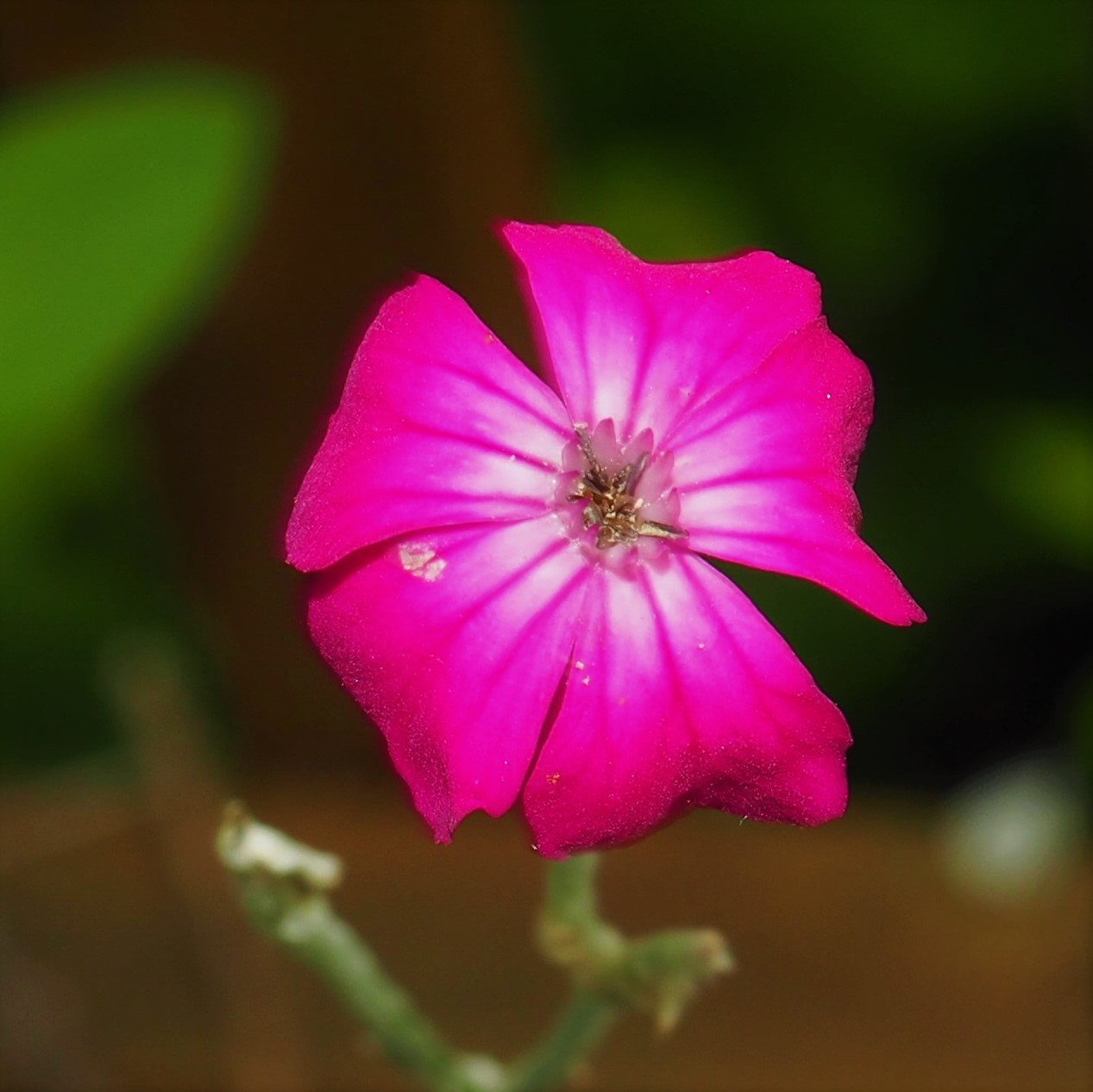
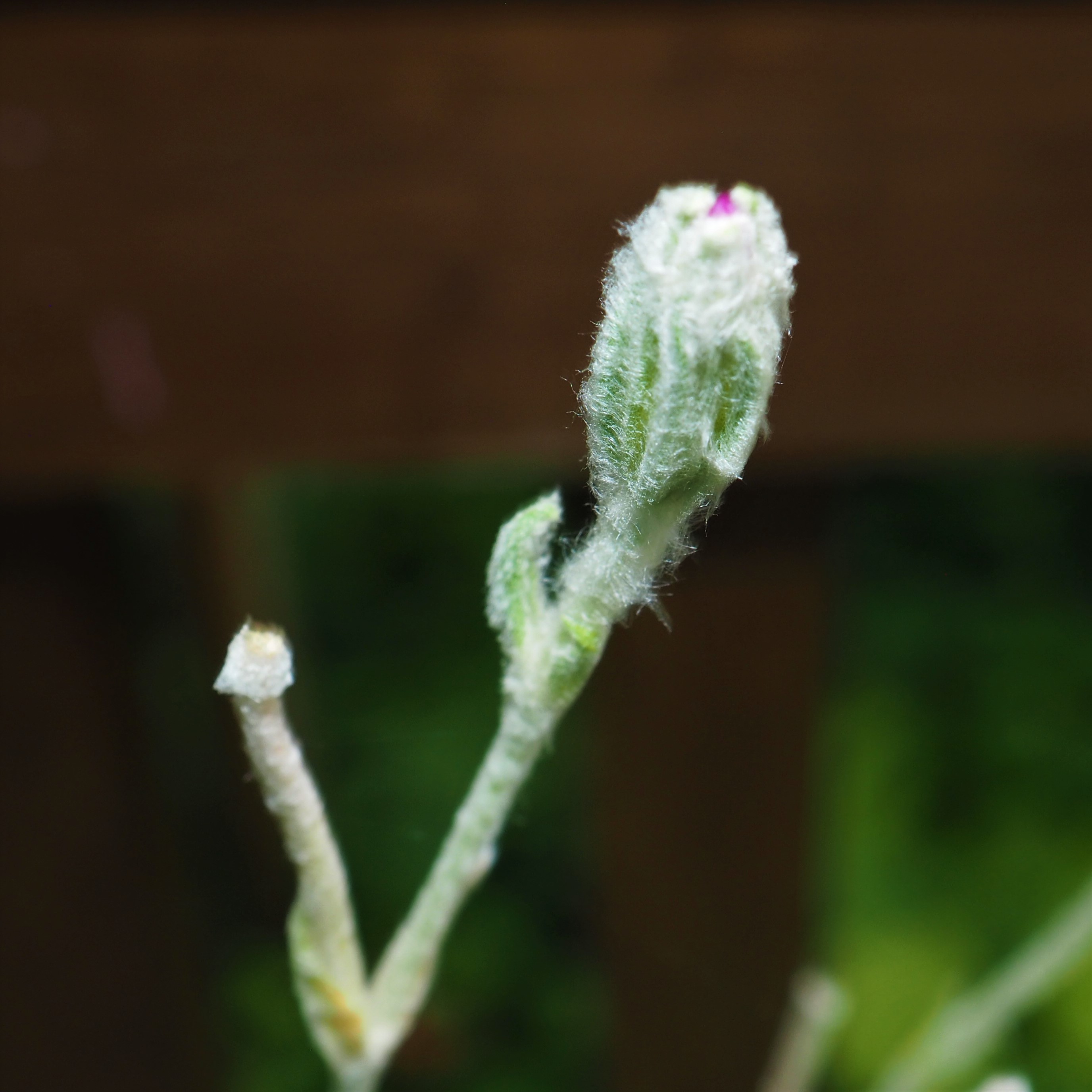
Don't these blue berries look like Blueberries? Well, don't load them up with cream and sugar just yet. They are hanging from a stem where there used to be Solomon's Seal blossoms! Alphabetically we have seen all the flowers but some. I've been stashing the Asters, wondering when you would say, but WHERE ARE THE ASTERS? Well, HERE THEY ARE! This has been a great year for the most gaudy gorgeous Pink colors.

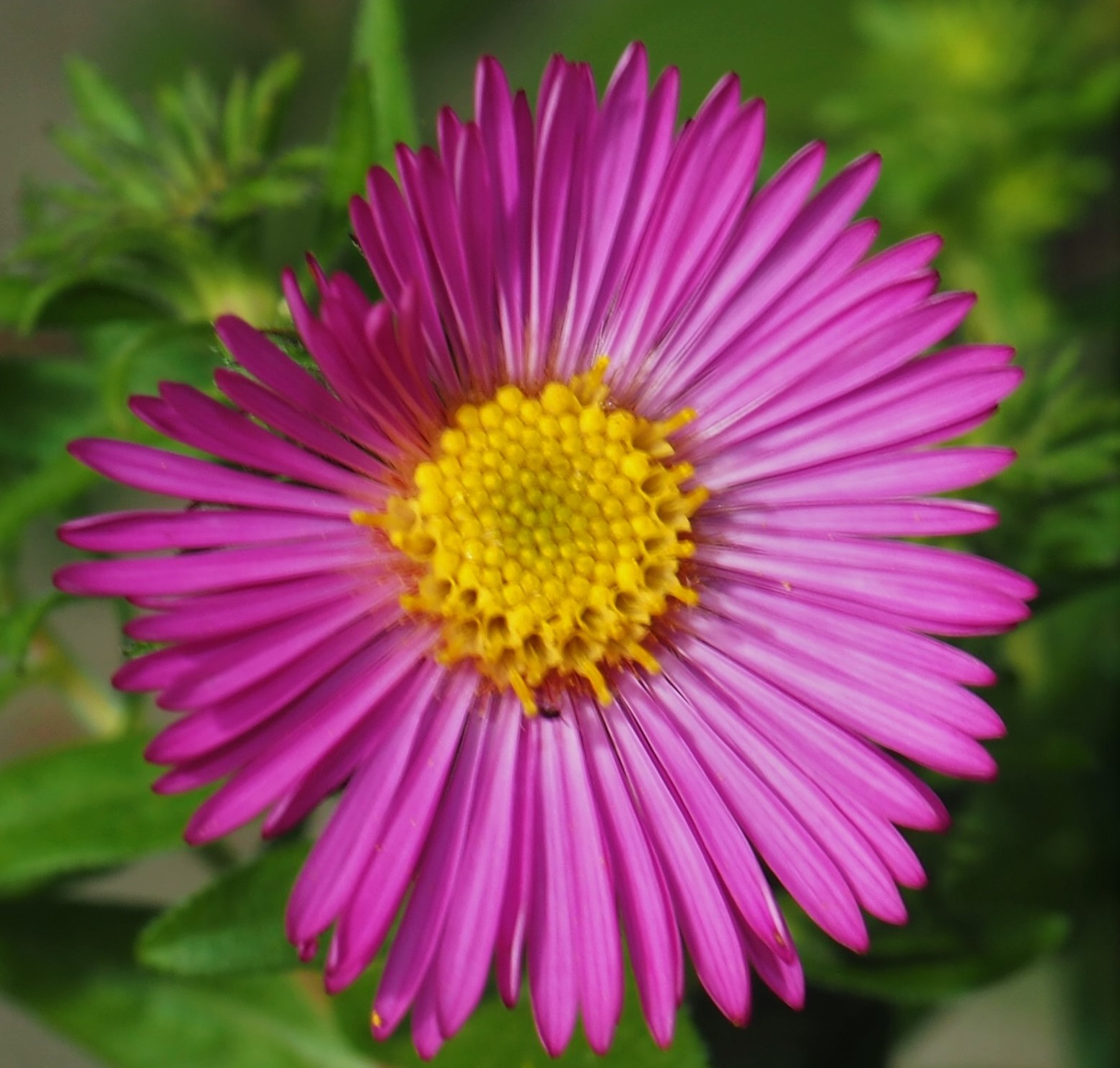
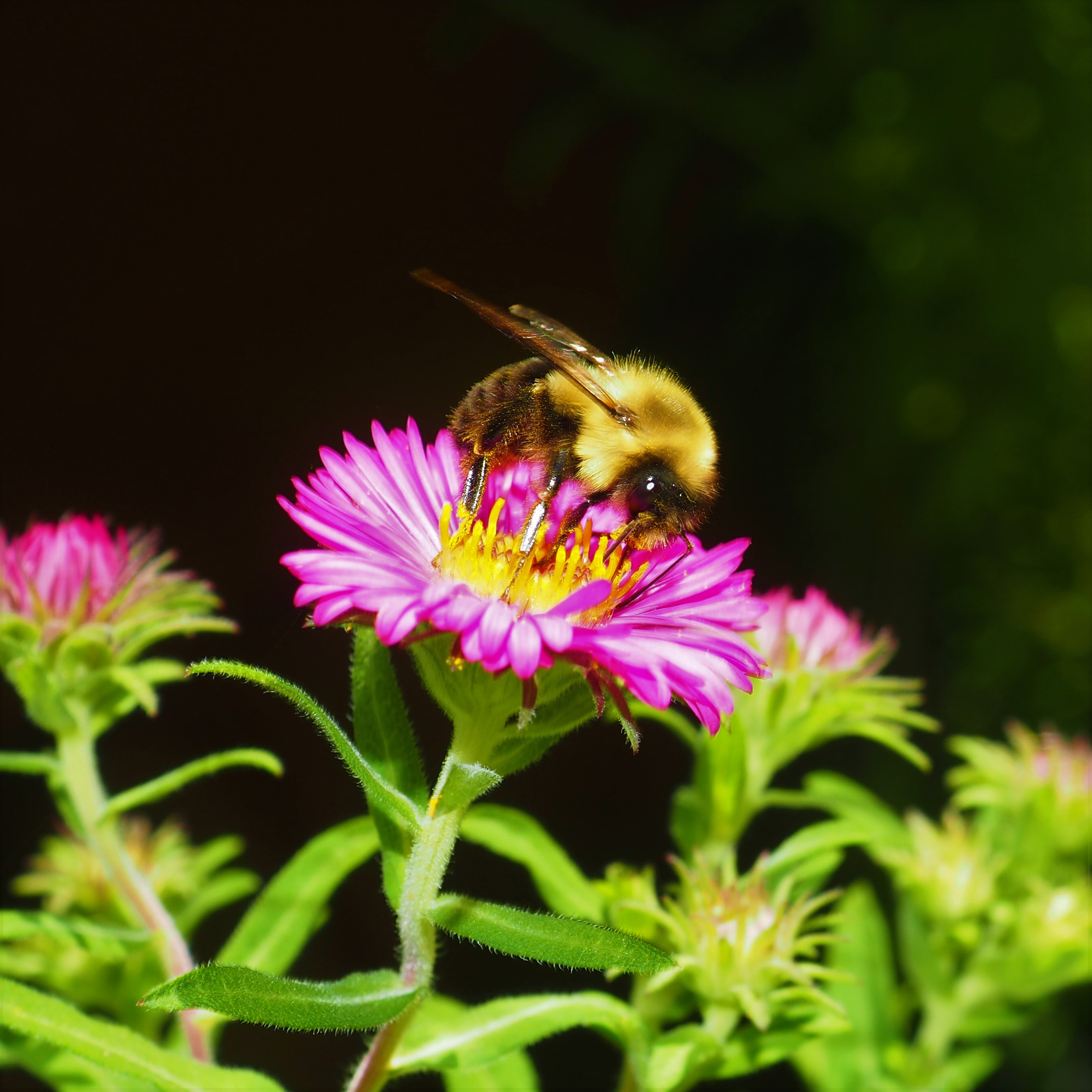
A field of Purple Asters!
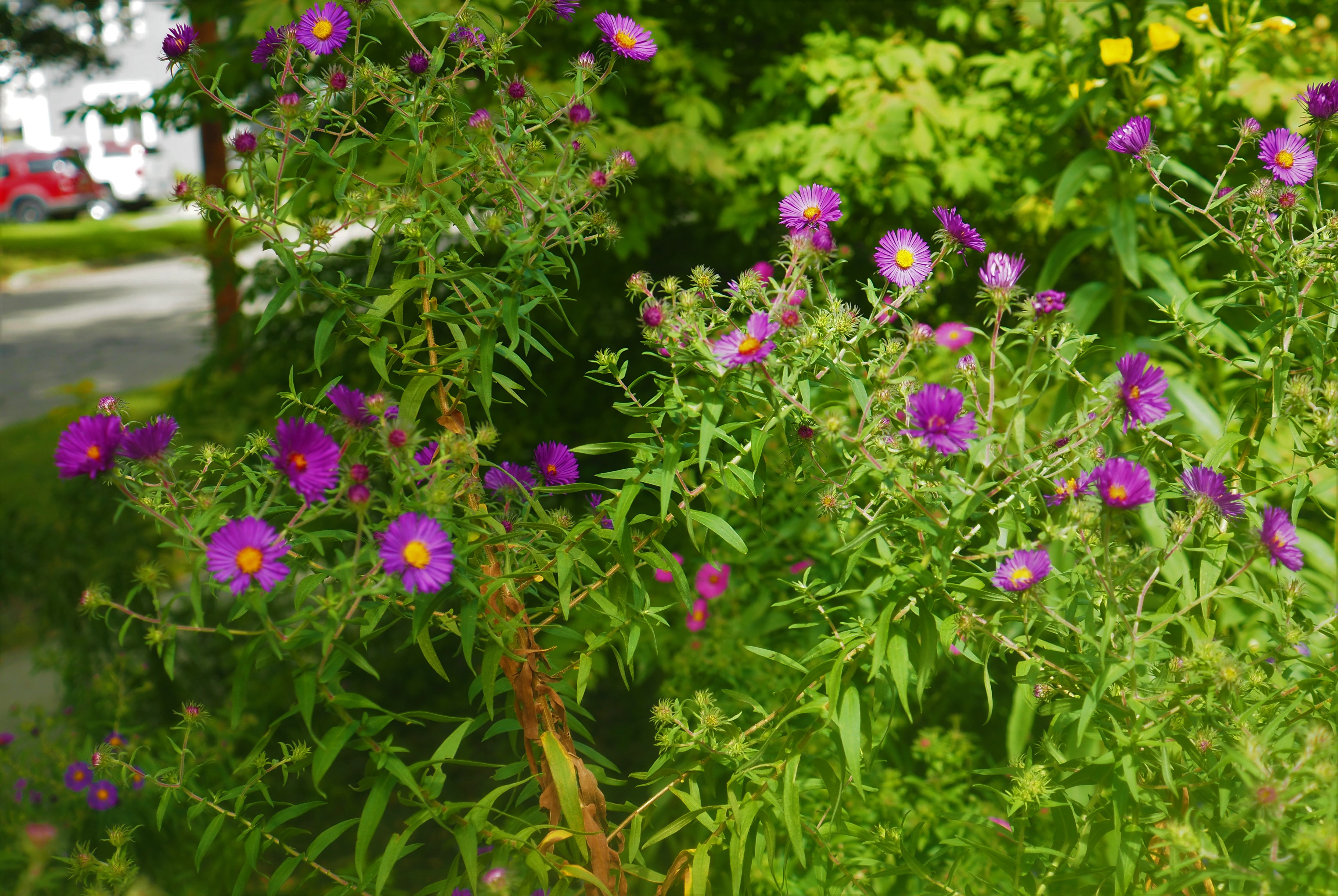
Some Morphings of the Purple Asters by the front step rails.
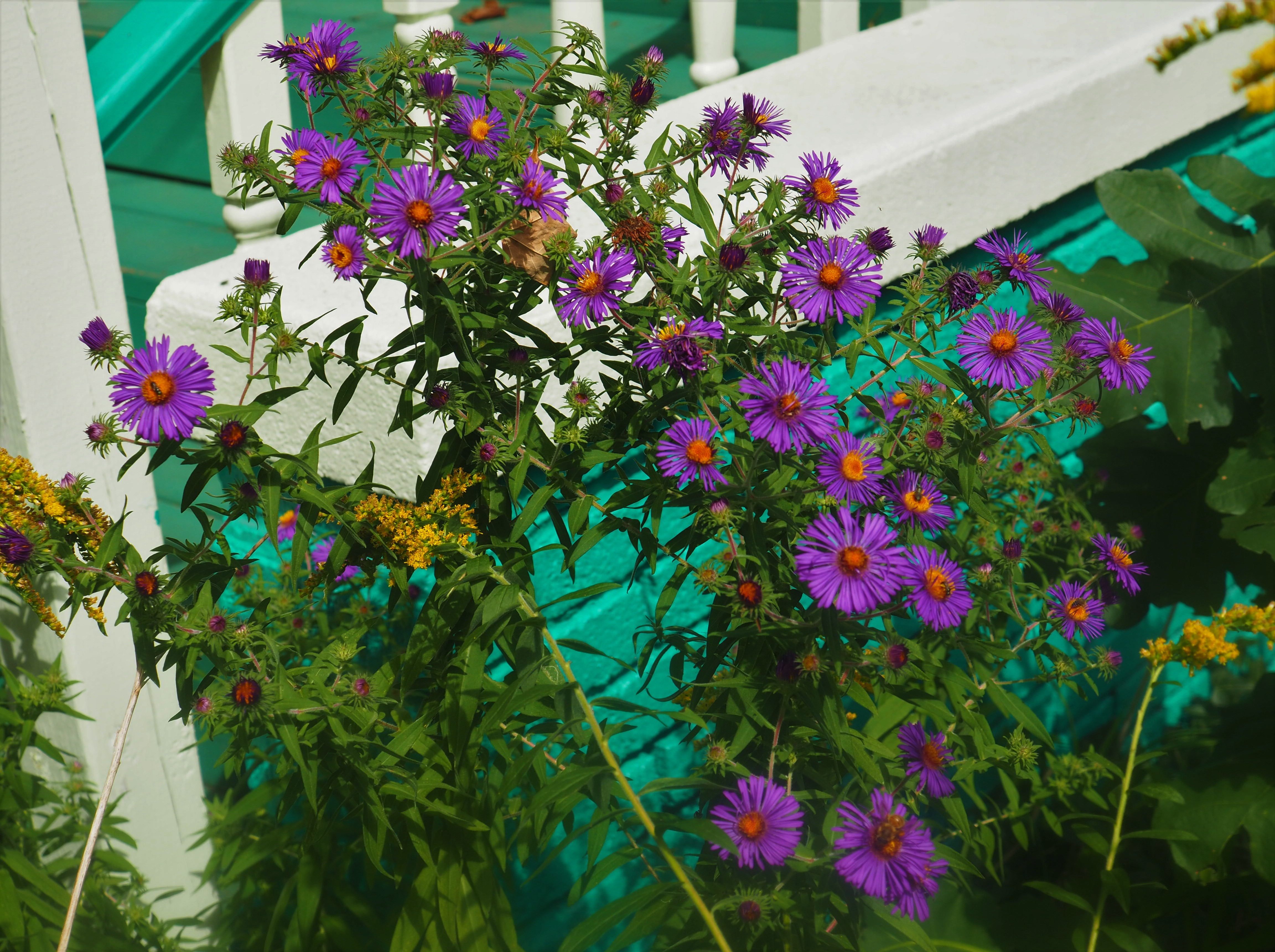
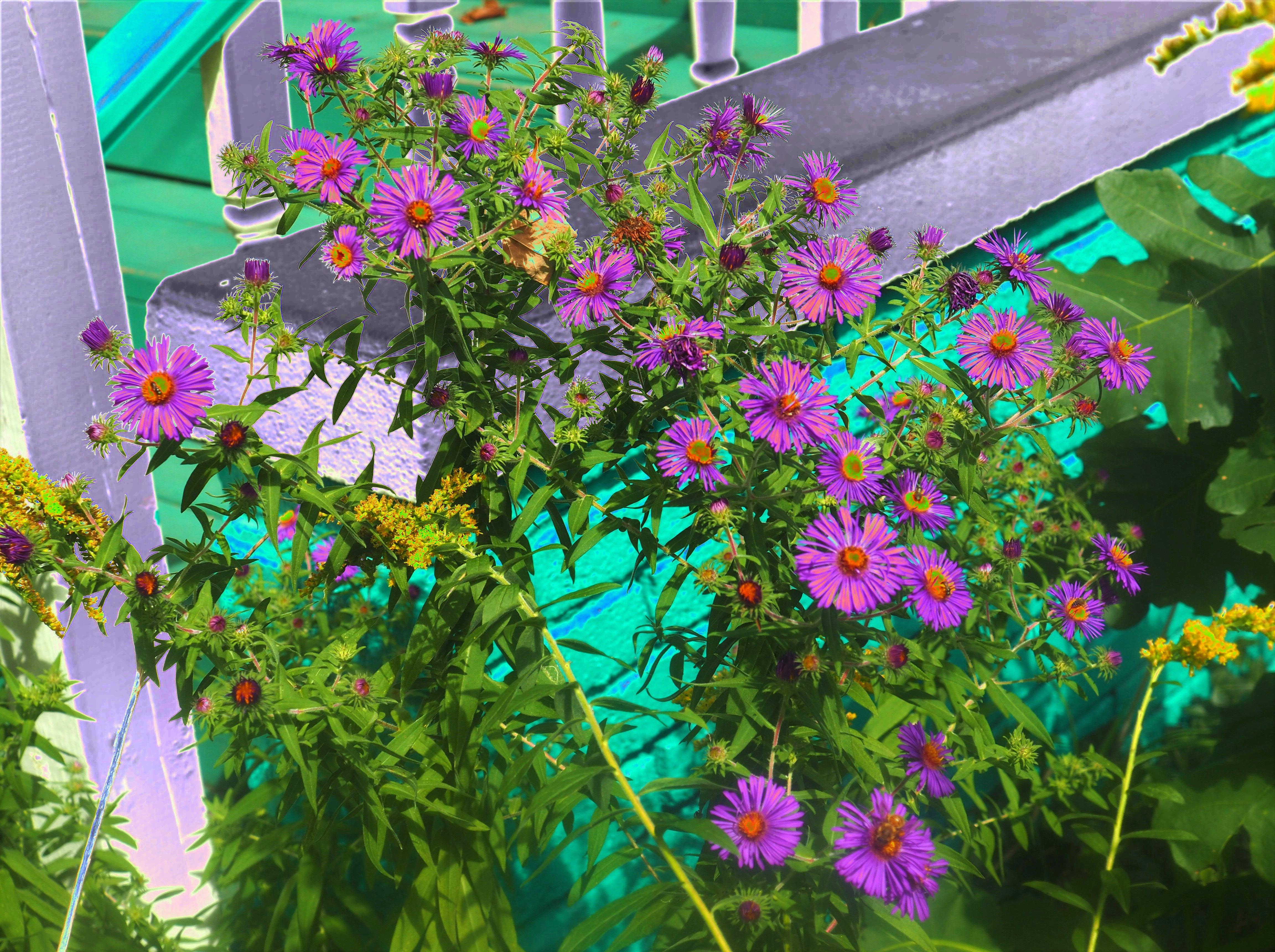
More.
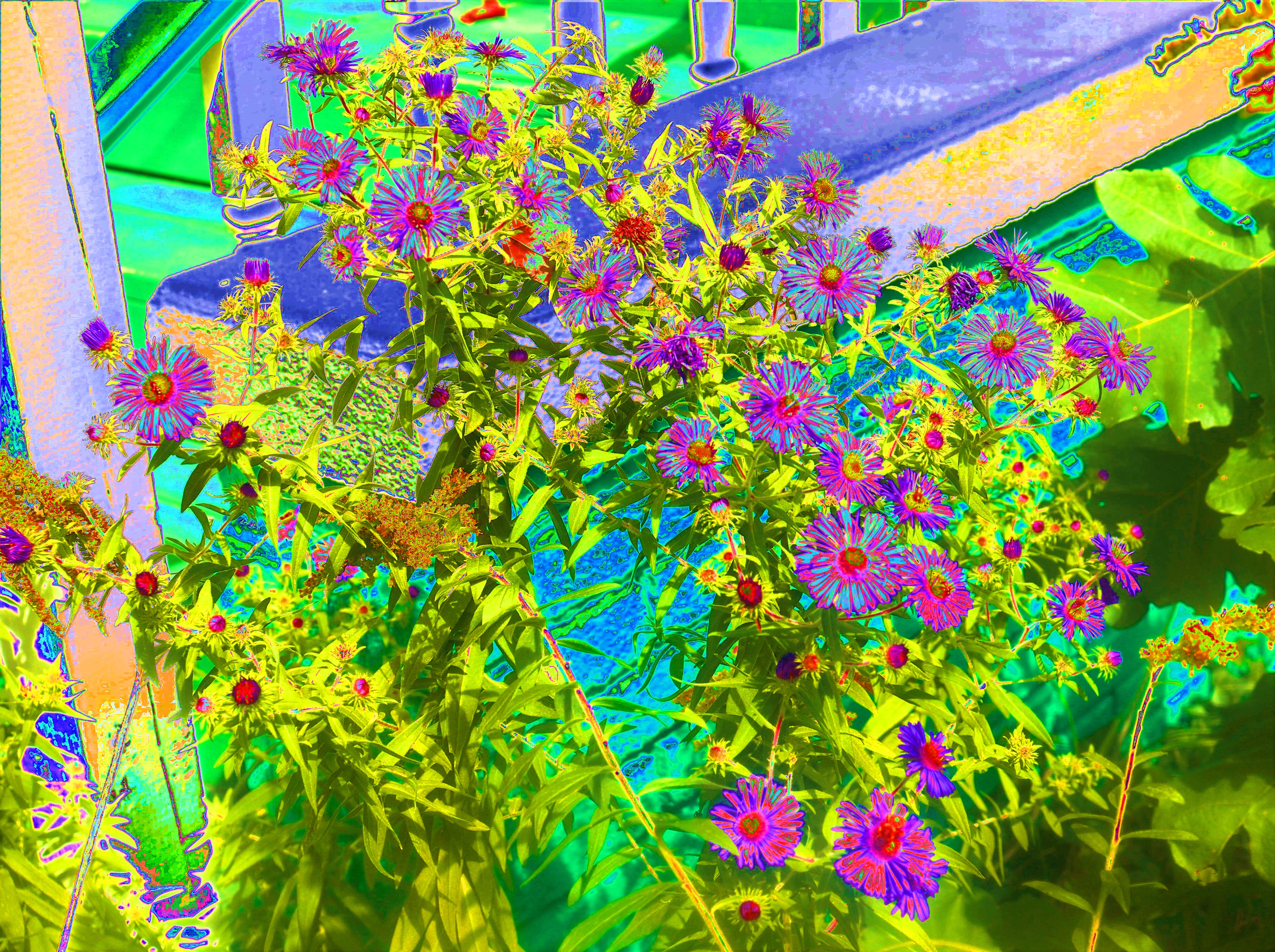
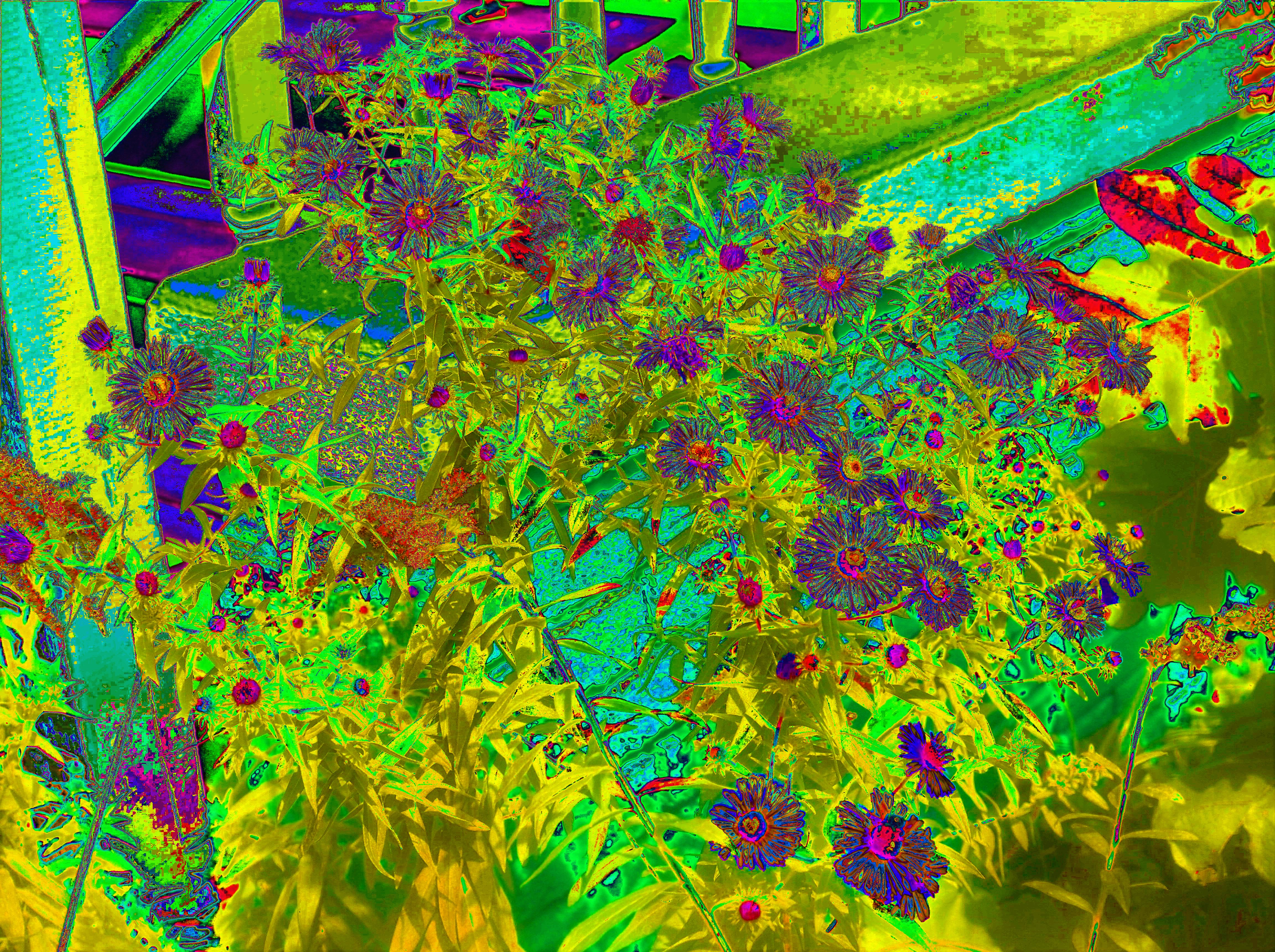
Now something for us Spider Lovers too. First, some familiar Spiders, like this Cellar Spider. Then a little Cobweb Spider. This third thing seems to be a storage device for food for later, or maybe a concretion of odd empty shells, etc.
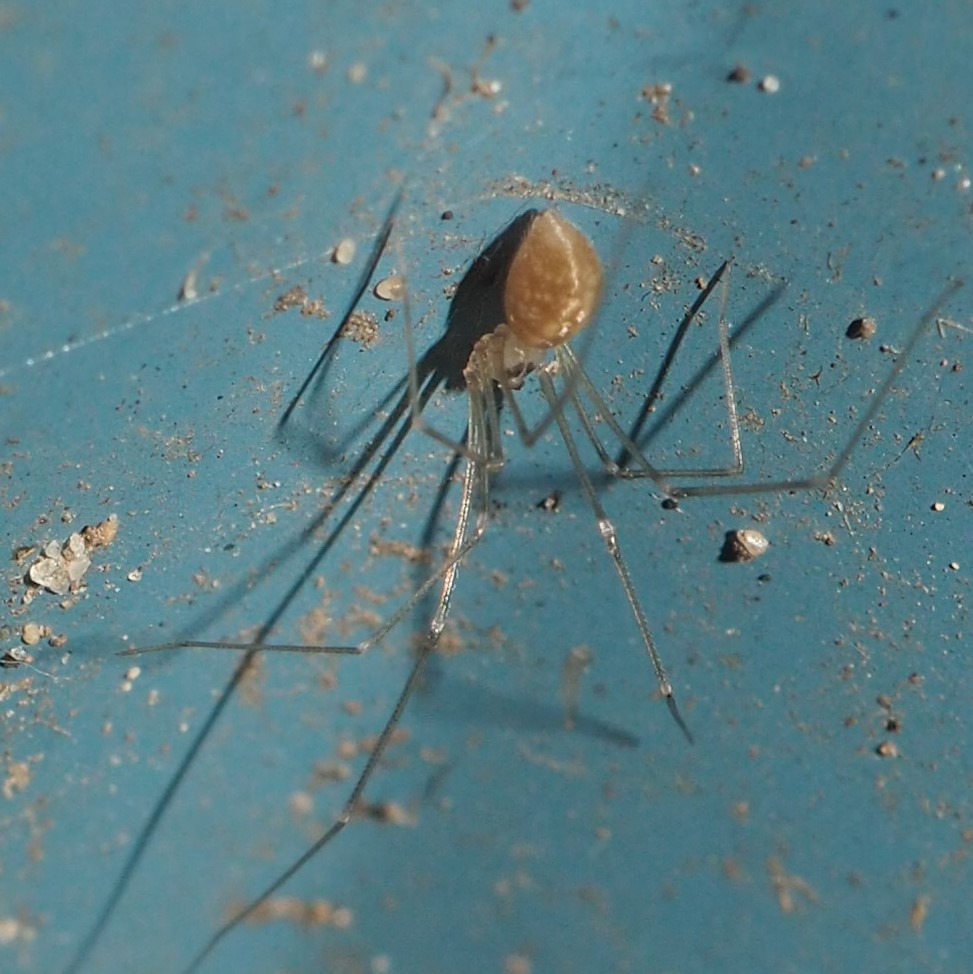
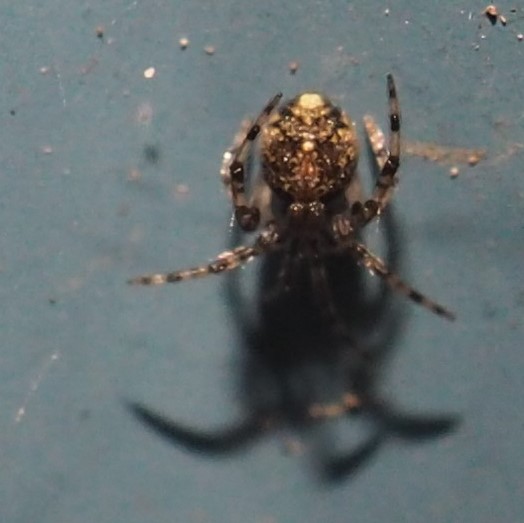
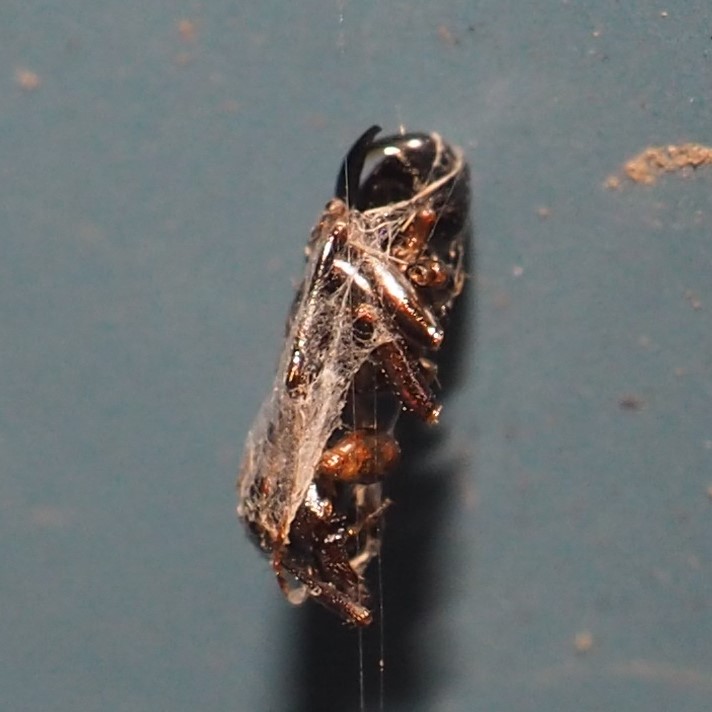
Here is a juvenile Flea Jumping Spider, Naphrys pulex. It has a good bit of growing into the final sleek adult we are used to seeing. Third is a more nearly adult version. Fourth is another Jumping Spider, which seems very familiar, but I'll have to work a bit to find its name.
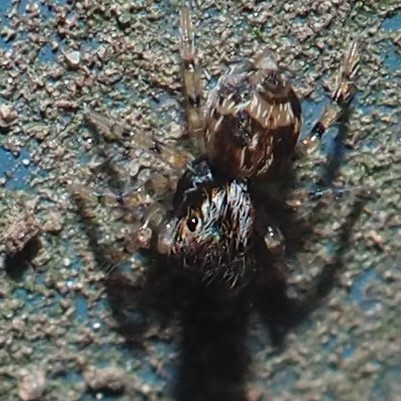
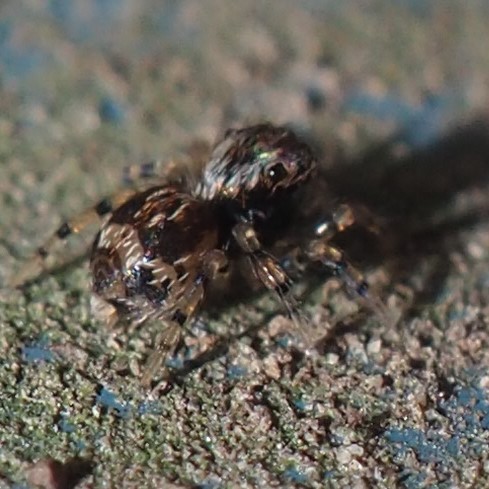
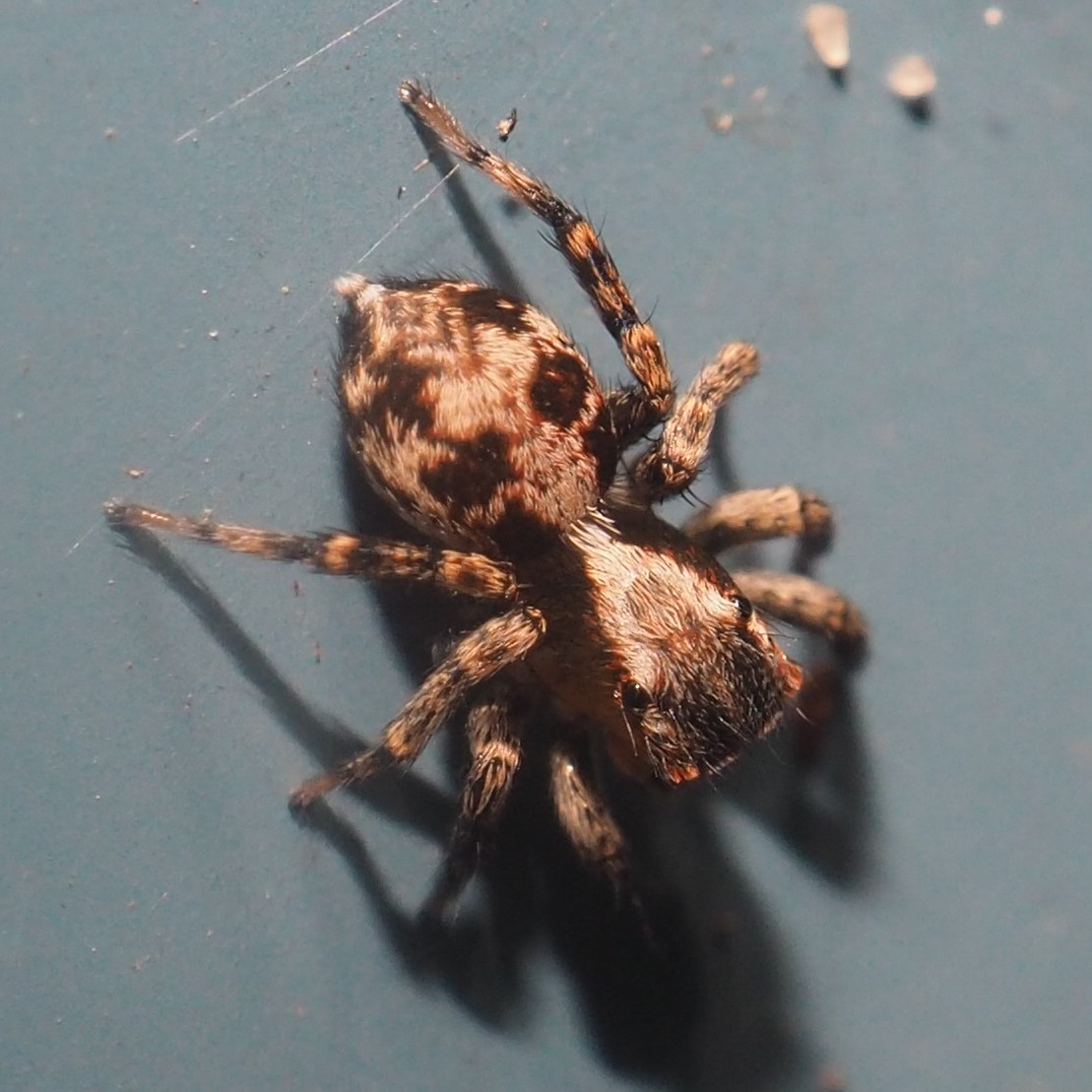
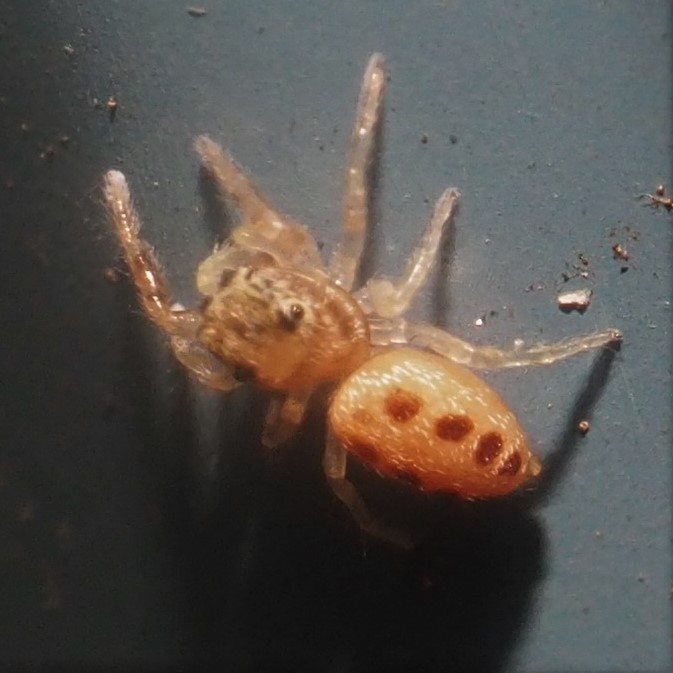
Now another Spider we have been following for a few weeks. At first this juvenile Mimetus Pirate Spider didn't look very recognizable, except by taking a waist-level shot every little while and watching as the white smile on the abdomen becomes whiter as the surrounding colors become darker. Also the little figure on the head (he lower part of our pictures) has had to mature to look pretty much as it should if this Spider is to morph into Mimetus puritanus, our favorite Spider. Here are pictures taken on September 5, 7 and 9. Note the smile in the last picture!
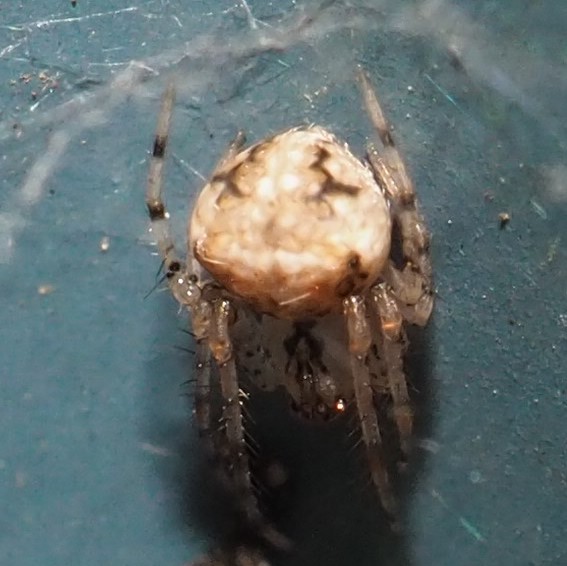

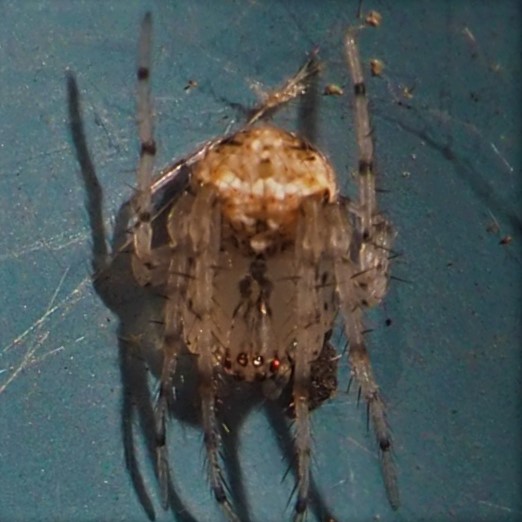
This first one is a Mystery. Could it be a Grass Spider? Following are two Grass Spider portraits. The third shows our Spider at the entrance to its web nest. From this door it will run out and capture prey and then carry it back into the central nest. The first Spider might almost be a Crab Spider, maybe a Running Crab Spider, the way the front two pairs of legs are held so closely together. But I will still look this one up. Flash! A person called @htct in iNat identified it as a Nursery Web Spider. I had forgotten they also hold their legs together like that. But all the ones I've seen have been yellow. This one must be a juvenile!
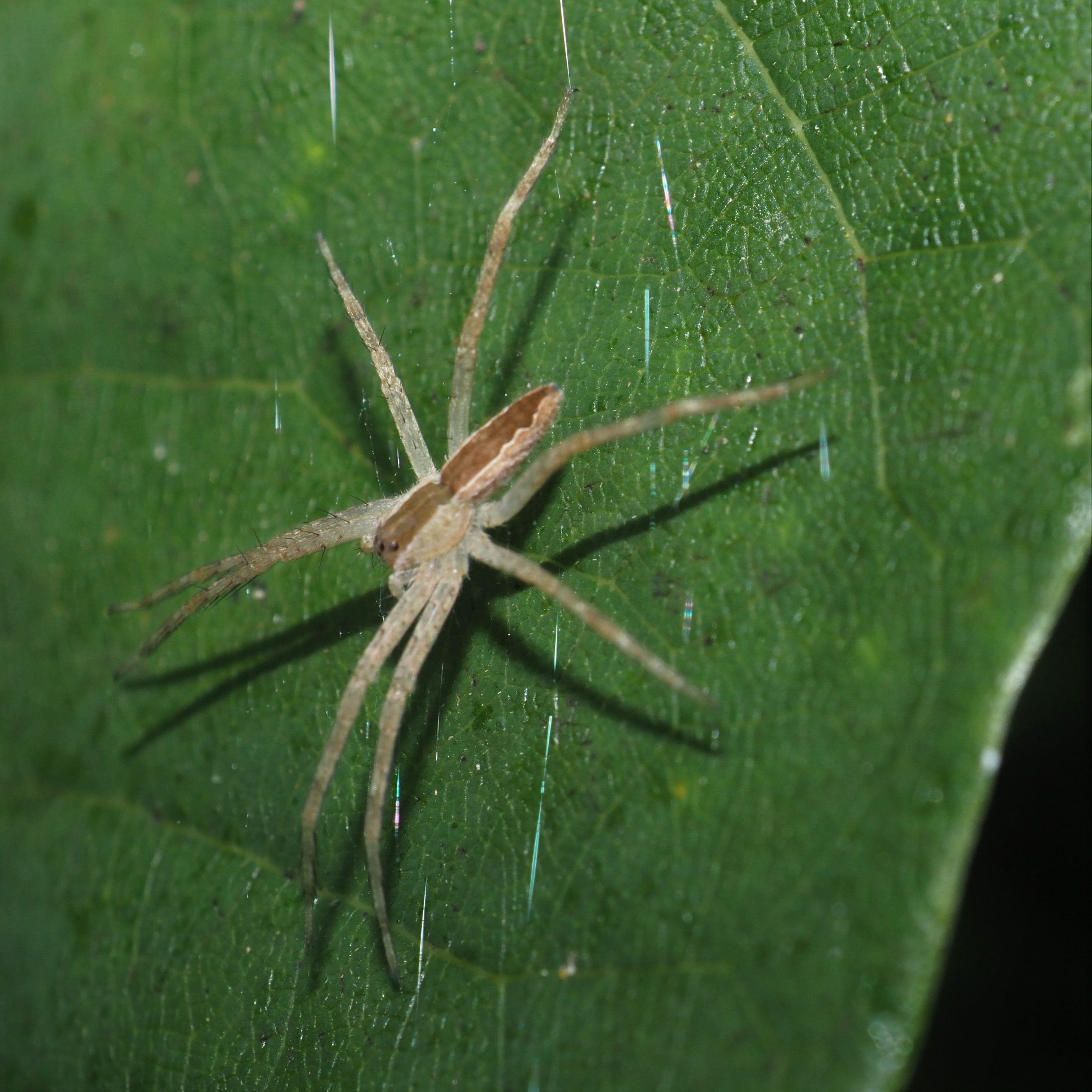
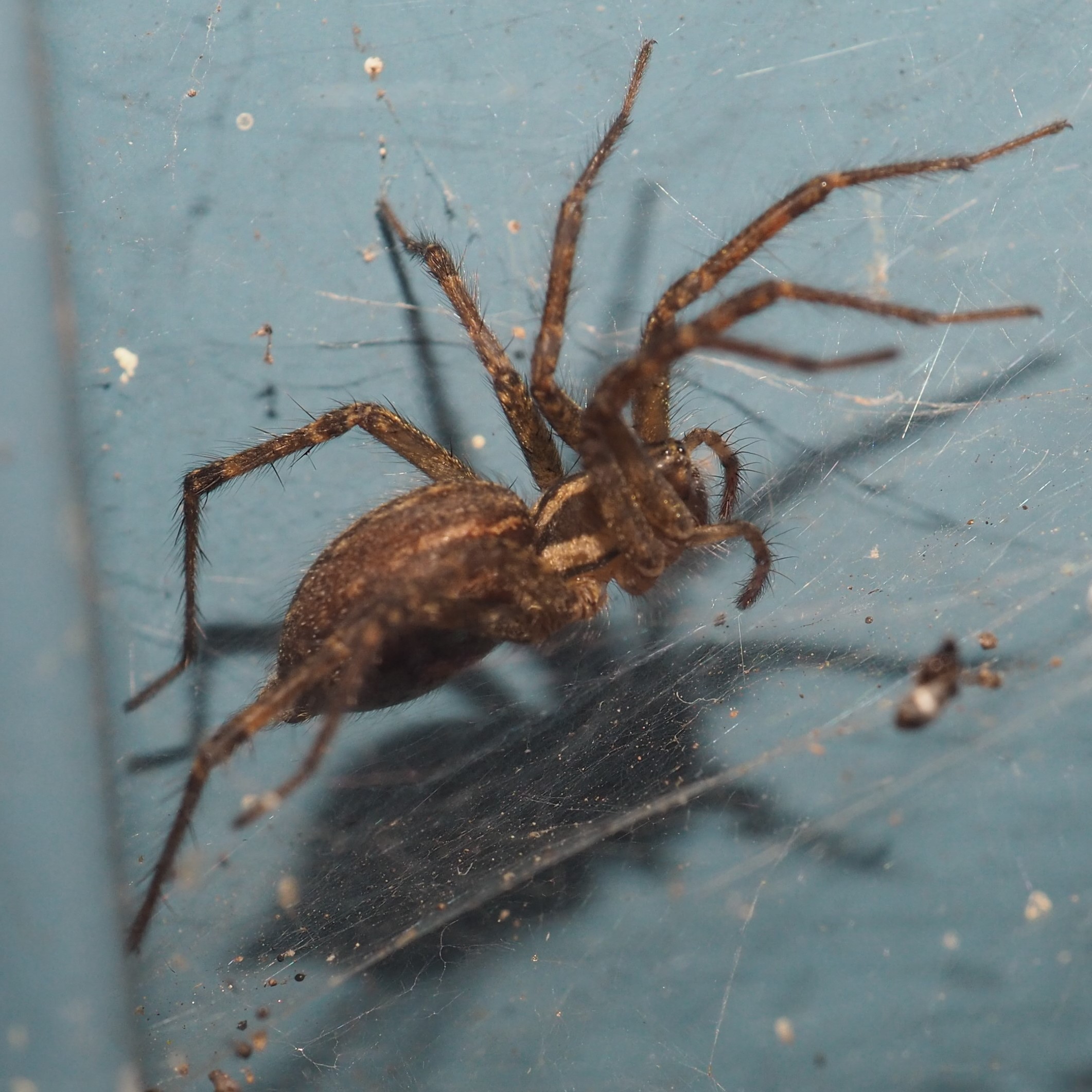

To the Wasps! This first one is one that I had mistaken for a Fly but is clearly a Wasp. Its enlarged head suggests it is an Apoid Wasp, where Apoid means "like a Bee". The Second seems to be a Grass-carrying Wasp, while the Third is a European Paper Wasp. This last Wasp is another Paper Wasp in the same genus (Polistes) as the European. But this one is the Northern or Dark (fuscatus) Paper Wasp. What a handsome Wasp!
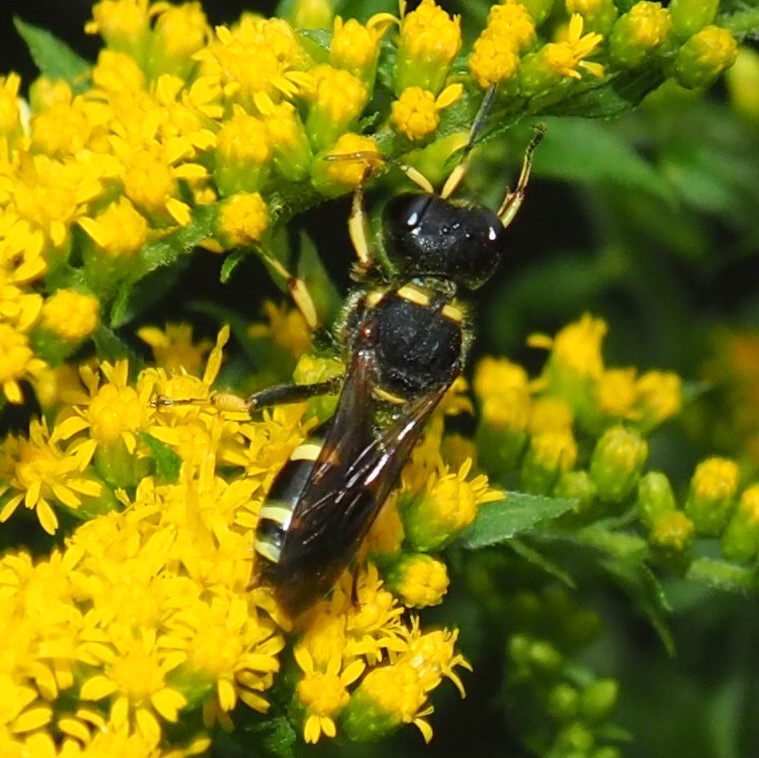
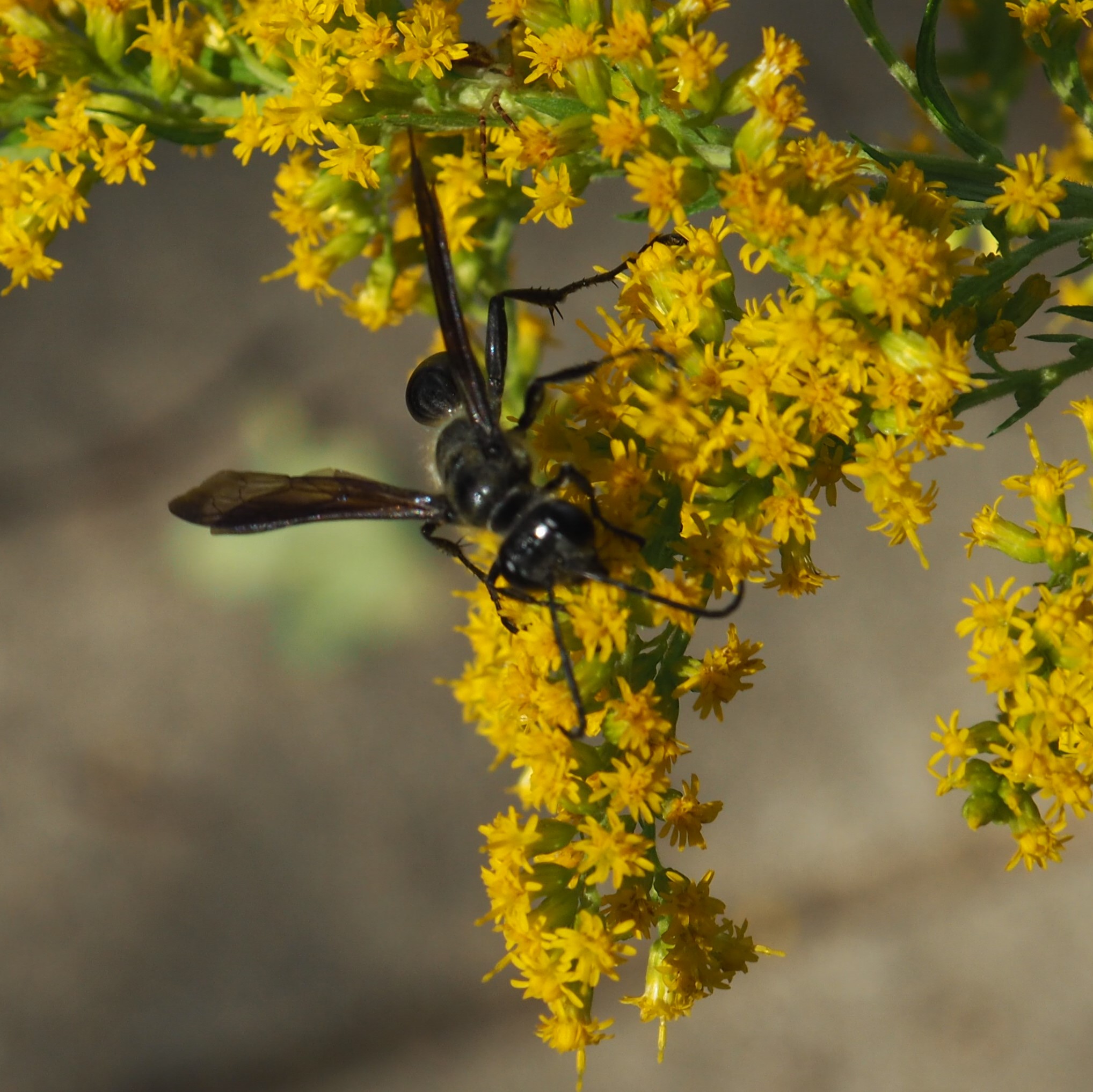
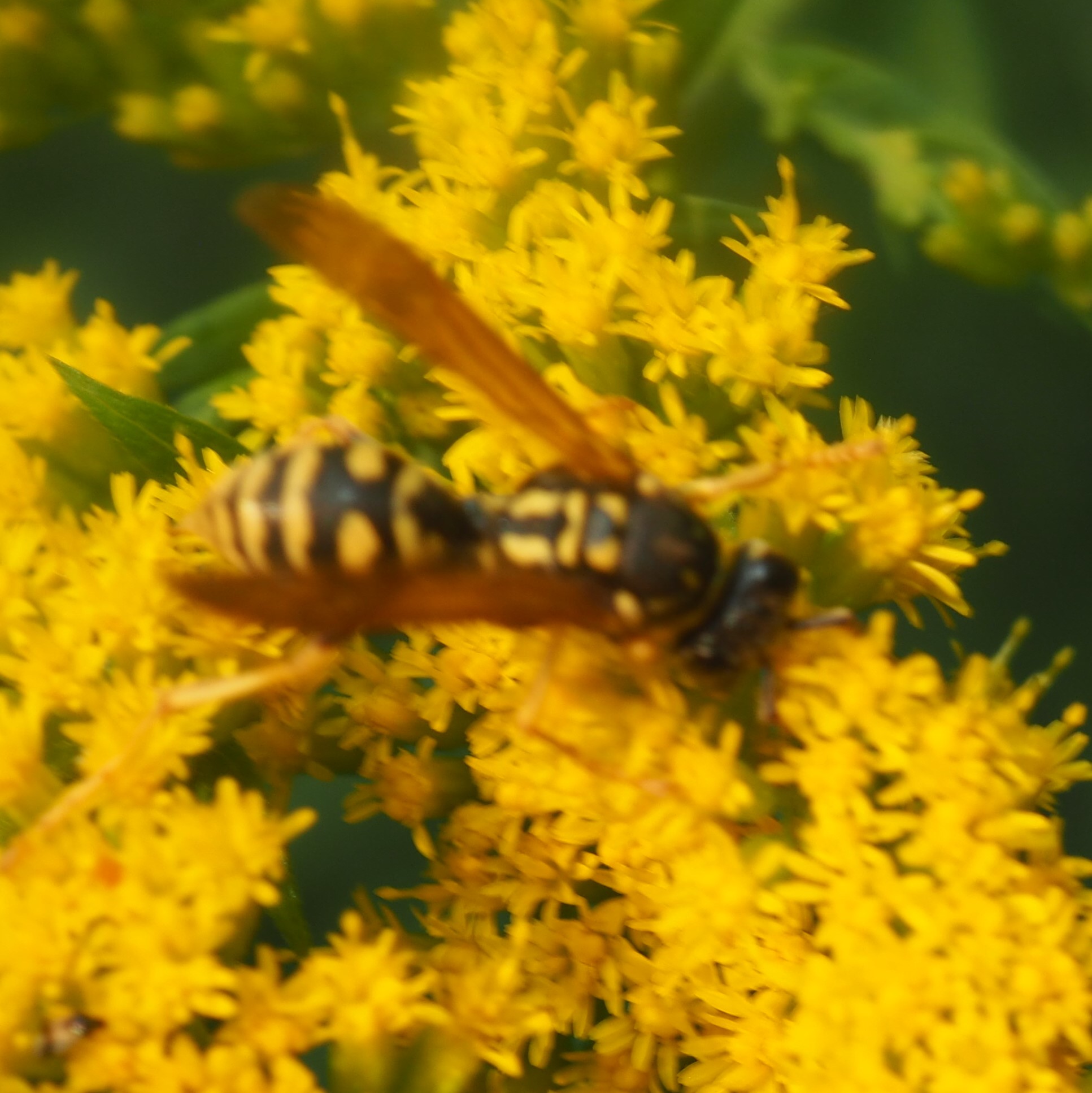

Now for a few creatures that don't fit into the categories above. The First looks to me like a larval Lacewing. I've no idea what the next one is, but will submit it to iNat now. The next-to-last was found on the North Wall at about the level where the Barklice usually congregate. And the last is a Scorpionfly, which is neither a Scorpion nor a Fly.
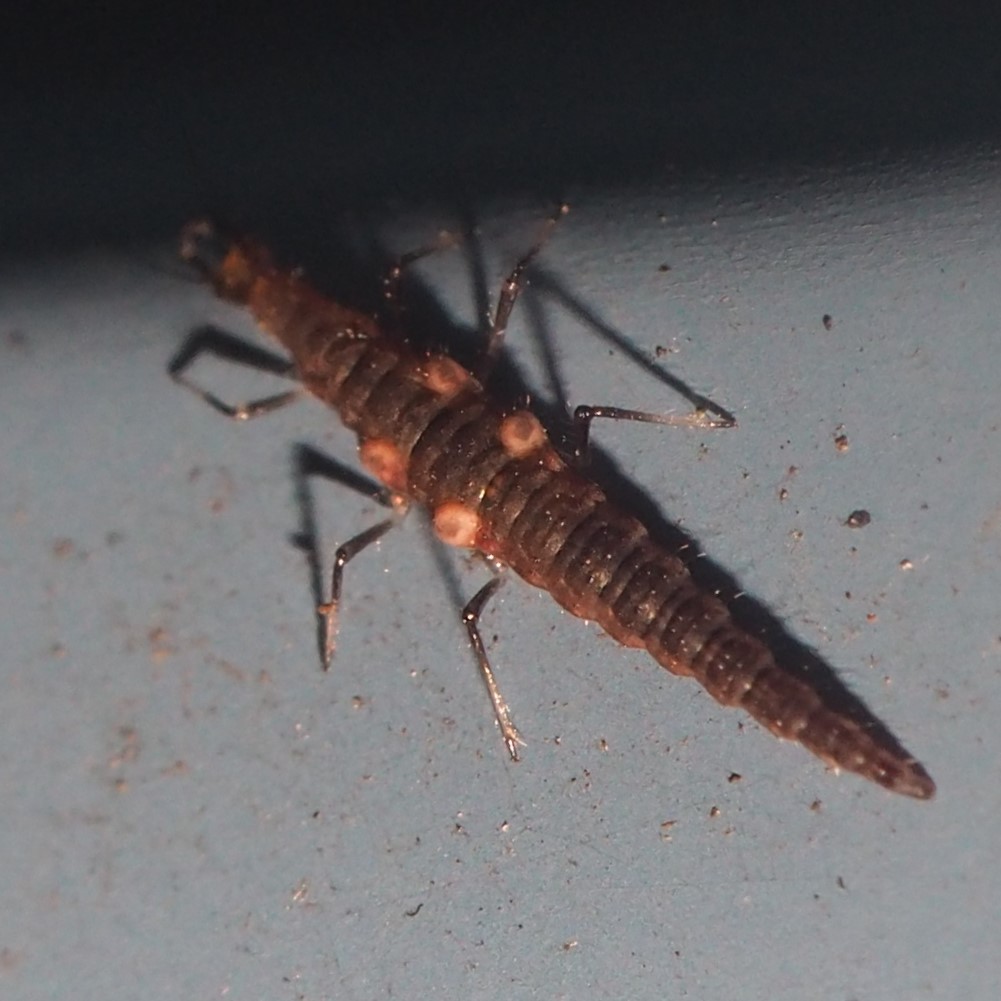
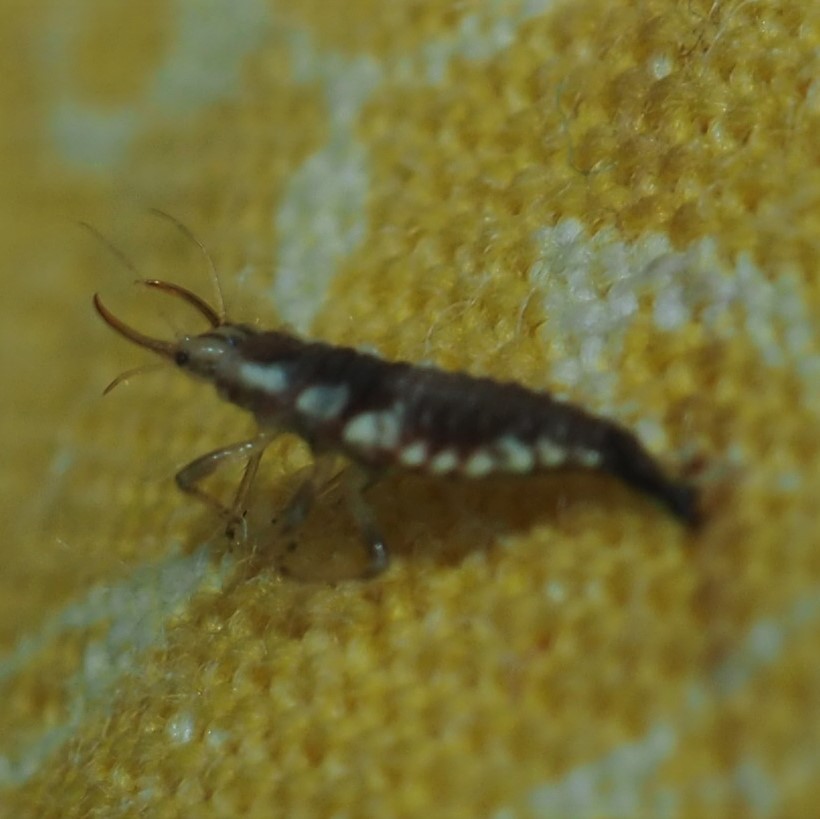

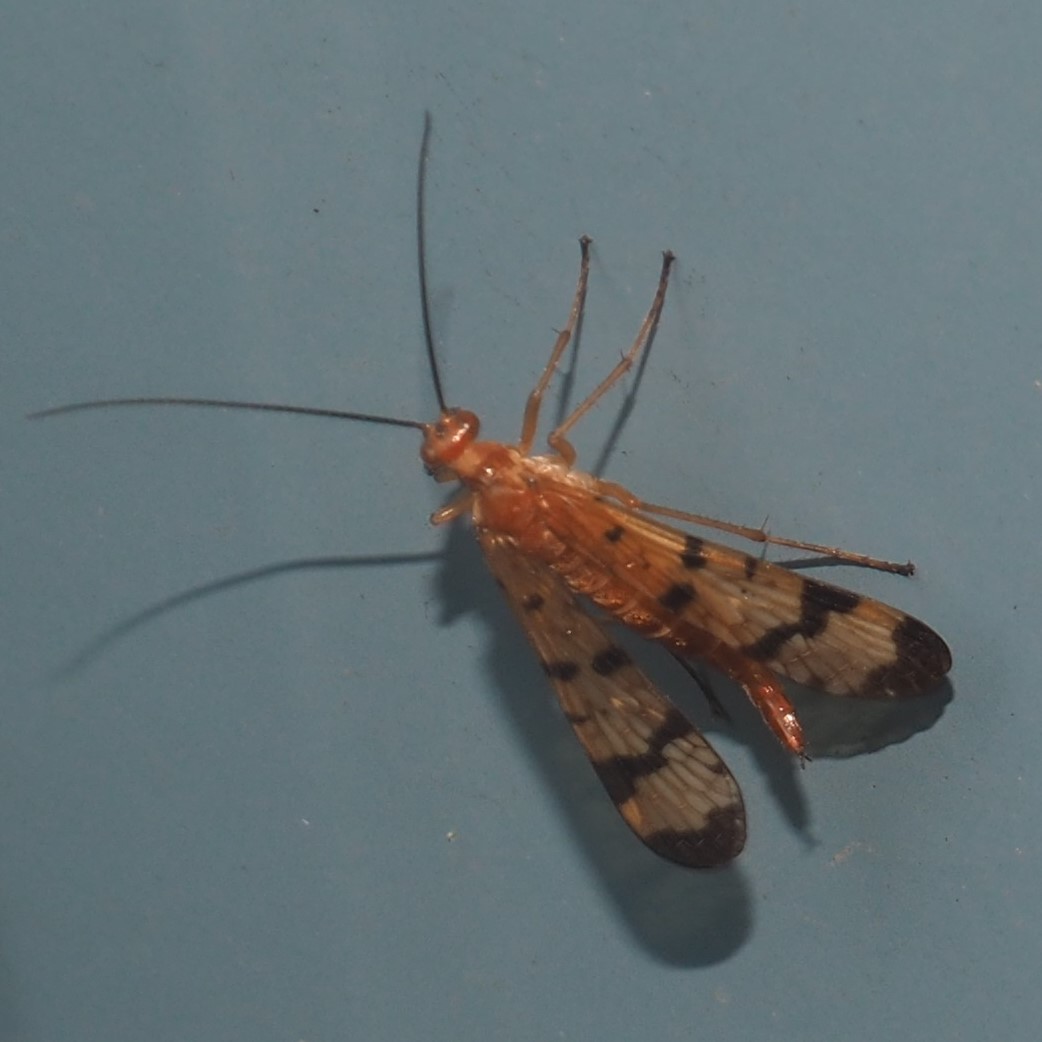
Let's talk about the Pond now. It seems to have recovered, but who knows? Here is something I saw last week when I could see into the Pond Bottom and managed to see some little leaves forming on ONE of the Water Lilies I bought online. This week I used a net handle to lift it up long enough for me to photograph the bottom of that planting box. Here is what we can see now. I'm not going to lift it again even though the water is still not clear enough to see the bottom yet. But now you've had your sneak preview. Here are the two Frogs that we could see until September 10 or 11.The number of Frogs has gone up from three to four. In this picture they are sitting side by side on an old barley bale, and may be observing with no fear the fishes as they swam by. Third is the newest little Frog. You can actually see in this picture that it still has its little tail left over from Tadpole Time. It has been a couple of months since the Frogs mated, so this may be one of the resultant Tadpoles. (Or maybe they all have this vestigial tail.) Good news! The little Frogs all have figured out how to climb up the mesh slope of the "Frog-saver" to get out of the pond. Here are two of the littlest ones.
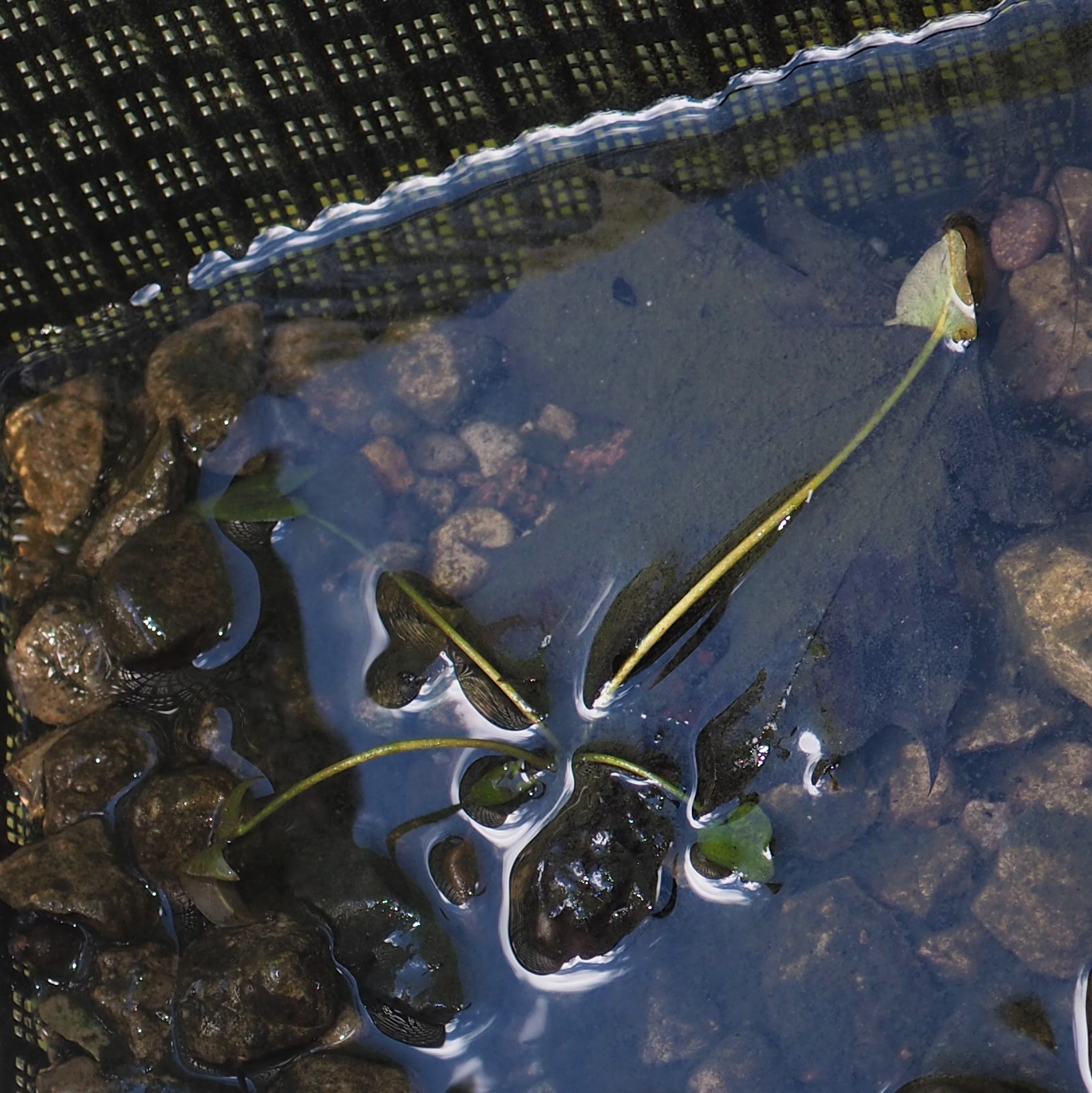
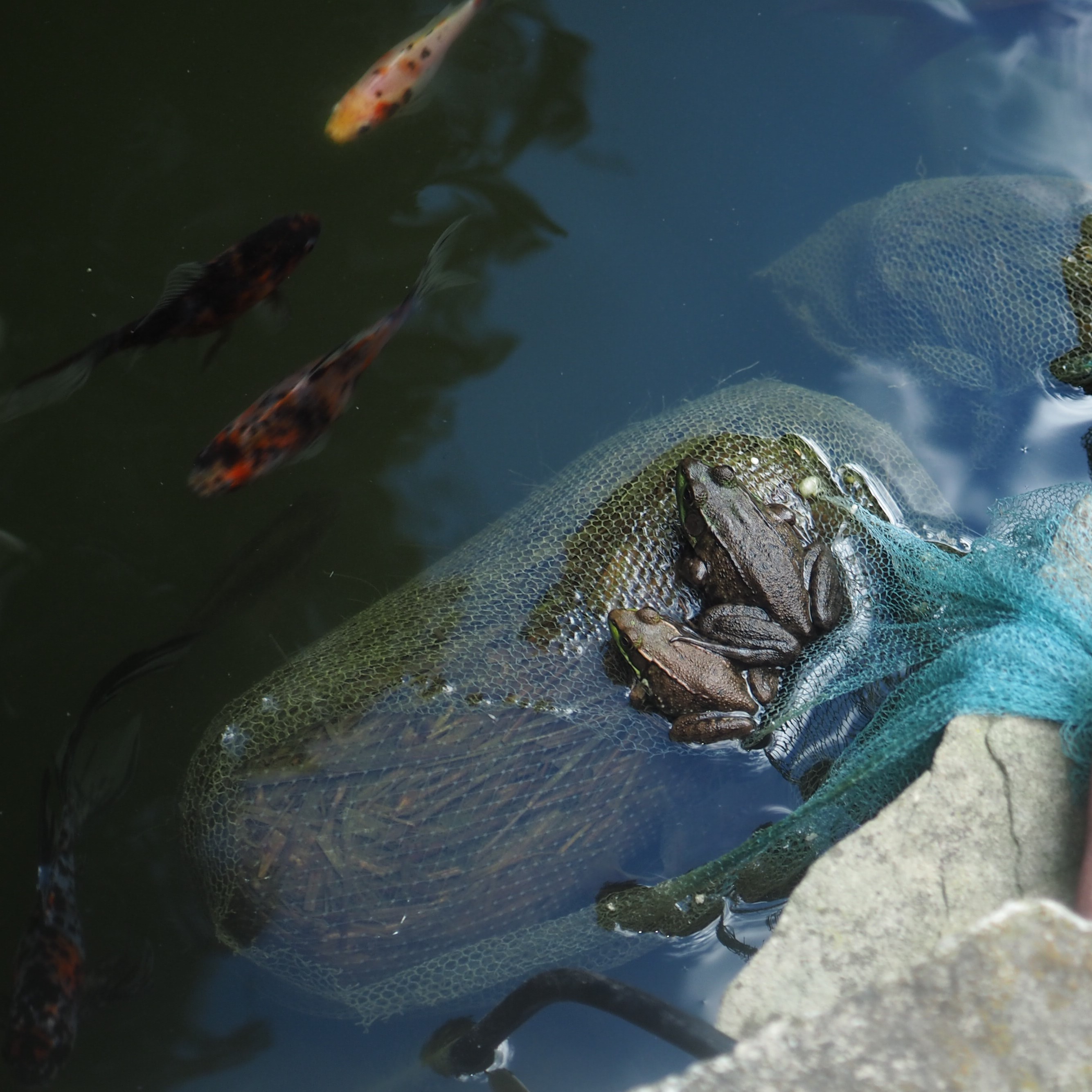
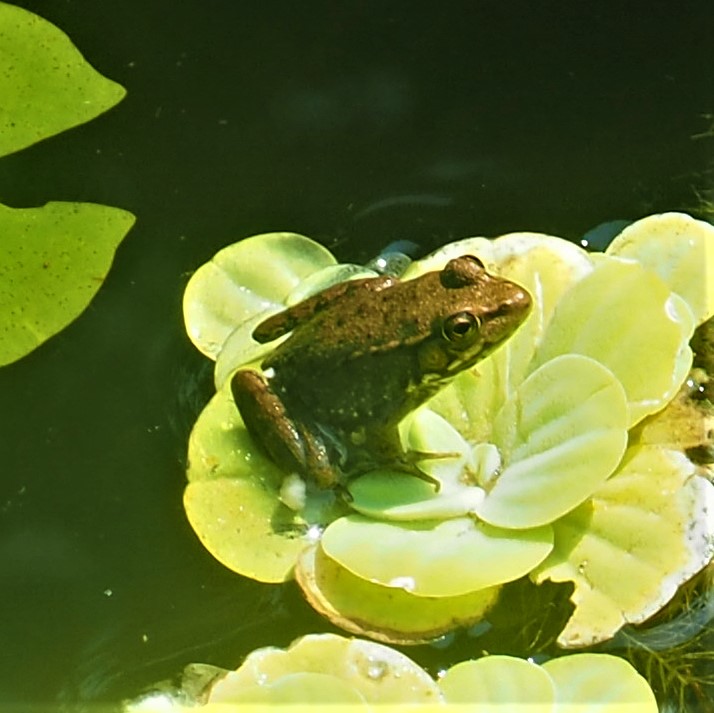
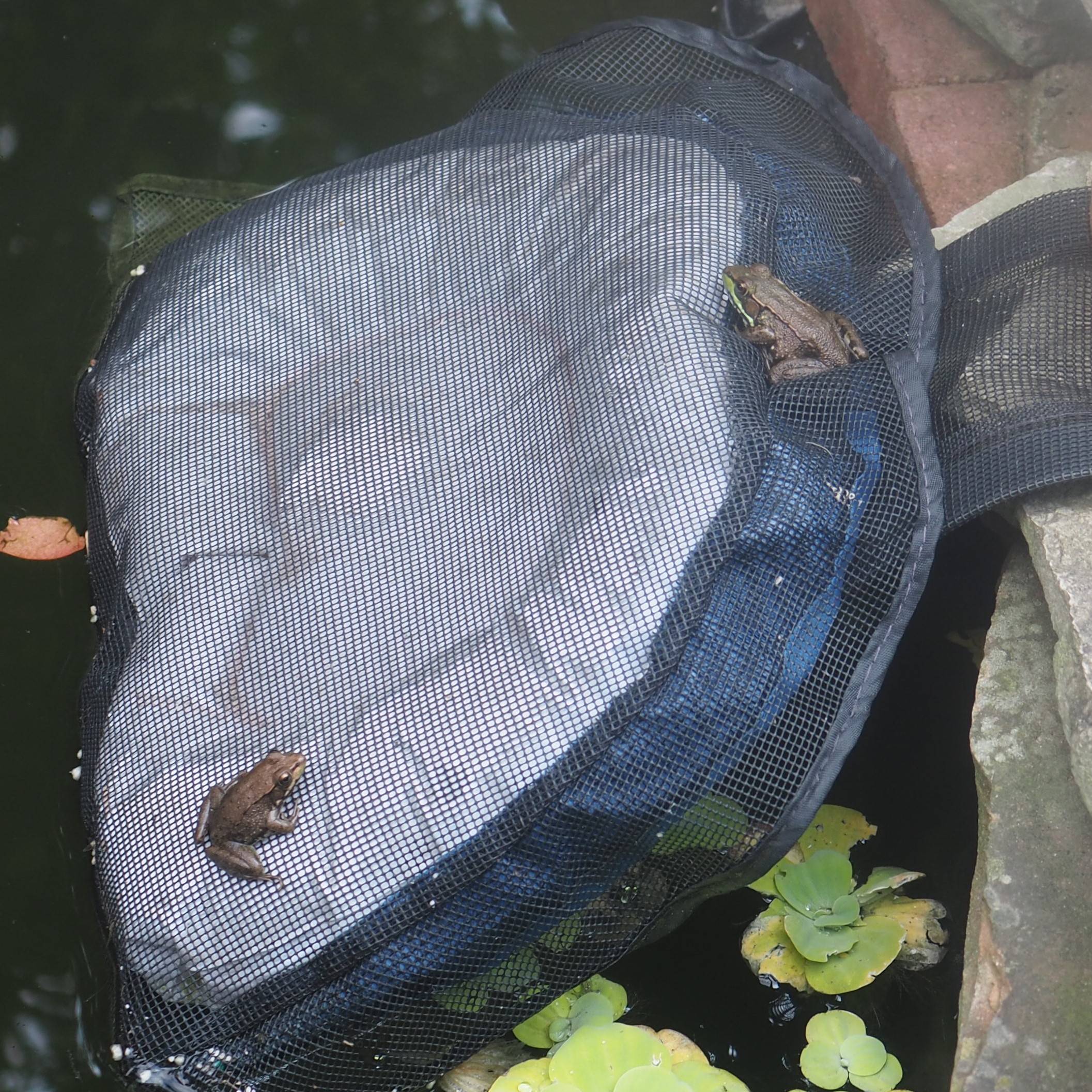
Here are a few fish scenes - they are expecting a feeding so after you see these pictures you will know I am down there feeding them!

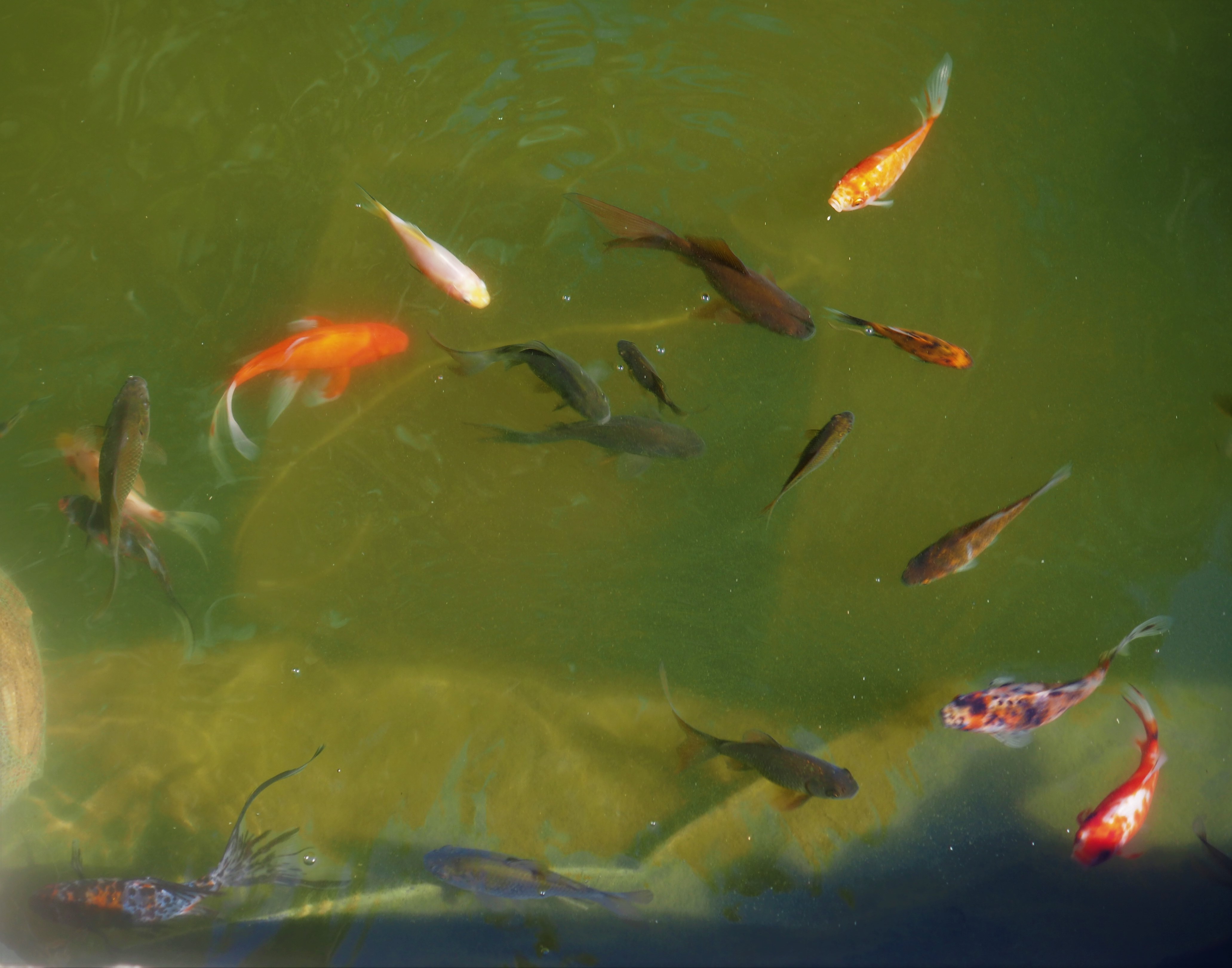
And a few portraits of the genetics experiment we call Goldfish. Picture 1: First we see four of the unusually colored fishes. The orange one is the new MOM. Running clockwise from her we get to Stripe, then Pebbles and finally a very young fish with an amazing amount of color differentiation for his age. That Newbie is featured in picture 2. Third is a fish of Pebbles' cohort, temporarily named Rusty. He is slowly gathering a pattern.
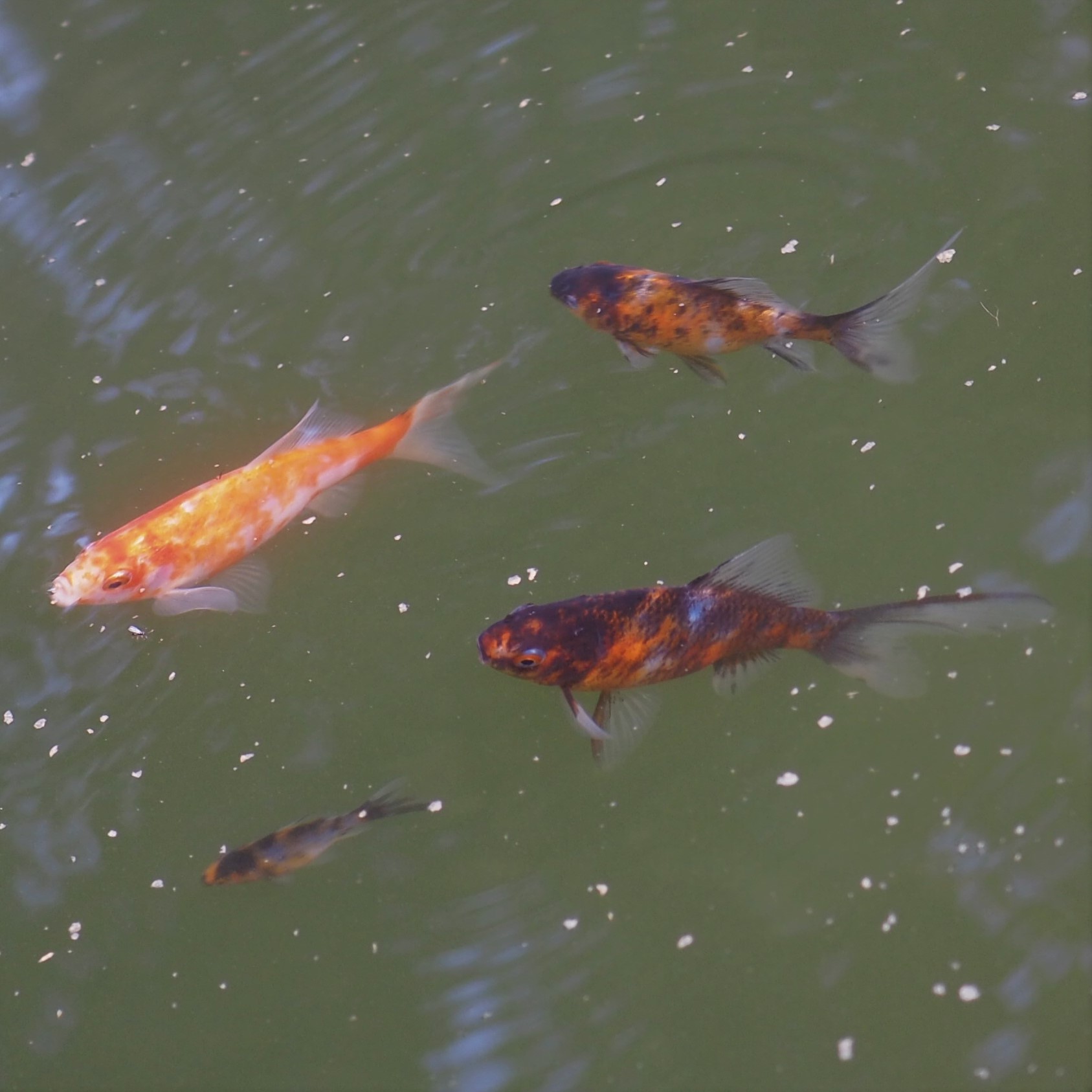


Well, my Dears, here we are at the end of another endless week. I hope you are all doing very well and not going crazy. Sometimes I think it would be better not to read or listen to any "news". I'm enjoying my work with Albion Area Lifelong Learners, which sounds so much nicer than Senior Citizens Classes. And the Film Club, which meets every other week and shows a very eclectic group of movies. Otherwise, practically living in the back yard with my camera, moving a folding chair from place to place, and being rewarded with shots of beauty. I wish you the same feelings with your own choice of activity or, better yet, inactivity. :-)
Love, Martha
Back to September 5, 2021
Forward to September 19, 2021
Back to main menu
copyright Martha O'Kennon 2021































































































































